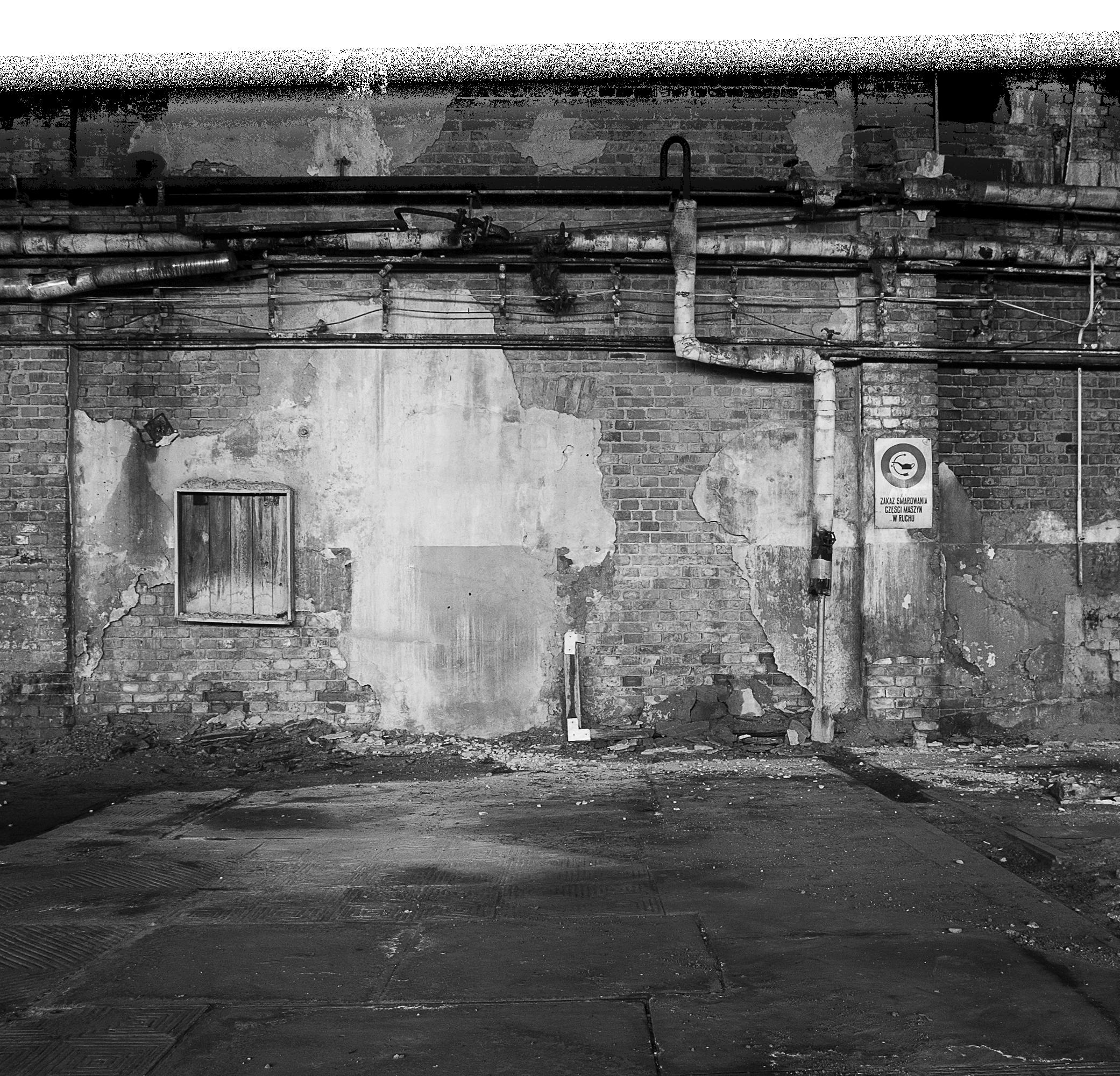






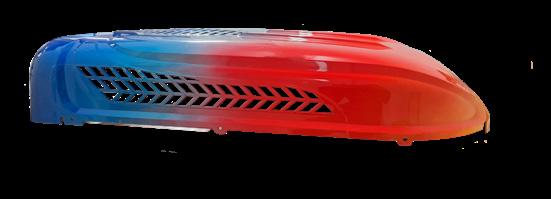


DESIGN Daz











DESIGN Daz
TRUCKIES were reporting an increased police presence at rest stops in North Queensland in the weeks leading up this month’s statewide cattle sector blitz by the NHVR [see story on page 3].
Drivers who spoke to Big Rigs on the condition of anonymity said police have been checking logbooks and conducting RBTs at rest areas in Roma, Charters Towers and Cloncurry.
“The pub test don’t count,” said one truckie familiar with the recent incidents.
“They’ll just bring out the letter of the law which says if you’re in charge of a heavy vehicle you have to have zero alcohol [blood reading].
“But it’s just bullshit, especially at the Cloncurry saleyards now, because it’s so well looked after, a lot of them
THE National Heavy Vehicle Regulator has shared a warning to truckies after coming across a vehicle with a badly worn pitman at a Programmed Vehicle Inspection site in central Queensland.
The damage was affecting the vehicle’s steering ability, which the NHVR said could have resulted in “serious consequences” on the road.
“Excessive wear like this occurs over a long period of
guys, are using it as a regular stop as they travel through Brisbane to Darwin.
“They pull in there, cook a bit of tea, have a few beers, so straight away they’re over the triple zeros.
“If police go in there and breathalyse them, they’re going to get ‘em.”
Another truckie we spoke to said there was no “rhyme or reason” why the police need to be targeting drivers at their place of rest.
“The normal everyday copper in the towns, they’ll help you rather than try and screw you, but the task force in their candy cars, they’re a different breed of copper.”
Local member Robbie Katter said the Queensland government’s priorities have hit a new low by targeting truck drivers with random breath

tests (RBTs) at rest stops where they’ve pulled up for the night.
“It’s an absolute disgrace that police resources are being used to harass truckies at rest stops, where they’ve pulled over after long, gruelling hours on the road,” said Katter, Katter’s Australian Party (KAP) Leader and Member for Traeger.
“This is nothing short of the state government flexing its muscles on the wrong people while ignoring the real issues plaguing our communities.
He condemned what he called the hypocrisy of the state government’s priorities, pointing out that while North Queensland is battling real problems – like skyrocketing youth crime and crumbling roads – the government instead targeted truck drivers
with petty crackdowns.
“While our roads deteriorate and youth crime spirals out of control, police resources are being misused in a money-grabbing exercise.
“We all understand the importance of road safety but harassing hardworking truckies, who are off the clock is over-policing and intimidation. This isn’t about safety – it’s about squeezing truckies for cash.
“The emotional toll this harassment takes on drivers, who are already grappling with long hours on terrible roads and limited rest areas, is unacceptable.”
The increasing imposition on transport companies, paired with nonsensical regulations, was pushing truckies to the brink.
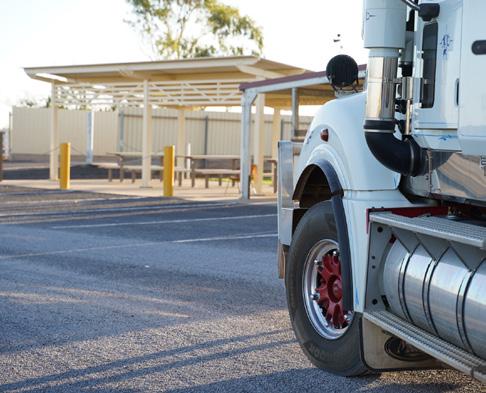

time, meaning regular checks would have found the issue before it became a serious safety risk,” they said.
“A defect notice was issued to the company and the vehicle was prohibited from use on road until repairs were made.”
A spokesperson for the NHVR told Big Rigs that no Infringement Notice was issued, and the NHVR will “ensure education is delivered to the company”.
“Several North Queensland transport companies have reported to me that it’s becoming increasingly difficult to keep or employ truck drivers, as many are unwilling to endure the constant harassment and overreach from the police,” Katter said.
They added: “The NHVR is reminding drivers and operators that regular preventative maintenance and safety checks reduce the risk of serious incidents occurring on our roads and help keep all road users safe.
“Drivers are encouraged to read the NHVR’s Daily Safety Checklist. By taking a few minutes before each trip to check basic safety items on their vehicle, drivers can iden-
Big Rigs has approached Queensland Police for comment.
tify any issues and ensure the vehicle is safe and ready for the journey.”
The NHVR has urged truckies to report safety issues, to make sure you are not putting yourself or others at risk on the road.
“If you feel pressured to drive a defective vehicle, please contact the Heavy Vehicle Confidential Reporting Line on 1800 931 785,” they added.
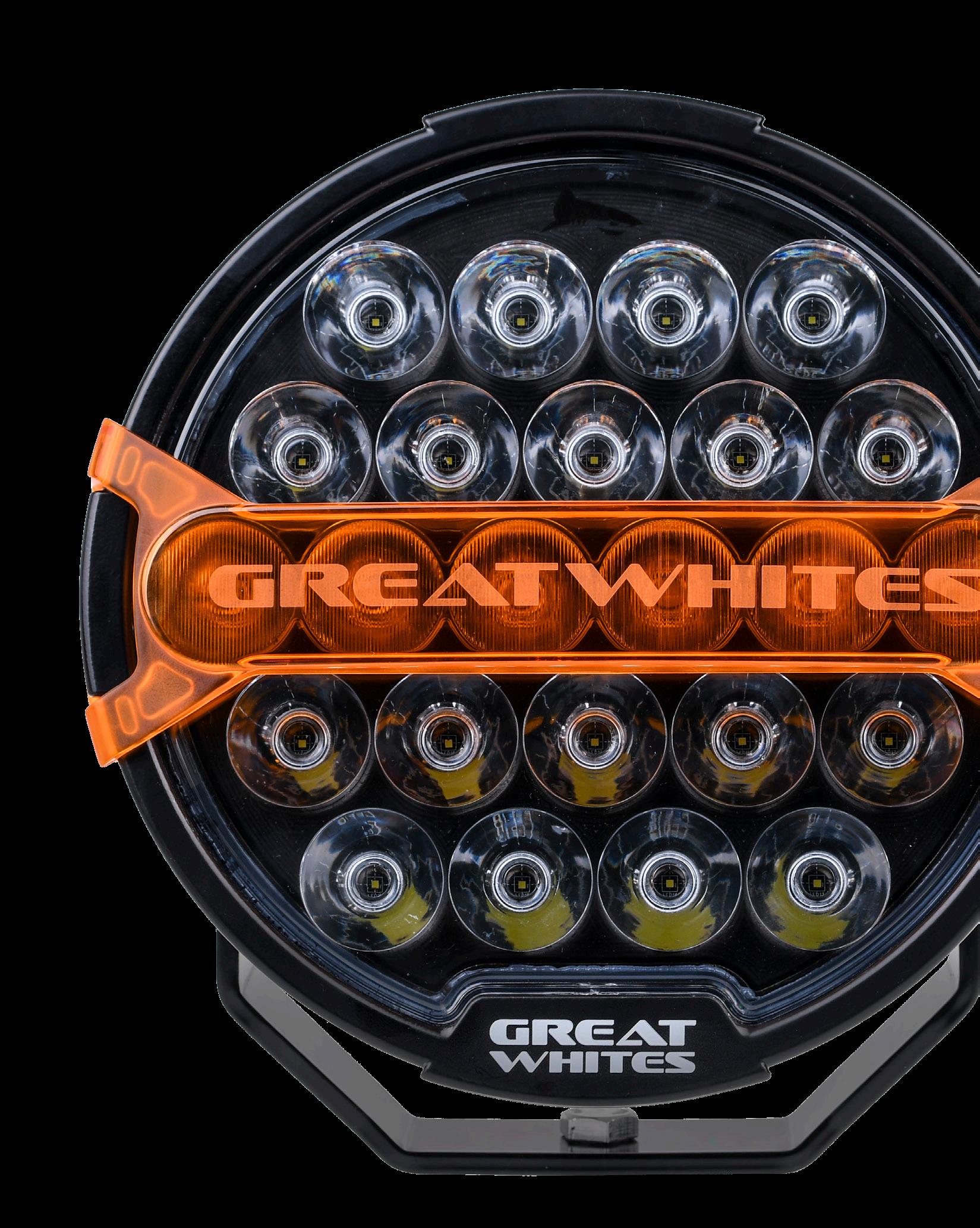

CATTLE sector bosses are urging drivers to remain professional and show NHVR officers respect during a statewide safety blitz this month.
Following an increase in livestock heavy vehicle rollovers in recent weeks, the blitz will focus on compliance with fatigue, mechanical safety, loading, and general compliance with the Heavy Vehicle National Law (HVNL).
During the compliance operation, there will be an increased NHVR presence around scheduled cattle sales, abattoirs and road train routes used to transport cattle.
Frasers Livestock Central Queensland manager and vice president of the Australian Livestock and Rural Transporters Association, Athol Carter, said this isn’t the time for a ‘them and us’ mentality.
“We must work collaboratively with each other to make the industry better,” said Carter, who is also the Central Queensland delegate of the Livestock and Rural Transporters Association of Queensland (LRTAQ).
“It just comes down to having respect for one another during these roadside intercepts – it only takes one to destroy it.
“Livestock drivers are professional and highly skilled people who love their jobs. We

need to remain professional in our conduct and show each other respect.”
Carter said the industry needs to have an overall understanding of the function that the regulator now plays in the livestock sector.
“We are now their customer, and not only do they service us on the road, they are now the one-stop shop as a transport operator.
“They are our one-stop mediator and industry information source for states participating in the HVNL.
“While the drivers might
not be interfacing with onroad intercepts every day of the week, business owners and operators are dealing with the NHVR daily behind the scenes to manage our fleets access, standards and accreditation.”
Carter believes this month’s campaign offers an opportunity to help bridge the “disconnect” of service delivery and functions performed that still exists between the sector and the regulator which only took over on-road compliance and enforcement duties from TMR on April 20 this year.
But he doesn’t believe the vast majority of the livestock sector in Queensland has anything to fear during the campaign.
“There’s always that one per cent, and those operators know who they are.”
LRTAQ president Gerard Johnson, of Gerard Johnson Transport, said he was surprised to hear that the regulator was conducting a monthlong blitz.
He didn’t think the livestock sector warranted the probe, but was waiting to see how it rolled out and what data was collected before commenting further.
He concurred with Carter’s advice for drivers to remain professional at all times, and if they had any concerns to contact the LRTAQ.
“We would be concerned if they were pulled over for any length of time – it always has an impact [on animal welfare],” he added.
“That would be needed to be taken into consideration when intercepting drivers of trucks.”
An NHVR spokesperson said staff will provide information, education and guidance where appropriate, whilst ensuring livestock transportation is safe for the heavy vehicle driver, other roads users and the livestock being transported.

At the height of COVID-19 and the resulting supply chain issues, Ryco’s Z872ST SynTec Oil Filter was put to the test.
Ryco filters earnt their stripes and kept Cummins engines and Australia moving.
Built with innovative synthetic media and robust core design, this filter meets OE requirements. Contact Ryco to discuss your fleet’s requirements at fleetsupport@rycofilters.com.
So, next time you’re servicing your Cummins engine, be Ryco ready.
“The NHVR recognises the livestock industry can be dynamic, with scheduling and driver rosters often determined by bookings at short notice and deadlines for sale days and abattoir schedules,” the spokesperson said.
“The correct preparation, safe transport, loading, unloading and management of livestock are all imperative to ensuring the driver, livestock and other road users are kept safe.”
The NHVR says the operation follows recent data on the transportation of livestock, which indicates an increase in heavy vehicle rollovers.
In one of the most recent rollover incidents, on August 20, the Capricorn Highway at Fairy Bower was blocked for several hours and 20 head of cattle had to be euthanised.
Two weeks earlier, emergency services were left managing cattle after the truck they were being carried in rolled at Condamine.
The driver in his 60s was taken to hospital in a stable condition.
“This operation will help address this increased risk and ensure drivers and operators travelling across Queensland are keeping safety front of mind, and have a clear understanding of the risks associated with non-compliance,” the NHVR told Big Rigs.
Following the transition of heavy vehicle safety services in Queensland to the NHVR earlier this year, the regulator said it is now able to conduct these sorts of operations at both state and national levels across various industries in the transport sector.
The NHVR has also released new regulatory advice aimed at enhancing safety across Australia’s livestock transport sector. To access, visit nhvr.com.au and search ‘regulator advice –livestock’.

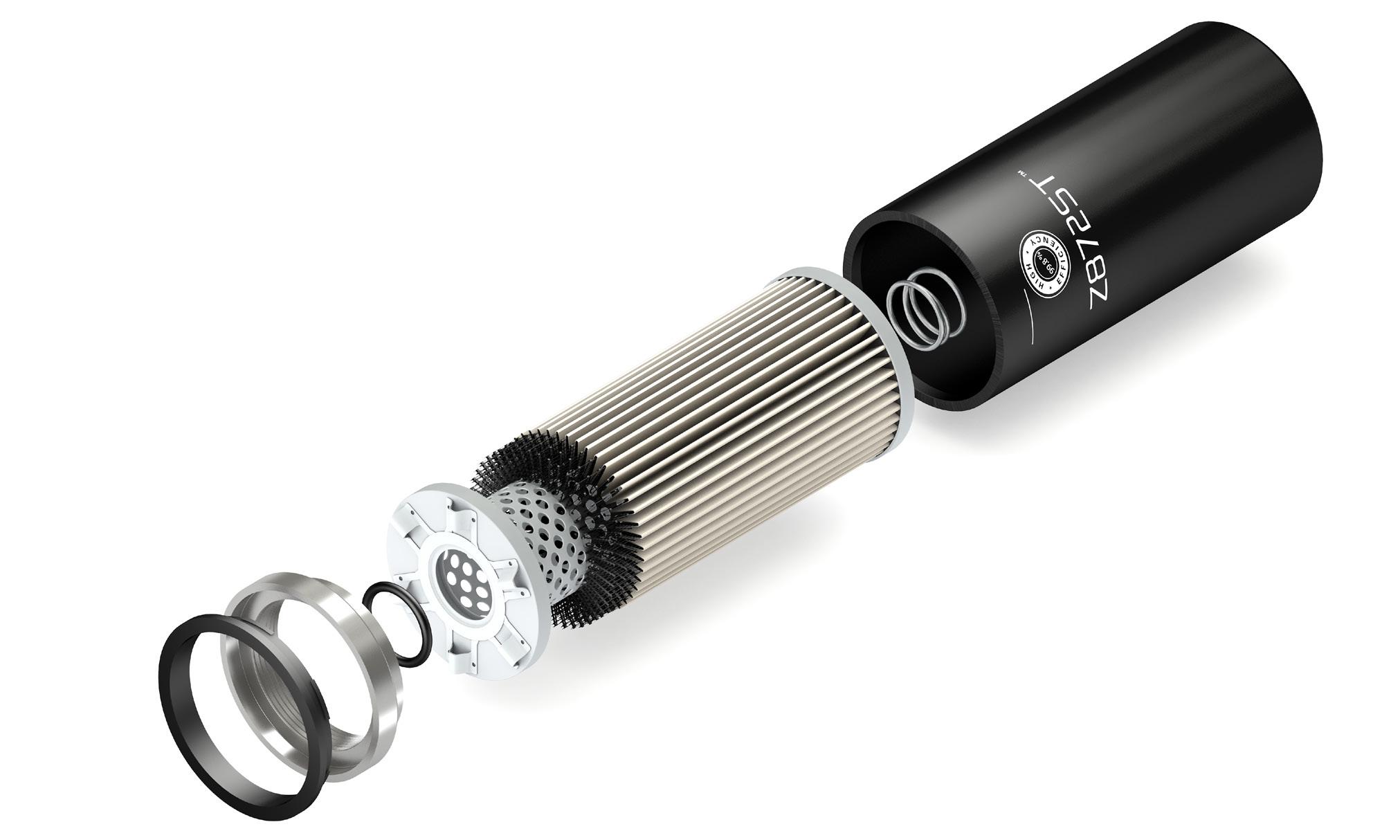




BY KAYLA WALSH
BP Archerfield in Queensland recently let customers know that it will begin towing illegally parked vehicles and unhitched trailers from October 1 – and BP has informed Big Rigs that this is part of a broader crackdown on parking violations.
Thomas Gilmour, Dealer & Truckstop Key Account Lead at BP, told Big Rigs the Archerfield site has been chosen as a starting point for two main reasons.
“Queensland legislation supports the towing of illegally parked vehicles and unhitched trailers,” he said.
“Archerfield is one of our most significantly impacted sites in relation to this issue, so it ticks both boxes for us.”
The BP service station at Archerfield has between 70 and 80 truck parking spots on site.
Gilmour said he had visited the servo three times to inspect the parking situation and found on average 32 unhitched trailers taking up valuable spaces.
“We’re now implementing a zero-tolerance policy on unhitched trailers,” he continued.
“If we can free up 32 parking spaces for truck drivers who need them, we are making a big difference in solving the parking problem at Archerfield and then at other sites.”
Gilmour explained towing unhitched trailers is also a practical first step because it’s easier for Archerfield staff to manage.
“With unhitched trailers, there is no requirement to chalk up tyres or get video or photographic evidence, which is what we would have to do if we were to tow a vehicle.
“We’re starting with trailers and we’re planning to extend that to other vehicles, including looking at ways we can target local vehicles.
“The limit for parking for local vehicles is eight hours and we know that sometimes local companies will park one vehicle during the day and then do a switch at night.
“That’s a tough one to manage because if the vehicle is there for less than eight hours, we can’t tow them.”
BP has signed a contract with Queensland towing company Harvey’s Towing, and unhitched trailers abandoned at the Archerfield site will be taken to one of Har-
vey’s Towing’s impound lots. Charges will apply for towed trailers and vehicles, which are capped under Queensland law (Tow Truck Regulation 2024) as follows:
- a standard tow of a motor vehicle from private property capped at $290.05.
- the on-site release of a motor vehicle from private property capped at $174.05.
- a daily charge for storing a motor vehicle towed from private property to the nearest holding yard capped at $29 per day.
BP has erected signage on site to alert drivers of its new towing practices, along with contact details for the towing company.
“There will be signs upon entry to the site, signs upon entry to the store, and in the parking area, informing customers that we have a towing policy for unhitched trailers,” he said.
“By parking at the site, you are entering a contract with BP and agreeing to follow the rules.
“We do not have to inform you if we have towed away your trailer, and that is the same for cars and any vehicle overstays.”
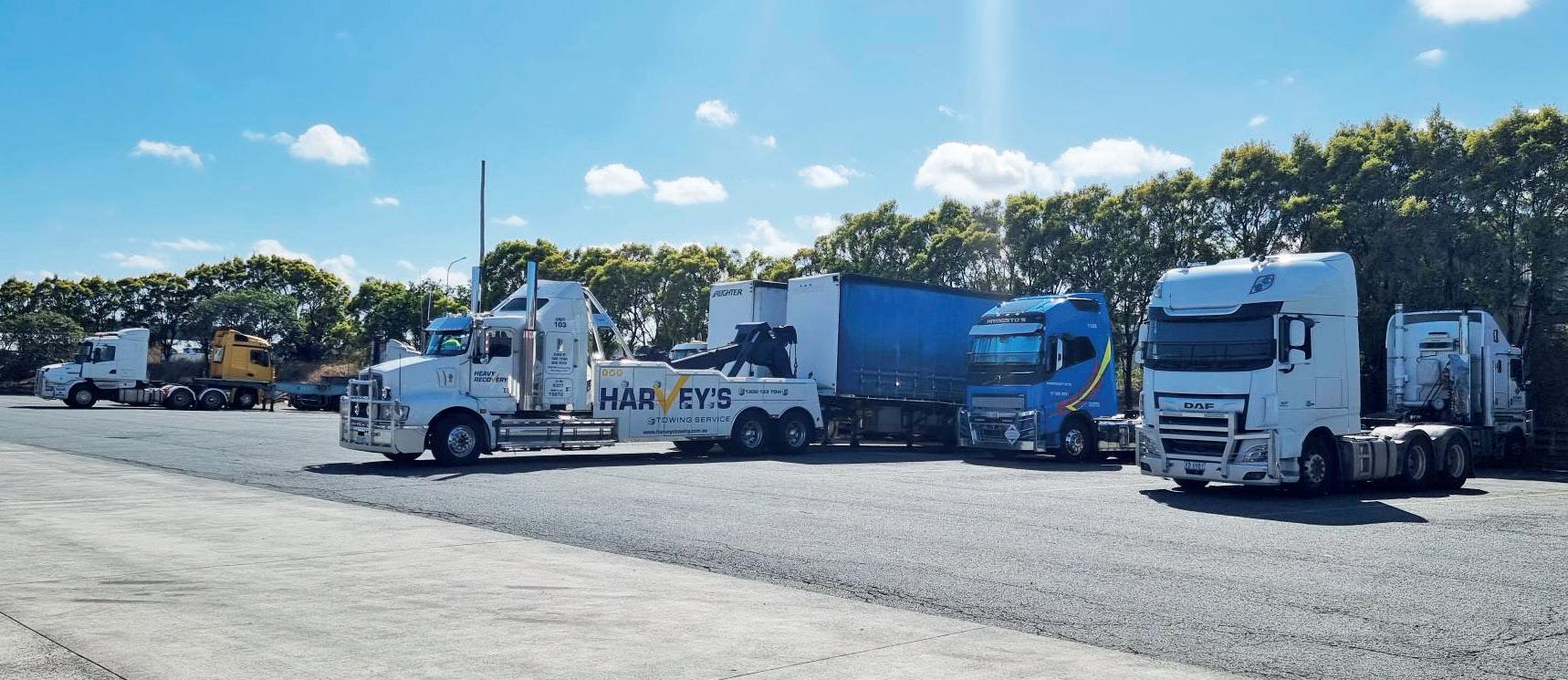
“Archerfield BP offers 24hour parking for interstate truck drivers and acknowledges the importance of reliable parking options so appropriate rest breaks can be taken.”
“At a lot of our sites, we are hoping to get dedicated caravan parking because we know that with the weigh bridges being installed, they are using it a lot more.”
Gilmour said allowances will be made if someone needs to unhitch their trailer for a “genuine” reason.
“For example, if someone has had a bunch of their tyres burst and they need to unhitch the trailer and get it

sorted. If they go in and tell the site, we’re not going to tow them.
“We also have truckies who come in and they have a 36hour rest and they let the site know that they are going to be on the site for 36 hours.
“As another example, we have one truck that has been at a site in NSW for six weeks.
The driver is in hospital and his partner has let us know.
“We covered over the truck for them and facilitated another trucking coming to pick up the load. That’s no problem.”
Gilmour said the main thing they want to prevent is non-
BP customers using the site as a depot or a storage yard for equipment and trailers.
“We work really closely with our partners to make sure we have great facilities inside our stores, from the showers to the food.
“If truck drivers can’t park at the servo, they can’t access any of those things and it makes those facilities pointless.
“If an interstate truck driver is running out of time in their log book, we want them to know that they can pull into Archerfield and have a hot shower and a feed and they’ll be looked after.
“We want to give truck driv-




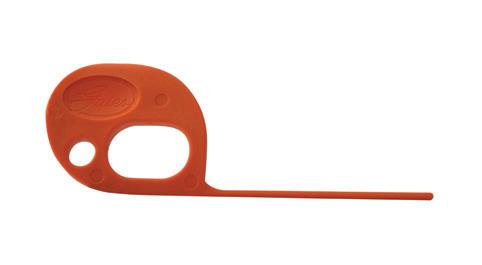
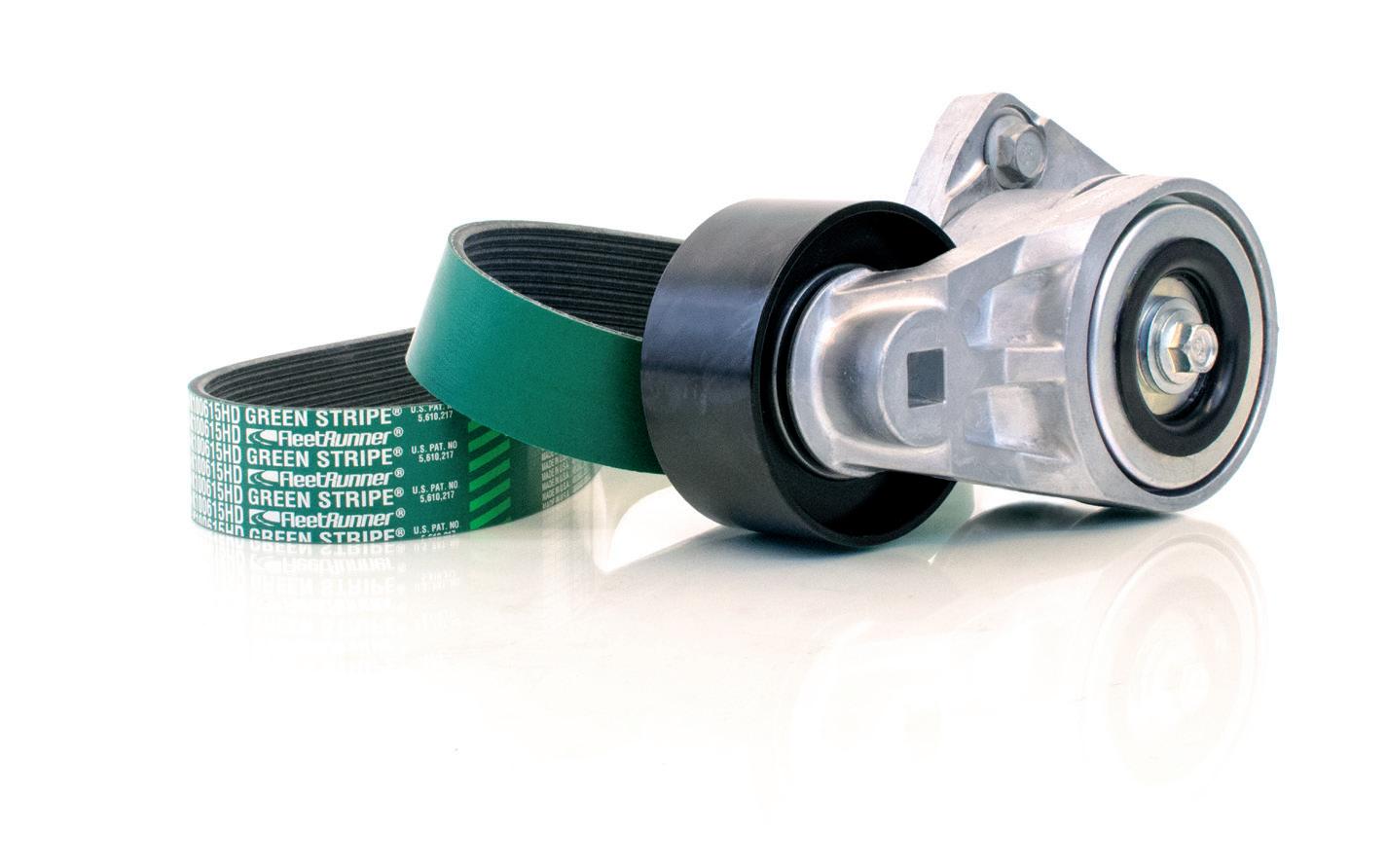


ers a safe place to rest, but we can’t do it if half the truck parking is taken by unhitched trailers.”
He added that the problem is frustrating and was hoping to come up with a national solution to the problem.
“We want our customers to be able to trust that, if they are doing a run from Townsville all the way down the coast, stopping at eight or nine of our truck stops, they will be able to get a park at all of them.”
Gilmour is concentrating on improving the parking situation at Archerfield before moving on to Eastern Creek in Sydney and Wingfield in Adelaide.
“Eastern Creek is particularly bad from Thursday to Monday,” he said.
“The problem with that site is that it is so busy, and it’s in Sydney so space is at a premium. We have arranged a towing company and signage so that’s the next place we will be looking at.”
BP is working with the staff at Eastern Creek to install security cameras.
Gilmour said BP is aware that availability of truck parking is a major issue for truckies, and resolving the issue is a top priority.
“We get an overwhelming amount of complaints about it – the feedback that we’ve

got is that parking is our biggest issue. We are hoping that targeting the unhitched trailers will have a knock-on effect and deter other people from doing the wrong thing.”
At issue deadline, BP was not yet able to provide the number of trucks towed from its Archerfield site since towing commenced on October 1. However, one truckie who was at the servo on the morning of October 2 told us he noticed a big difference in parking availability.
“The back row has been cleaned out,” he said. “There’s normally rigids and cars parked in the spots when they get their trucks. The guys out the front were saying it’s about bloody time. There are plenty of free spaces now.”
Senator Glenn Sterle, a longtime campaigner on the servo parking issue, also said he was pleased to see action finally being taken.
Big Rigs has contacted other fuel companies, including Viva Energy (Shell), Mobil
Australia and Ampol for comment around the issue of truck parking at their service stations around Australia.
Viva Energy and Ampol declined to comment, while Mobil has not responded to our enquiry.

SYDNEY
510 Victoria Street, Wetherill Park NSW 2164 Ph. 02 9756 6199, email: isri@isri.com.au, www.isri.com.au
BRISBANE

BY KAYLA WALSH
TRUCKIES fear that BP’s current crackdown on unhitched trailers and long-term parking could have a negative knock-on effect, pushing the problem onto the streets.
Many of our readers took to Big Rigs’ Facebook page to share their concerns that operators and owner-drivers will be reluctant to shell out on yard space.
“All the streets are going to be filled with trucks and trailers on the side of the road,” wrote Mathew Nelson. “Everyone knows they will never spend the money on a yard.”
Meanwhile Debbie Godwin said that while she thinks it’s a “great idea” to punish those taking up parking spots needed by interstate truckies, she’s seen how it could cause issues elsewhere.
“I’m all for it, but they are now vacating to the likes of Arndell Park [in Western Sydney] and dumping trailers or prime movers for days on end,” she said.
“It’s hard for workers to park and trucks to get into their own depots.
“If their boss doesn’t have a yard to park them in, then
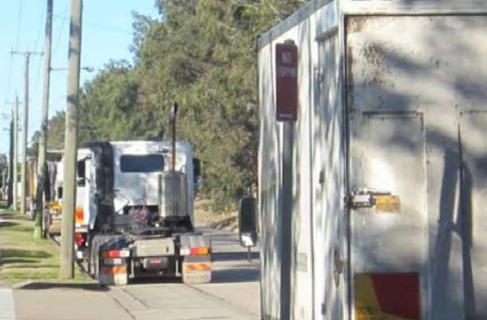
find somewhere else.”
Joel Williams agreed that the streets of Sydney are becoming increasingly crowded with parked trucks.
“I used to know a good parking spot in most industrial suburbs, but lately it’s been ridiculous,” he said.
“The streets are lined with trailers and trucks that look like they haven’t moved in months.
“During the day it’s almost impossible to find someplace to park, there seems to be way more cars than ever.
“I don’t understand – this isn’t just one or two suburbs, this is every suburb.
“They want things done by the book but there seems to be no-one on our side demanding change. The industry is growing – that means facilities need to grow also.”


3/120 Gardens Drive, Willawong QLD 4110 Ph. 07 3275 2044, email: sales@isribrisbane.com.au, www.isribrisbane.com.au
MELBOURNE
Unit 1/569 Somerville Rd, Sunshine West VIC, 3020 Ph. 03 9311 5544, email: sales@isrisunshine.com.au, www.isri.com.au
MACKAY
110 – 120 Maggiolo Drive, Paget QLD 4740 Ph. 07 4952 1844, email: admin@isrimky.com.au, www.isriseatsmackay.com.au
PERTH
408 Welshpool Rd, Welshpool WA 6106
Ph. 08 9362 6800, email: info@mmtisri.com.au, www.mmtisri.com.au
DARWIN
Mobile Sales and Service
Ph. 08 8927 0986, email: info@isridarwin.com.au, www.isridarwin.com.au
ADELAIDE
TAMDELE, 21 Hakkinen Road, Wingfield SA 5013
Ph. 08 8347 1222, email: sales@gitsham.com.au, www.gitsham.com.au
NEWCASTLE/HUNTER VALLEY
Unit 2/13 Hinkler Ave, Rutherford NSW 2320
Ph 02 4932 0600, email: sales@hvss.com.au www.isri.com.au

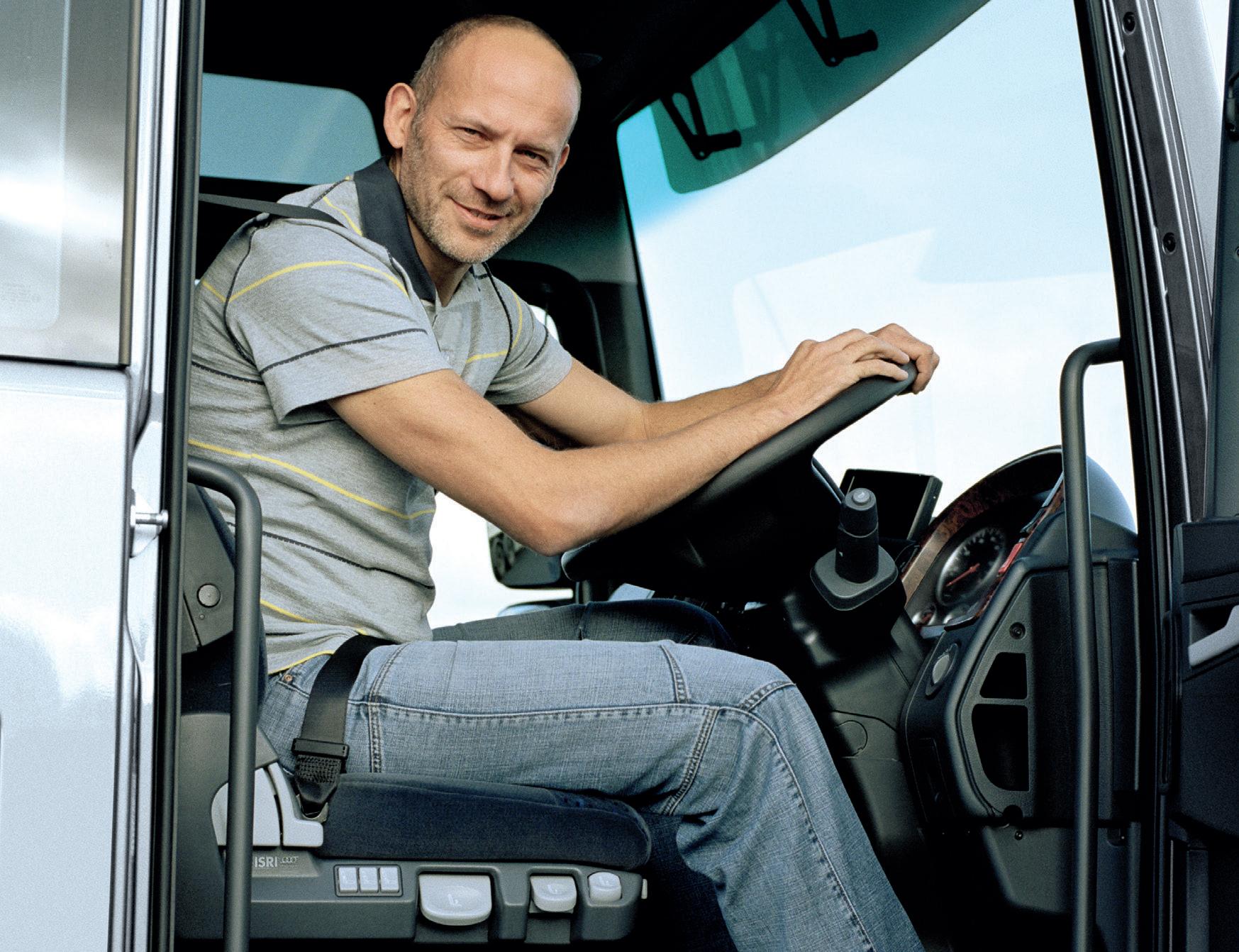













BY KAYLA WALSH
BP’S announcement that it will initially be focusing on parking violations at its Archerfield, Eastern Creek and Wingfield sites has prompted many truckies to suggest other problem servos.
Interstate driver Wayne Rogerson told Big Rigs that the BP site at Epping in Victoria is “notorious” for trucks and trailers being parked for extended periods of time.
“We drivers have to sign a book to say we are parking for more than the standard length of time,” he explained.
“However, some people choose to use it as their own private depot – they even have mechanics come out to the site and perform services there!”
Rogerson said there has been a Volvo prime mover and an old bus parked at Epping for months without being removed.
“Yesterday, when I was there, the site had three single trailers and six B-double sets unhitched,” he said.
“There are also a couple of
blokes that park their trucks at the site every day and put their car in its place in the morning, so they reserve themselves a spot for their truck in the afternoon.”
Rogerson also pointed to BP Tullamarine and BP Dandenong as sites that need attention.
“Tullamarine BP is also a site that is abused by people parking their trucks every afternoon, getting in their cars that they park there in the morning and going home.
“At Christmastime last year, I was using BP Dandenong and was told not to park my prime mover in the car parking area while I was resting or they would fine me.
“But for five weeks, there were four rigid tippers parked on site, taking up spaces that people like me need to use.”
BP Truganina is another servo that announced they would be cracking down on longterm parking last year.
But according to truckie Shannon Suttle, who runs between NSW Central Coast, Sydney and Truganina, park-

ing is still very much a problem at the site.
“Trying to get a park early morning is near impossible between the Ampol and BP at Truganina.
“The arguments you get into
because the local drivers are holding spots for their mates.
“Sometimes you end up going over your hours just trying to find a spot.”
He said there is signage on site warning about parking
limits and towing, but he has never seen it enforced.
“You can report it to management and BP Complaints and all you get is ‘We’ll look into it,’” he added.
Meanwhile Adam Black said
he wished BP Beresfield would follow suit.
“Parking here is hard to come by,” he added. “BP will take your $2000 in fuel, but heaven forbid if you want a shower or rest!”

OUR recent stories online about BP’s parking crackdown have sparked a massive reaction from readers, with many of them praising the company’s decision to tow unhitched trailers and illegally parked vehicles from Archerfield and other busy sites.
Many truckies also said it was “about time”, and they wish BP had done this years
ago, while others were not convinced that BP are going to stay true to their word. Take a look at some of the comments from our readers below.
Peter Macc
“Good on them. Freeloaders are using these places as their depots or free parking while they’re home having a break
instead of paying to park in a compound.”
Fiona Goodman
“Good stuff. The amount of times the husband hasn’t been able to shower or get a feed thanks to these inconsiderates is too often.
“Trailers are being left at roadhouses instead of yards.”
David Lopes
“Thank goodness! Finally all these 457 drivers will need to pay for parking just like the rest of us!”
David Muller
“Why has it taken so bloody long?”
James Arnoutse
“This has been going on for years, as far back as I can remember.”
Stelios Papoutsidis
“I’ll believe it when I see it. Not the first time they’re ‘going to crack down on freeloaders’. Every few months the same crap comes from BPs but never any real action.”
Courtnay Anderson
“Pfffft, they have been saying they’ll do this for years.”
Brad McDonogh
“It’s all good to threaten to tow trailers, but until it actually happens, nothing will change.”
JJ Easter
“Good in theory, but how are they going to manage that if a customer drops one of their trailers to go and do a delivery with one trailer because it isn’t on a B-double route or not a
B-double friendly site?
“Comes back after unloading to do their second trailer and plans to then return to fuel and go to bed?
“What happens to the trailers left alone while away unloading or loading? What if they need to go and have a mechanical issue resolved? Go to an appointment?
“A changeover driver gets to the site two hours before their changeover turns up. Unhooks from the trailers so they can have an undisturbed sleep while waiting?
“I don’t think this is a onesolution-fits-all.”
Niell Graham
“Let local blokes take their truck home at night and park it outside their own house – that way that’s half the problem solved.”
Jim Gatt
“Also you can add the body trucks. Basically if it’s a day cab without a driver, hook her up!”
Adrian Bates
“Yep, this is a big problem. Depending on each state’s legislation on private property towaways is the big issue.
E.G. Westfield Shopping Centre had the same problem – that’s why they went to a boom gate system.”
Dave Cowan
“The problem isn’t unhitched trailers, it’s local yokels using them as a depot.”
David Wright
“Put a pin lock on the trailers and charge them $1000 to have it unlocked – they will soon get the message.”

BY KAYLA WALSH
A South Australian truckie has been hailed a hero after risking his life to save a 70-year-old woman from her burning car.
Michael Sleep, who drives for Paris Creek Farms in Meadows, was travelling down the Princes Highway between Tantanoola and Millicent when he came upon the scene of a fiery head-on crash between two cars.
Without stopping to worry about his own safety, he pulled over and ran to help grandmother Cleone Bryant, who was trapped inside her vehicle as it began to be engulfed in flames.
Once Bryant was safely out of her car, Sleep immediately went to help the female driver of the other vehicle.
The other driver was not seriously injured, while Bryant is now recovering in hospital with broken ribs and a
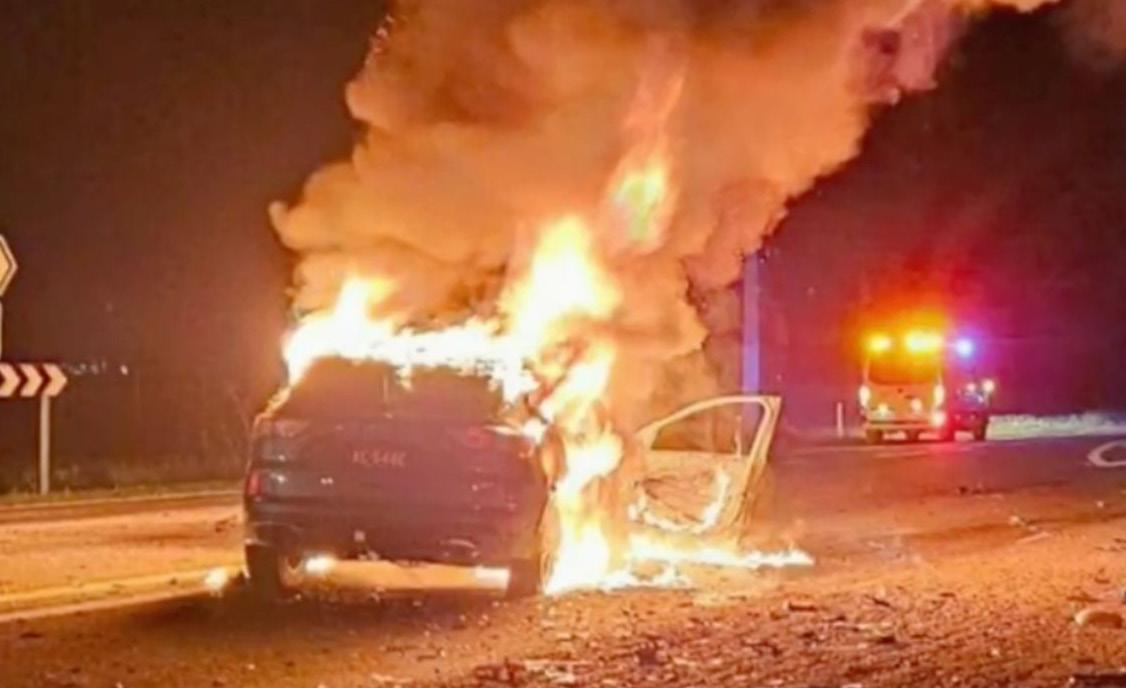
cracked sternum.
After the accident, Bryant’s family were initially unaware of Sleep’s identity but managed to find him by putting a call out on social media.
Kerri Bryant, Cleone’s daughter-in-law, told Big Rigs: “We have been amazed by the power of socials to have found Micheal.
“My husband has spoken
to Micheal and thanked him obviously.
“We hope to catch up with him when Cleone’s out of hospital as she would like to thank him personally.
“He really is such a hero.”
Kerri said that Cleone has a long recovery ahead of her, but she is in “good spirits”.
Meanwhile Cleone’s son James also expressed his gratitude to Sleep, calling him an “absolute legend”.
“You saved grandma’s life, you are a hero to us all,” he added.
Sleep declined an interview with Big Rigs, preferring not to take too much credit for his act of bravery.
“I don’t really want much attention,” he said. “I just happened to be in the right place at the right time.
“I’m sure anyone that came across that situation would have done the same.”
“I’m just glad both ladies are going to be OK.”
Sleep’s courage and quick thinking has led to him being nominated for an Employee Recognition Award at his workplace.

“He has been praised by us at work and our team have nominated him for an award.
“We hope Cleone has a safe and speedy recovery.”
Caitlin Johnson from Paris Creek Farms said: “Had he been 30 seconds earlier, he could’ve been caught up in the chaos, or had he been 30 seconds later, the outcome could have been so much worse.
BY KAYLA WALSH
A professor at Griffith University in Queensland is appealing for truck drivers who have been first on the scene of road accidents to get in contact with him.
Dr Darren Wishart is carrying out research as part of the Queensland Trucking Association’s First on Scene Incident Response Training Program, with a view to better understanding what drivers are faced with in these difficult situations, and how they respond.
The study is funded in part by the Motor Accident Insurance Commission in Queensland, and involves a collaboration between the QTA, the Queensland police and St. John’s Ambulance.
Wishart told Big Rigs: “How this initially came about was, the QTA had said that a lot of truck drivers in regional Australia would be the first to come across the scene of a crash.
“In some instances, emergency response could take anything up to an hour.
“A person that’s first on scene in those situations may be exposed to things that not everyone would be able to cope with.”
The QTA, Queensland police and St. John’s Ambulance got together to design a training program to educate heavy vehicle drivers on what they should do if they are first on the scene of an accident.
A total of 129 truckies took part in the face-to-face



course, which was run at seven different locations around Queensland.
“It’s about what to do when you arrive, making the scene safe, what to do in terms of first aid, and what to do after the event in terms of self-care,” Wishart explained.
“There was significant improvement between pre- and post-training in terms of knowledge and confidence around being first on the scene.”
The QTA are currently in the final stages of developing a set of resources to make the training available to more truckies, with “toolbox talks” that companies can share with their staff, as well as an online component.
Wishart is now hoping to


speak to more drivers who have been first on the scene of accidents, to gain further insight and refine the training offered by the QTA.
“We are primarily interested in speaking to any of the 129 drivers who went through the training, to see if they have been first on the scene of an accident since then and if they found the training helpful.
“But of course it was only a pilot program – we hope to reach more people when the QTA rolls out the training in the new format.
“I am also interested in speaking to truck drivers who haven’t undergone the training but have been first on the scene of an accident.
“Any information provided could help improve the train-
ing program.”
Wishart said being the first on the scene of an accident is a stressful experience and he wants to make truck drivers aware that help is out there.
“Many of the truck drivers I spoke to could still recall the incident in a lot of detail, no matter how long ago it happened,” he said.
“It was still in their minds, even a decade later.
“Many truck drivers are not aware of the post trauma care that is available, and we hope to improve coping strategies, mechanisms and resources so it doesn’t get to the point where a driver has to quit the industry.” IF you would like to take part in the study, email Dr Darren Wishart at d.wishart@griffith.edu.au.
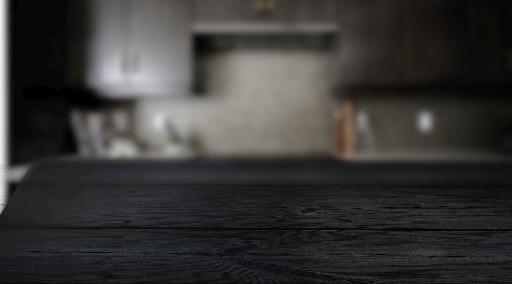

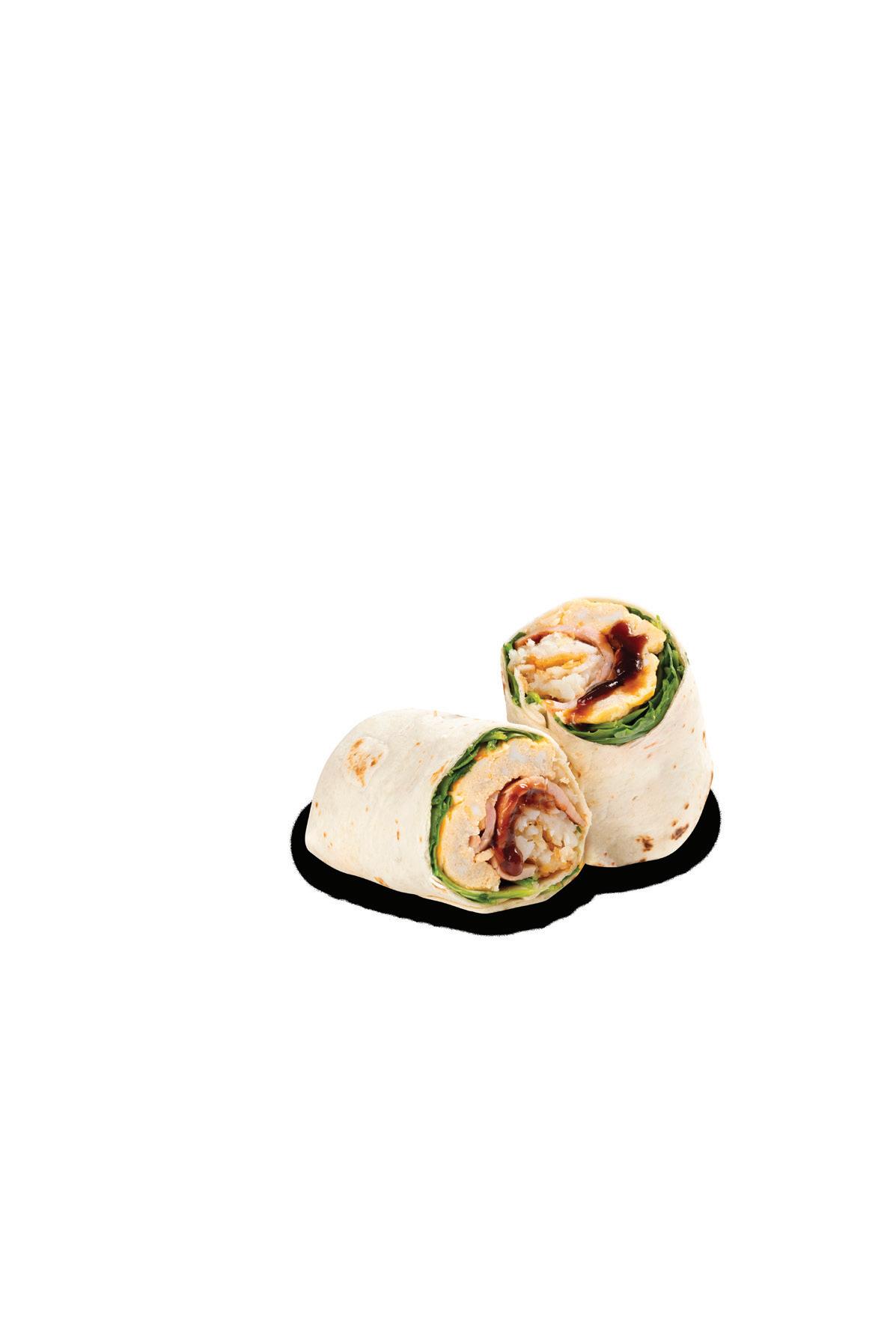


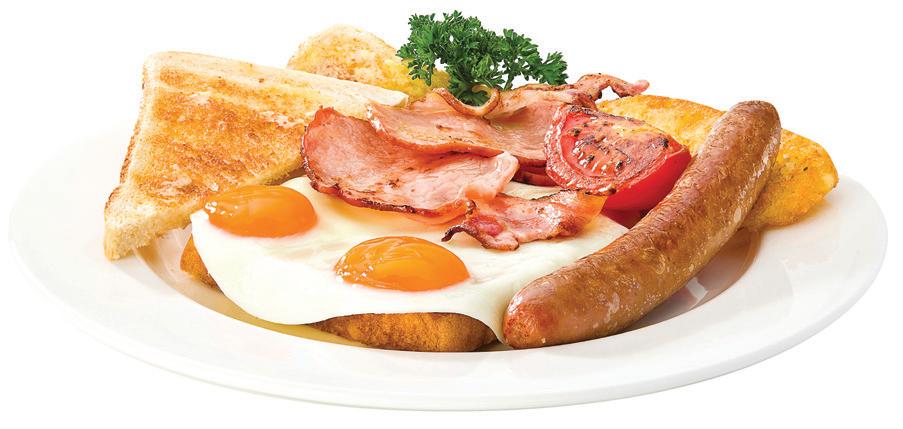


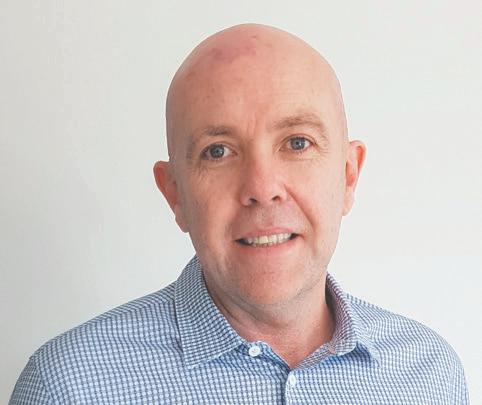
EDITOR
JAMES GRAHAM
REST assured; we’ll be watching the crackdown on the servo parking closely.
We know, you’ve heard others try and police this issue before without success.
But this new bloke in charge at BP, Thomas Gilmour, does seem to be making all the right noises – see pages 4-6, if you haven’t already – with towing underway as we went to print.
That’s more than we can say for the other main players who either declined to comment, or ignored our approach.
Maybe they’re sitting back and waiting to see the impact of BP’s new hardline measures before following suit. We can only hope that’s true.
While state governments drag their feet in building more rest areas, it’s imperative that fuel giants play their part in helping drivers manage their fatigue.
Speaking of fatigue management, it was concerning to hear reports of Queensland Police visiting truckies’ rest areas in the central state (see page 2).

I read with interest the article on MC licencing here in Queensland on page six of the most recent issue of Big Rigs [Truck licensing loophole exploited, September 27 ] and would like to make some comments.
The first thing that I actually take offense to is that your source says that the quality of driving schools up here is abysmal.
I have been doing this job for 13 years now, for the same company, and take my job very seriously. We are training people in a weapon of mass destruction, and they need to know how to do it safely.
To bundle all driving schools into a comment like that is very poor, and unless you have seen how they train or
what they do you your source can’t really comment on that.
Secondly, there is actually a guideline for MC licences that the truck should be 75 per cent loaded for testing purposes – this is written into the contract that TMR has with RTOs. The same is not true for MR or HR, however, a number of schools choose to have some weight on the truck. For instance, our trucks run with 4t of concrete blocks on the back, which is around 40 per cent of their capacity.
Thirdly, if you ask any of my students who come and sit for an MC licence, it’s not that easy. Firstly, there is a 50-question test they must complete before driving. They get their learner guides
and practice tests approximately three weeks prior to training, and then on the first day they must complete this under test conditions (not open book) and achieve a result of no more than five incorrect answers. Secondly, the practical driving test, once training is complete, is a 2.5 hour driving test around Brisbane and sometimes out as far as Toowoomba so that they learn how to drive the range correctly.
In this time there are only certain things they are allowed to get wrong before they fail. Just like the tests conducted at Queensland Transport, you will fail for not doing your coupling and uncoupling procedure correctly, you will fail for speed,
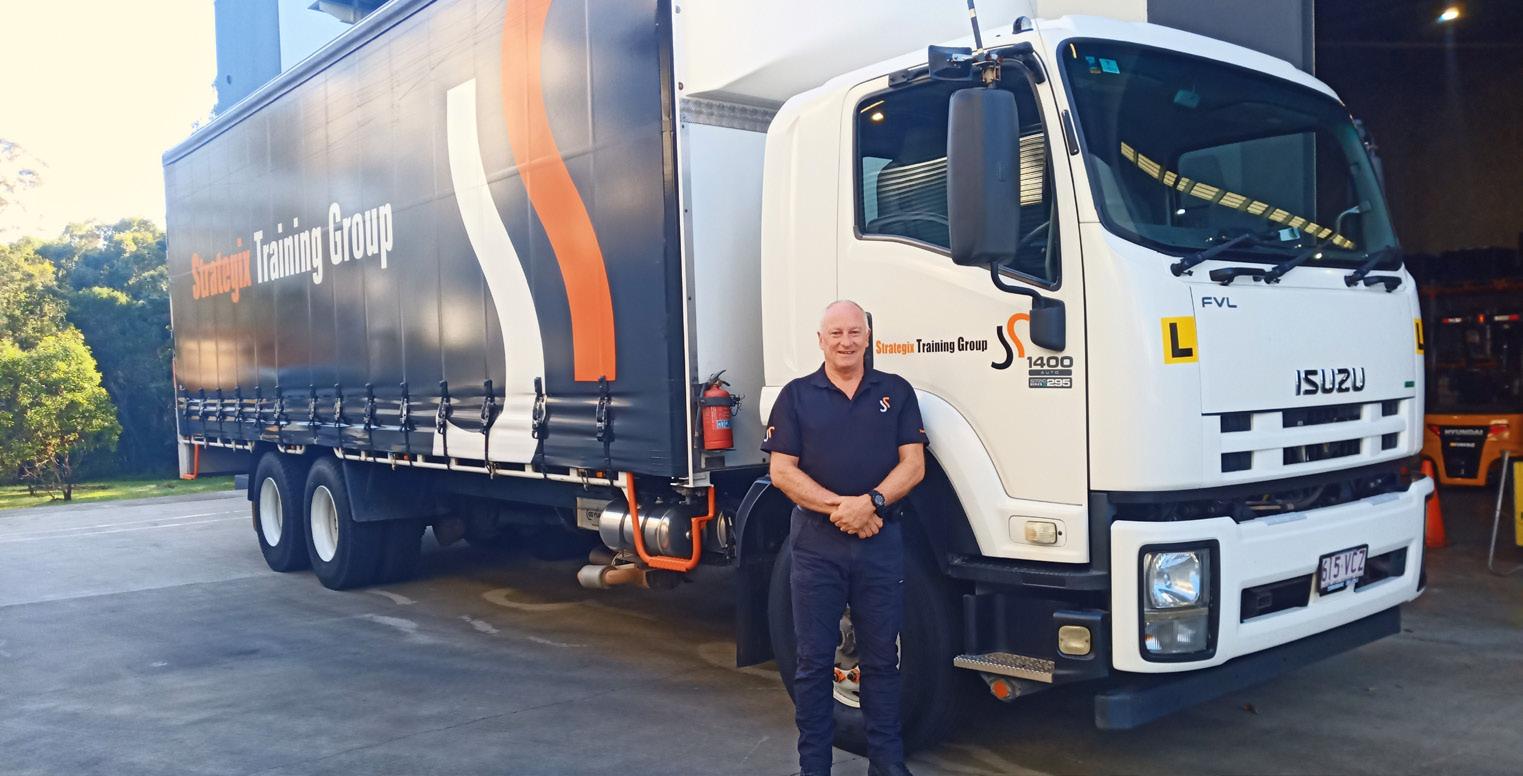
running red lights or failing to give way in a 26m long vehicle.
Personally, I probably fail 40 per cent of the students first time, as even after 16 hours of theory and practical they are still not ready or safe enough to drive a B-double.
Fourthly, on the topic of truck schools “getting away with too much”. I’m not sure what your source means by that, but we had an audit in November last year and passed with flying colours due to the systems we have in place and the way we train. We were actually found to be doing over and above what is required. Again, this statement puts all training schools in the same basket, which is not correct.
Fifthly, as far as trucks go, when you come to us you train in full-size, 14-pallet body heavy rigid Izusus. When it comes to MC we train in rigs that are minimum 25m long. So, when you are done you are indeed job-ready. Training in the smaller vehicles that are not much bigger than my 4WD is not something we do. We have recently won an award from the QTA for Excellence in training and skilling for the ‘Road Ready’ program we have been running this year.
That, I believe, speaks volumes as to what we do.
Lastly, a lot of what is spoken about around time frames and weights and size of vehicles is directly relatable back to Queensland government
policies around this stuff. Many driving schools are working to that, and so technically are not in breach of anything. So, for this to change it has to come from the government.
I do agree that time frames around MC licensing in particular are way too short. There certainly needs to be some change around that.
As I hope you can see, I am passionate about this and really don’t like being put in the same basket of Queensland schools getting away with too much.
Sincerely,
Ian Stanley Senior Heavy Vehicle Trainer and
Assessor Strategix
WHEN I started 31 years ago with Les Walkden in Tasmania on a brand new CH Mack, towing a tri-axle semi-tipper carting coal statewide, semis like that were the normal and biggest on the road. Maximum weights were 41.5 tonnes all up with tolerances. Les applied for a permit to run heavier over the drive (which was costly, but price effective if
full weight was carried all the time) and I was one of the first in Tasmania to trial 44 tonne all-up, running heaviest weight on a semi with tri-axle trailer at the time in 1994.
Other than road trains way up north (e.g. Western Australia and the Northern Territory), that was Australia-wide normal.
But geez look now at the
combinations, PBS systems, weights, non-ethnic drivers and young super truckers, that need two trailers at least from the get-go.
Where does it stop?
The industry battles to keep up with itself alone without freight rates chasing along behind trying to keep up, but a lot of the time don’t.
– Heath Rice

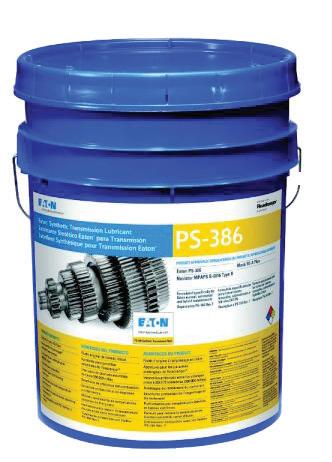






DONNY MacGregor is the man behind the wheel of the Bendix Racing Team’s B-double transporter, bringing over $10 million worth of race cars, equipment, truck and trailers to Supercars events across the country.
So, there’s a lot riding on his shoulders.
The pressure is on every time the transporter leaves the team’s Gold Coast headquarters for a race round, but he says risks are mitigated with meticulous preparation and regular safety checks.
MacGregor began his career as a panel beater and painter before a self-professed “love of all things shiny” had him move from fast four-wheeled vehicles to large but equally shiny trucks.
His first truck driving role
was behind the wheel of a 2006 model Kenworth rigid, while his current tenure with Matt Stone Racing (the team behind Bendix Racing) began in 2018.
“The improvements in technology from the trucks of 20 years ago to what we have now are huge,” MacGregor said.
“Back then all the safety systems were rudimentary – now most modern trucks are well equipped with active safety features. Equipment such as advanced emergency braking, adaptive cruise control, forward collision warning and the like, certainly make for a much less stressful drive.”
MacGregor’s current ride is a DAF XF, that’s equipped with Bendix braking hardware straight from the man-
ufacturer’s production facility in Bayswater, Melbourne – though he’s also had the opportunity to test out the new DAF XG+ model recently too.
The truck is still running its original brake pads and according to MacGregor, the performance of the Bendix ProTrans Disc Pads has been strong.
“From my perspective the ProTrans pads are delivering on every level. The combination is grossing around 54 tonnes and they pull up the truck very nicely – there’s consistent pedal feel, the pads bite well and they’re durable,” he said.
“And from a comfort and usability standpoint, they’re also very quiet and produce minimal brake dust, which

helps keep the truck cleaner.”
Along with adhering to the truck’s regular OE maintenance schedule, it’s also rolled over the pits every year for its NHVR inspection. Additionally, more checks occur at race headquarters prior to the transporter departing for each round of the series.
“We go over the truck and trailer combination very closely, checking anything and everything, things like lights, tyres, brake hoses and fluids, trailer couplings and
load restraint; we also make sure all first aid equipment and PPE gear is as it should be,” MacGregor said.
While braking technology and using quality friction materials goes a long way in keeping the transporter and its precious cargo safe out on the roads, driver skill is also a major contributor to minimising the chance of an accident or close call.
MacGregor’s main tip in handling the transporter is to drive conservatively and save
the brakes for when you need them.
“Drivers should make the most of the technology that’s available in the latest generation of trucks,” he explained.
“When descending hills, you want to let engine braking and the transmission retarder do the work to maintain a safe and controlled speed. Dab the brakes if necessary, but save them for when you need them rather than cooking them on steep hills.”
BY KAYLA WALSH
A Queensland truckie with three decades of experience on the road has set up a Facebook group to help new drivers learn the ropes.
John Bellam from Pittsworth is sharing everything from videos on how to unhook trailers to advice on getting a start in the industry. His Facebook group, “Learn the old school way”, is only a few weeks old but has already received a great response with more than 600 members at deadline for this issue.
Bellam, who is currently a driver with MFT Haulage, told Big Rigs: “I decided to set up the group because I would see a fair few young people
asking questions about how to get into trucking.
“My dad was from the old school and he taught me from a young age about the industry.
“I thought I could help the next generation and pass on some of that knowledge.”
Bellam said modern truck driver training programs can leave a lot to be desired, and he recommends starting from the bottom and working your way up.
“I got my first job washing trucks when I was 18, and then I got a job in a timber yard driving a little body truck around town.
“I had plenty of experience before I moved up to driving semis interstate.
“These days because of the driver shortage, if you have a licence and any experience, you’ll probably be put on –but I don’t think that’s the best way to do it.”
He said it’s a shame that modern company policies often prevent drivers taking their kids on the road with them.
“I used to jump in the truck with my dad when he was driving interstate, and he taught me how to load and unload, how to change the tyres and wash the truck,” he added.
Bellam thinks some of the camaraderie of trucking is being lost, with truckies sometimes reluctant to give guidance to newbies.

“There are a lot of truckies out there who don’t want to pass on their knowledge,” he said.
“Or they take pictures of mistakes people have made and make fun of their misfortune on Facebook instead of
helping them.
“My dad always said, never be a know-it-all in this game. No-one’s perfect, and I’m still learning to this day.”
One of the main lessons Bellam wants to share with younger drivers is to take your time.
“I see drivers going at top speed through roadhouses to the fuel bowsers, but I always got taught to slow down and put it in first gear,” he said.
“You might be panicking that you’re going to run out of hours in your logbook, but it’s not worth risking safety trying to rush.
“If you run out of hours, just pull up at a parking bay and wait until your logbook comes good again.”
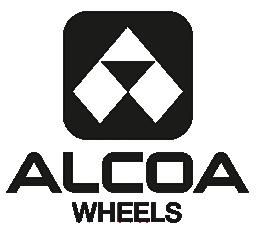



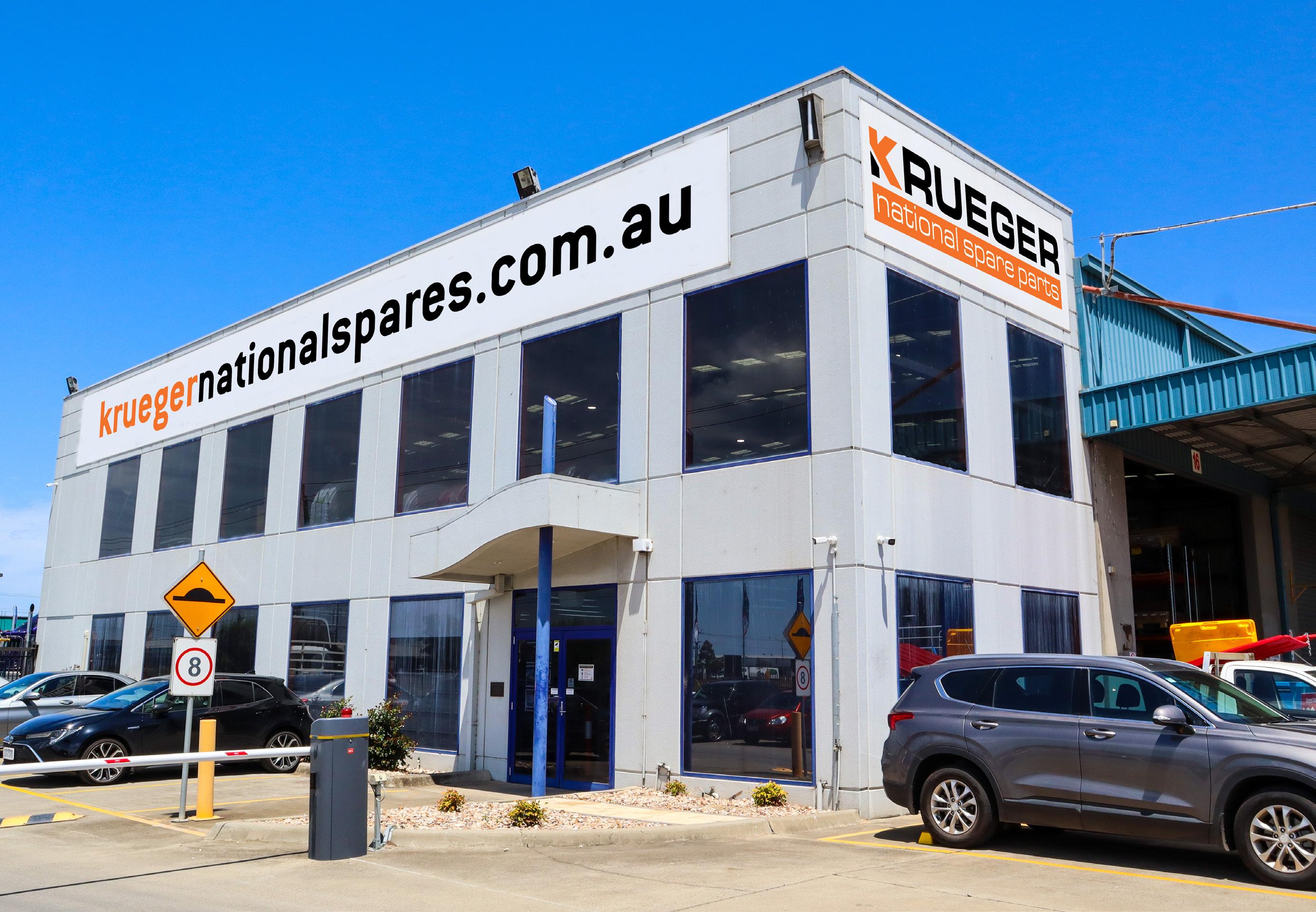
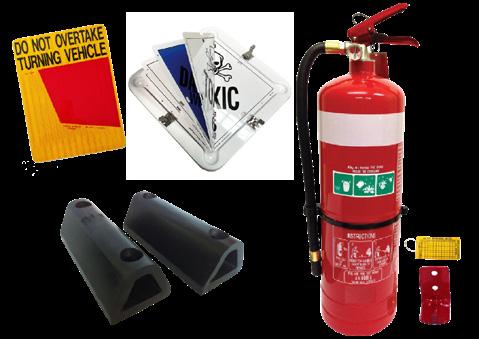

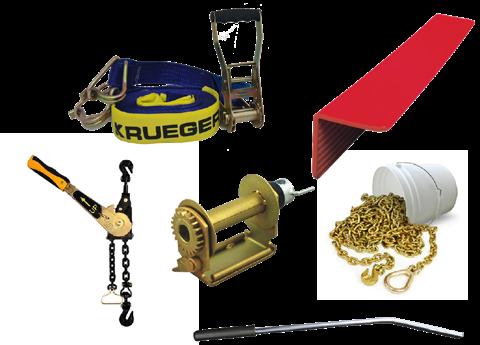
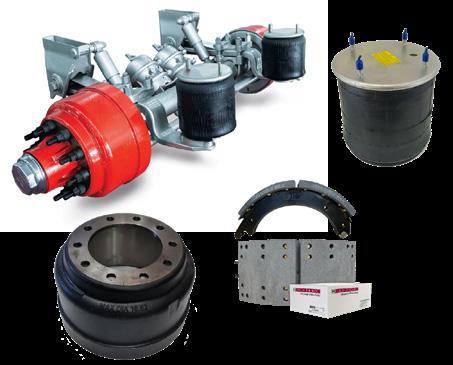

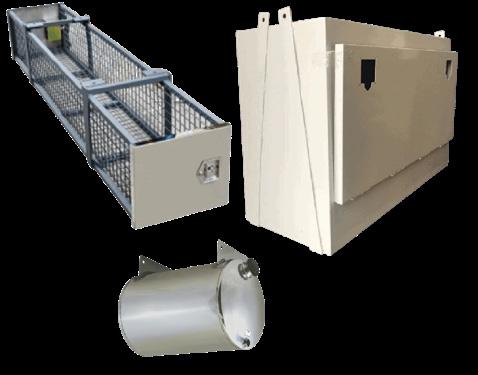
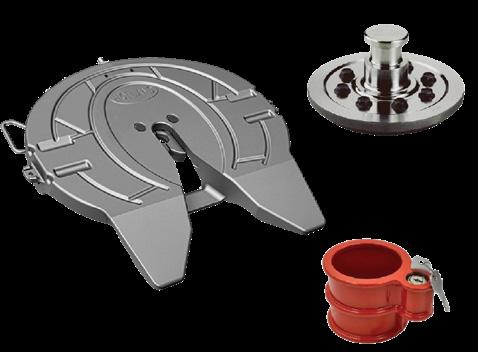





$177m for WA upgrades
So far $110 million has been spent to upgrade 1050 kilometres of state roads in WA’s Mid West Gascoyne, with a further $67 million in funding on the table to deliver further projects in the region.
Three new projects are due to be completed before the end of the year and another two are scheduled to commence in early 2025.
The works are funded by the Regional Road Safety Program, which works to prevent single vehicle run off road crashes – one of the leading causes of death and serious injury on regional roads – by installing treatments like widened and sealed shoulders, and audible edge lines.
NSW bridge upgrade
Work to get a NSW bridge back in shape is progressing, with the Review of Environmental Factors (REF) Submissions Report now available for public viewing.
The Macksville Bridge is a critical piece of transport infrastructure that has linked the northern and southern areas of the town for 93 years.
Transport for NSW (TfNSW) recently called for public submissions on a review of environmental factors about the plans to carry out repainting, together with extensive repairs and maintenance to the bridge.
“Work includes the safe and environmentally responsible removal of existing paint and repainting, along with repairing and strengthening bridge supports, piers, deck and steelwork,” TfNSW said.
Call to ban carbon tax
NatRoad is urging the NSW and Australian governments to reject any proposals for a carbon tax on trucks.
This comes in response to the recent NSW Freight Policy Reform: Interim Directions report, which recommends the consideration of vehicle charges based on carbon emissions; essentially a carbon tax on trucking.
“This is a recommendation from an independent panel, not current government policy. However, we believe it is vital that all governments immediately rule out this proposal,” said NatRoad CEO Warren Clark.
“A carbon tax on trucks would be devastating to small and medium trucking businesses that are already struggling with rising costs.” NatRoad will also submit a formal response to the report.
$263.2m bridge upgrade
The $263.2 million New Dubbo Bridge is continuing to take shape, with a third of the concrete deck, which will eventually support traffic crossing, now in place.
This major project on the Newell Highway in Dubbo is being jointly funded by the Australian and NSW governments.
“Once completed, the New Dubbo Bridge will transform the way western NSW residents, tourists and freight operators travel through Dubbo,” said NSW Senator Deborah O’Neill.
“The Bridge will reduce travel times in the city centre and improve access across the Macquarie River, particularly during flood events.”
BY JAMES GRAHAM
ROADMASTER’S managing director Geoff Robertson had done his fair share of homework before taking the plunge on a new Volvo FL electric truck for his Sydney-based refrigerated fleet.
He’d been fortunate enough to tour the Volvo HQ in Sweden and visit the big truck shows in Germany a couple of times and seen first-hand the “change of scenery” coming our way.
“Every couple of years you just see that transformation of moving from ICE trucks across to electric and hydrogen trucks,” Robertson said.
“Hydrogen to me seemed to be a lot more complicated while electric seems a lot more straightforward and a good option for metro areas.”
The city-friendly FL option seemed a natural fit for Roadmaster.
The company, which boasts a fleet of over 230 prime movers, trailers and rigids across seven depots, has been with Volvo and VCV for over 30 years now with 95 per cent of the fleet sporting the Wacolbased badge.
“Volvo have always been great from a support point of
view,” Robertson said.
“So obviously, you know, the trucks are great, but we also use their contract maintenance and their finance, and all those sort of things.”
Robertson concedes the investment in the first electric model, however, was still a leap of faith in the sense the big corporates embracing the technology have deeper pockets than the family-run operation.
Although there are initial big savings in maintenance and fuel costs to be had, there is also still no clear idea of total-cost-of-ownership given no one knows what value these trucks will have on the second-hand market yet.
But the early adopter, which prides itself on being at the forefront of many industry technologies over the years, felt the time was right to play its small part in reducing emissions.
“There were some requests from customers about what we were doing to do our bit and that sort of got me thinking,” Robertson said.
“Obviously they’re not cheap [about twice the price of the equivalent diesel-powered alternative], but it’s not all about dollars. I also felt
the fact that we’d spent so long in our partnership with Volvo I felt comfortable that if we did have some challenges, it’s a partnership – they’d support us, and we’d support them.”
Although it’s relatively early days in terms of on-road performance, Robertson says range anxiety “is a real thing” – they’re currently getting between 150-200km – but he is getting positive reports back from the designated driver on how it performs.
The truck also has an all-electric rigid fridge Thermo-King body, essentially like the old off-engine drive trucks that you have around town now.
“But it runs off the ePTO [electric power take off] on the Volvo EV so we think it makes around 50km difference to our total distance that we can do each day.
“So far, it’s worked quite well. There are different ways you can do it, but this is the way we’ve chosen to do this one. Some people are going with an all-electric fridge motor as well, but we’re not doing that.”
The truck is doing between 100-125km a day and takes about four to six hours to

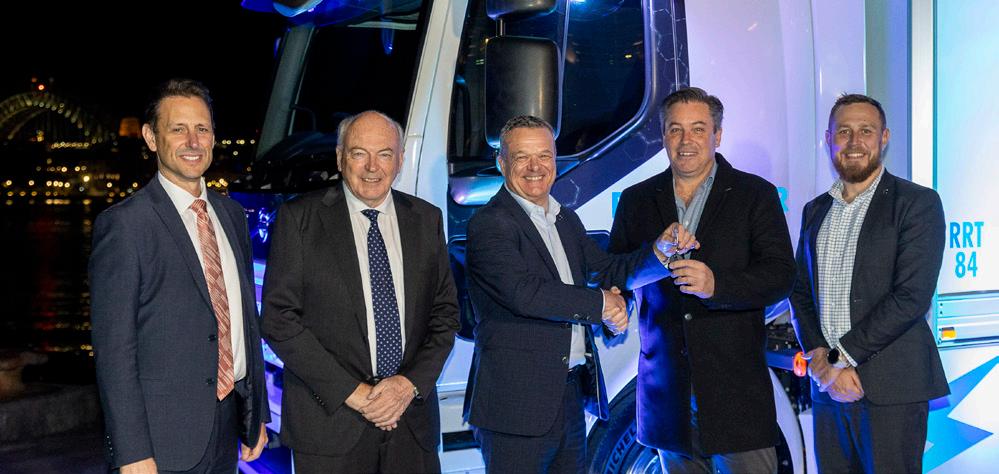

charge each night with email alerts to Roadmaster’s ops team to tell them when it’s fully charged, or unplugged.
It’s put to work each day in the Sydney metro area doing multi-drops for a variety of customers, rather than being linked to one contract.
“That’s probably a big change to what a lot of people do,” Robertson said.
“We’re doing this on our own back, which is a bit unique as well, in the sense that we’re just trying to see how it works, trialling it in our business.”
While it’s still early days, Robertson is encouraged by the interest customers are already showing in the technology, which could lead to specific contracts that will help “share the load”.
“Some people think that we’re a bit mad for doing it, but I think we’ve all got to do our little bit to help where we can as far as the environment goes.
“I’m not a hardcore environmentalist by any stretch, but if we can have equipment that
does the job just as good, then why not.”
Meanwhile, Robertson would like to see the states get behind electric trucks and offer more incentives for early adopters.
Some relief on stamp duty from states would be a good start, believes Robertson.
The stamp duty on the company’s new Volvo is an estimated $9000 more than he’d pay for the equivalent diesel model.
“So, I think some state government support around that would be great just to even up the playing field up a bit.”
In Europe in particular, Robertson said a lot of the governments are supporting the capital expenditure gap between the ICE and EV trucks.
“I know in some countries if an ICE truck is costing $200,000 and an EV is costing $500,000, governments will support that $300,000 difference by up to 80 per cent, which is massive.
“All of a sudden it does become cost-effective.”
FRUSTRATION at the lack of government incentives to decarbonise small truck fleets has led transport industry consultants MOV3MENT to take matters into their own hands.
MOV3MENT is offering a prize of $25,000 to the first small- to medium-sized fleet using its methodology to achieve a 25 per cent carbon emissions reduction before the end of 2025, in what it is billing as the 25x25x25 Challenge.
“We’ve written enough reports that all levels of government should know how to decarbonise road freight. It’s not rocket science, and it certainly won’t be through more studies, more enquiries, and more roadmaps,” said MOV3MENT managing director Mark Gjerek.
“We’ve put a challenging but achievable target out there for fleets, we’ve explained how it can be done, and now we’re

dangling a big carrot to make it worthwhile chasing.”
Gjerek said incentives make a big difference, but they need to be for the right things if they’re going to be effective.
“There are currently no incentives for fleet efficiency improvements, so we’ve put one up.
“We think reducing emissions by 25 per cent is possible if companies follow a robust process and combine several improvements.”
For example, MOV3MENT
helped NatRoad to develop the Get Fleet Fit guide that sets out how a small fleet can collect data, set targets and reduce costs and emissions.
“Fleets want to take practical actions,” Gjerek said.
“They want confidence that their actions will work. Following our process means fleets can plan their transition to a low-carbon future in a way that minimises costs in and suits their circumstances.”
Gjerek said this approach really helps small truck fleets
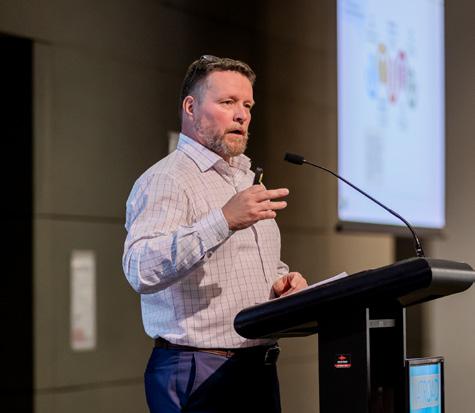
WE THINK REDUCING EMISSIONS BY 25 PER CENT IS POSSIBLE IF COMPANIES FOLLOW A ROBUST PROCESS AND COMBINE SEVERAL IMPROVEMENTS.”
MARK GJEREK, MOV3MENT MD
under increasing pressure to meet customer emissions reporting and net zero targets who simply don’t have enough information on what they can do.
“We know the headlines are all about electric and hydrogen trucks which are great but expensive. We suggest a range of actions small fleets can take to reduce emissions, without necessarily purchasing the big ticket items.
‘This prize of $25,000 will make a real difference to a small business. We know
because MOV3MENT is a small business too.”
The 25x25x25 Challenge is open to small and medium fleets of 5-50 trucks for any new actions they take. Applicants have to demonstrate they reduced their emissions by 25 per cent while maintaining a similar workload or freight task. They also need to show they followed a stepped process like Get Fleet Fit, with most of the saving coming from fuel efficiency and operational improvements rather than just a one-off action. For more details on the competition and how to sign up for a shot at the $25,000 prize, visit mov3ment.com. au/25x25x25.
DAF PURE EXCELLENCE
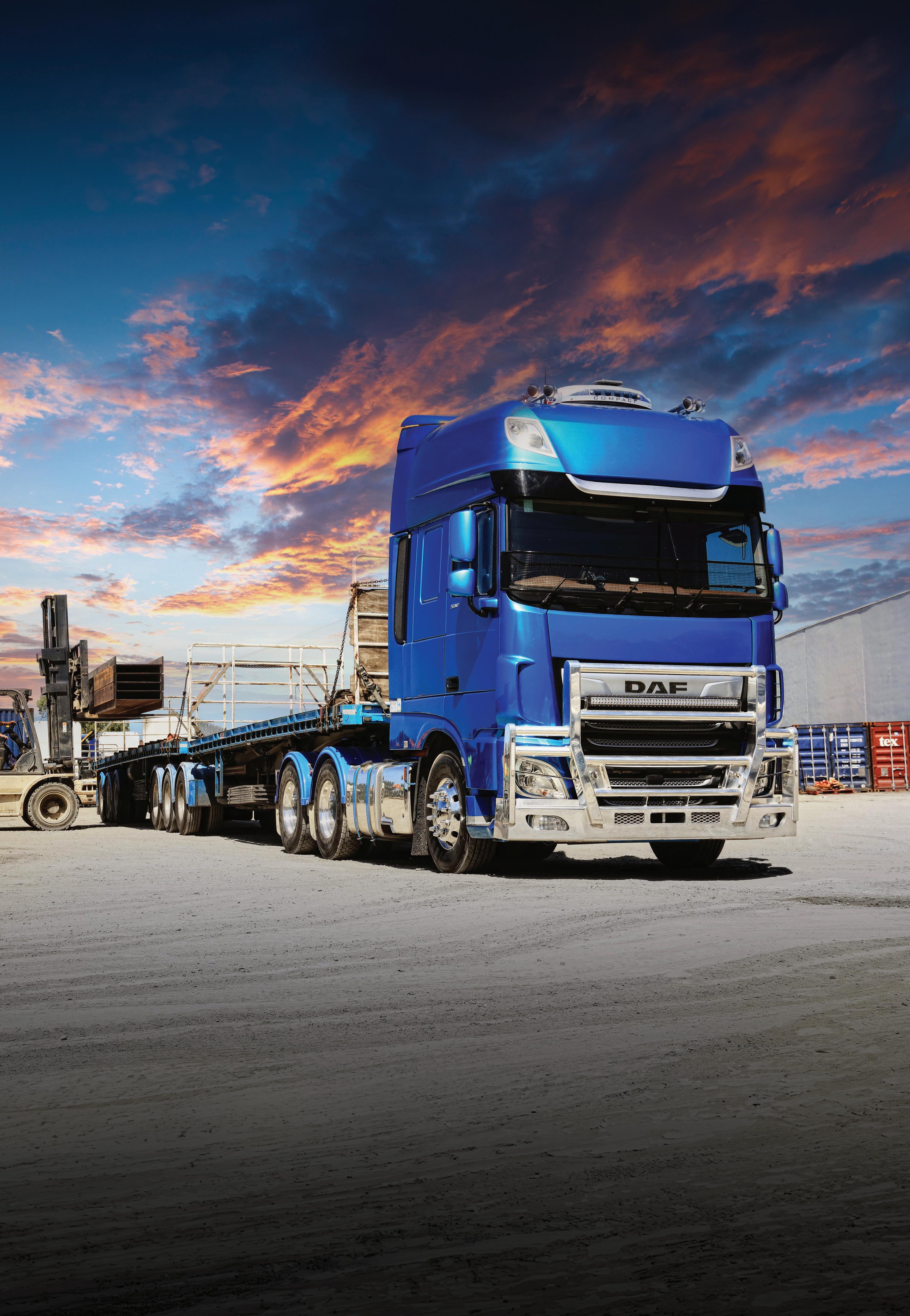
DAF is versatile and an all-rounder with the perfect combination of superior comfort and luxury for the driver and maximum vehicle efficiency for the operator. So, you need a prime mover with high uptime and durability? There’s a DAF for that!
Whether your needs are long-distance haulage, city distribution, construction transportation, bulk or tank transport, the versatility of DAF keeps you moving, and that’s good for business.
DAF.COM.AU

Colin Whitcombe reflects on more than 40 years on the road, the sacrifices along the way and what lies ahead in retirement.

AFTER spending more than 40 years on the road, legendary Rocky owner-operator Colin Whitcombe is still getting used to being at home every night.
Just a few weeks into retirement – he officially called time on July 31 – it’s a hard habit to shake when you’ve carted every type of load imaginable from Rockhampton to Melbourne, to Darwin, and all along the east coast, right up to Cairns.
The last 35 years, or so, Colin’s main role was hauling new steel from Brisbane to Gladstone and Rockhampton, and whatever is available on the return back to Brisbane.
No one knows the Bruce Highway better than Colin who had to laugh to himself when he heard a TV report the other night saying the road had been dangerous for the last 10 years.
“I thought straight away, ‘This highway has been dangerous for the last 50 years,” Colin says.
“They do patch-ups on it; they don’t do a proper job. They’re too lousy with the money I supposed, I don’t know.”
“But I’ve been on those new sections of road, Gin Gin, Cairns, wherever you want to mention and the bitumen’s only like an inch thick.
“One shower of rain and it just turns to potholes and some of those can be two foot deep and five and six feet long so you’re going to lose the truck in them.”
If Colin had his way, the Bruce would have been four
lanes from Brisbane to Cairns 20 years ago.
“Not in 20 years from now – it should have already been done.”
Colin, now 68, has to stop and think about how many kilometres he’s clocked up over the last four decades.
He reckons he’d put 3.2 million kilometres on his 22-year-old Kenworth T650, before that, the old Kenworth cabover did the same run for 13-14 years, at an average of 250,000 kilometres a year.
“I don’t know – you work that out [that’s another 3.5 million by our calculations].”
Most of those k’s were incident free. The only accident he did have, a rollover in his 1981 K124 “Foxy Lady” near Caboolture left him with a broken right leg, two cracked rigs and scars he still carries today.
“My right-hand side of my face was also sort of missing and they rebuilt that. I was off for six months.”
When Colin first bought trucks back in the 70s, the rule of thumb was a three-way split when it came to working out costs: a third for the truck, a third for the driver and a third for fuel.
“Nowadays it’s like probably 55 per cent of your earnings going on fuel and the owner gets bugger all out of it, and if you’re paying drivers, it’s even worse.
“With some of the rates, I don’t know how some blokes do it. That’s why a lot of them fall over.”
Colin would love to see the much-debated driver appren-
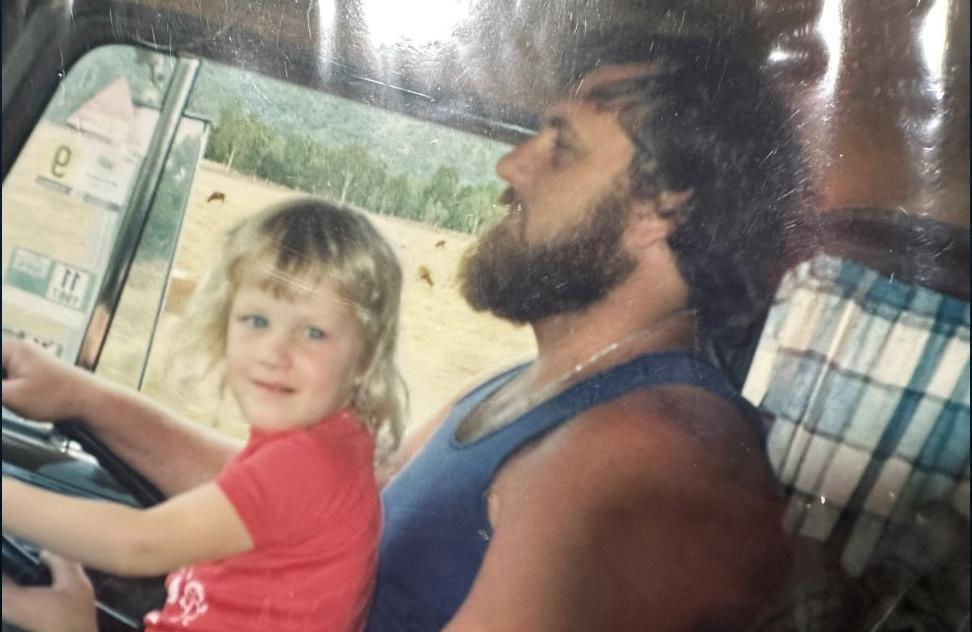
ticeship model formalised sooner than later.
“Even if it’s only a two- to three-year apprenticeship. They’ve got an older, experienced driver telling them how to chain things down, how to do this, how to do that the right way.
“These fellas know absolutely nothing, and then go buy a truck. They’re an owner-driver. “They’ve got a business, an ABN, but they don’t even know how to put a chain onto a trailer, they put it onto the rope rail. Stuff like that.”
With bigger staff-run fleets encroaching more and more on the role of the owner-driver, Colin fears for the sector’s future.
“Owner-drivers are going to be a thing of the past in 2030 years; they’ll be very, very scarce.”
Even so, this third-generation truckie would do it all over again in a heartbeat if he had a chance.
“I loved it. The old man had trucks, he carted timber; he had bullock carts with my grandfather first.
“He had Chevs, Bedfords, and stuff like that. I was brought up in trucks, but I suppose I had no choice.”
Colin can still remember his first truck he drove, his old man’s single-drive Chevy; he can’t have been more than 11 when he was first let loose in a paddock.
There’s been plenty of personal sacrifices along the way, of course, as is all too common for owner-drivers battling to make ends meet.
He was on the road so much he missed out on three of his children’s births – the only one he got to see was eldest son Joshua’s arrival.
Two have since followed him into the industry – sons Joshua, 37, and Brodie, 31 –and wife Karen reckons Colin couldn’t have stayed behind the wheel for so long without their support.
“He couldn’t have done it without our two boys being heavy diesel mechanics, that he’s relied on every time something’s gone wrong,” Karen said.



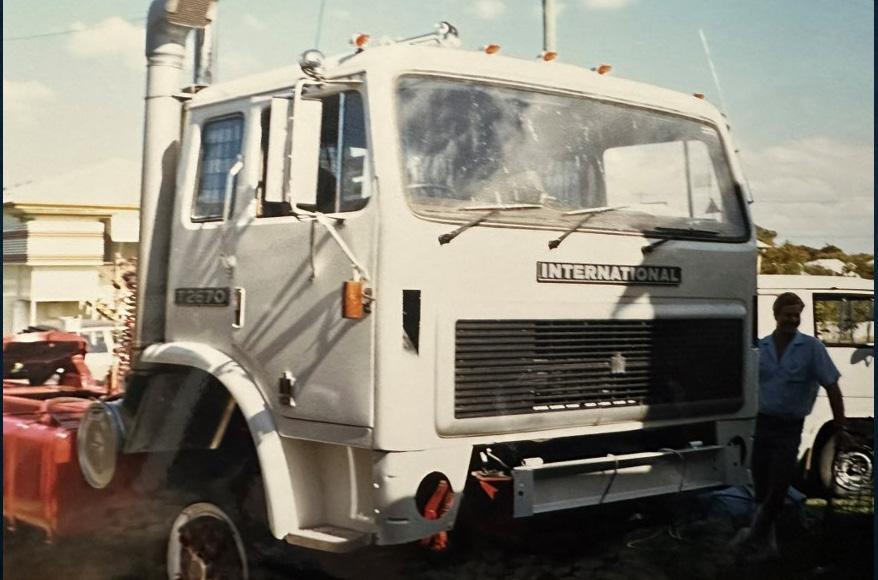
“They’ve always been there, every weekend for him and supported him, and when he’s got home in the truck, they’re here waiting to fix it.”
His best advice for youngsters following his lead today is to take your time and do it properly.
“And listen to the old fellas.”
He laments the loss of the days when if you broke down, whether you were on the Putty coming out of Sydney, on the flats at Bowen, or out west, you had a couple of trucks pull up in front of you and a couple in behind.
“One of drivers would be boiling the billy and the other four or five would be helping to fix whatever was wrong.
“Nowadays, you haven’t got a place to pull up because
get one in 30 that would stop.”
Colin gave up trying to stop and have a rest or do a check at a “proper truck stop” between Rocky and Brisbane years ago due to the amount of caravans flouting the rules and taking truckies’ parks.
“These days it’s even worse. They just look at you like you’re an idiot. I don’t know how many times I’ve rung the coppers about that sort of thing but they never seem to do anything.
“I’ve even seen some of them break open the power boxes on the lighting systems at some of those weigh pads and poke their vans in to get their air conditioners going and have a cup of tea.”
Colin and wife Karen will be “going for a drive” themselves later this year in the refurbished 1976 Volvo B10 school bus he’s turned into a motorhome with the help of son Joshua.
He promised wife-of-43years Karen he’d have three months completely off the road now C.J. Whitcombe Transport sold its three trailers and beloved T650 “Blue Moon Swamp”, named after the 1997 John Fogerty album and Aussie concert tour by the same name.
But Colin, who plans to keep his licence and medicals up to date, also told InfraBuild he’d cart the odd local load for them from November, if they get stuck.
“I’ll do it, if it comes upthey’ve rung me every week so far.”
In the early years, wife-of-43 years Karen would tag along in the cab, their first-born Rebecca sleeping in the bassinet in the back.
She even got her learners so Colin could have a kip in the bunk while she drove down The Beef Road (now known as the Fitzroy Development Road).
But she’s glad to have the grandfather-of-seven home now after “plenty of lonely nights” farewelling him on the Sunday night and worrying about whether he’d return safely.
“You’re continuously worried about him, until you see him come home.
they don’t make roads wide enough to pull up to even change a tyre.
“Even if you manage to get off the road, everyone is an overnighter, they come around you at a dollar five, 100k an hour – you wouldn’t
“He’s a bit bored being at home now, but he’ll get there.”
“I don’t mind him doing casual work – just casual work, mind you - I know it’s in his blood.”
Story interview
by
Kent Murray
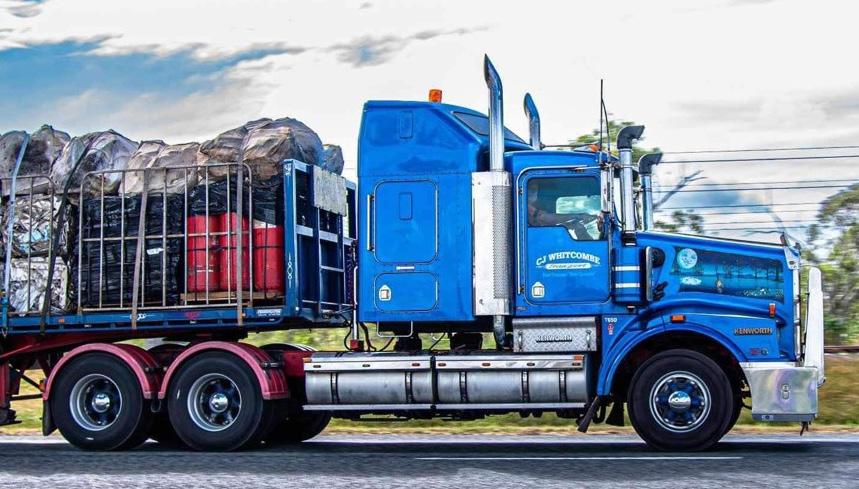





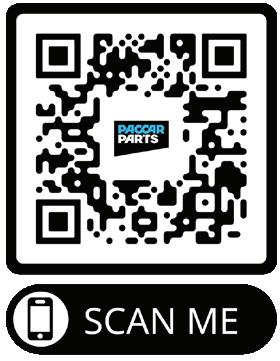




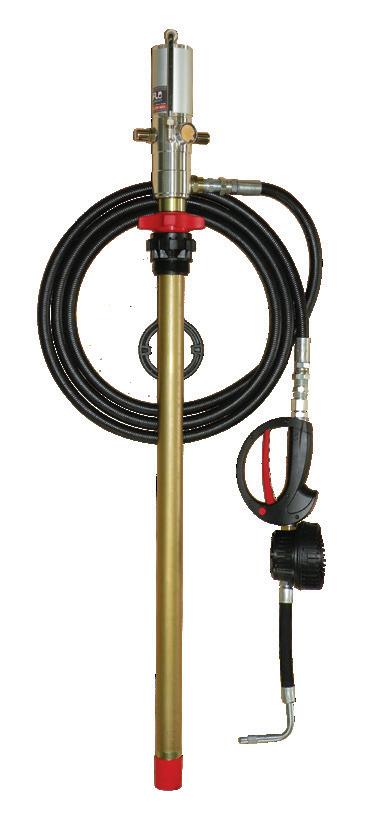






LS001TRP $1,699
Suits T404, T404S, T604, T650, T350, T350A, T401, K104, K104B, K108, T359, T359A & K200
LS002TRP $1,850
Suits T408, T608, T658, T403, T408EX, T409, T609, T659, T408SAR, T409, T610, T409SAR, T360, T360A & T410



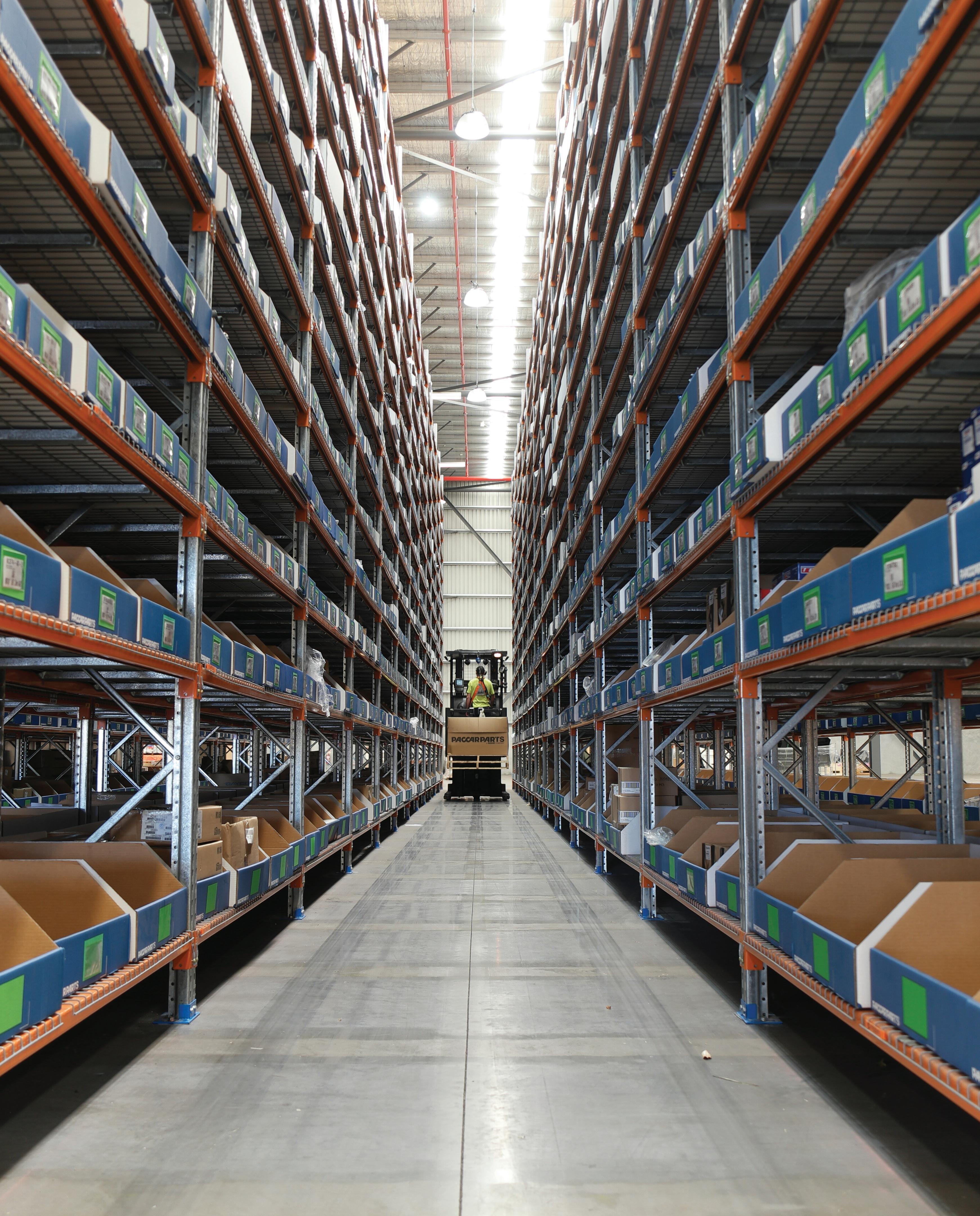
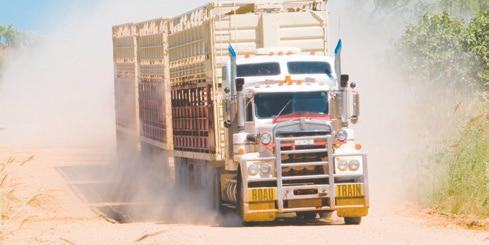


From one generation to the next
After starting his business with his late father 15 years ago, this inspiring outback automotive recycler is now passing his skills onto his young son.
BY DANIELLE GULLACI
IF you’ve been watching the last few seasons of Outback Truckers, then Mike Elliott might look familiar. He appeared in season 8 and 9 of the show; and has returned for new episodes in season 10, although he’s had quite the physical transformation.
Big Rigs spoke with Mike, 40, about how he turned his passion for engines into a profitable business, how losing his father made him focus on improving his health, and about the joys of having his son Vinnie by his side as he travels to some of the country’s most remote locations.
Mike runs Outback Cash For Cars, an automotive recycling business that purchases unwanted cars and then on-sells them to commercial wreckers throughout Western Australia.
He’s based in Perth and also has two yards in Kununurra and another in Geraldton.
Mike travels all over the country, to places many wouldn’t venture, picking up trailer-loads full of cars and other vehicles. The blistering heat of the desert and unforgivable corrugated roads are all in a day’s work for this family man – who shares seven kids with his wife of 10 years and business partner Molly Elliott.
Mike admits he hadn’t initially thought of turning his passion for cars into a career. But from his late teens, you’d often find him under a bonnet, tinkering with engines.
While that continued as a hobby, he initially followed in his father’s footsteps and became a plasterer. “We were a family of plasterers and were in that in a big way,” said Mike. “When I started

getting into the cars, people thought I was a bit crazy and was just wasting my money.
“By the time I was 18 I had purchased 75 cars, and by 21, had bought more than 300 cars. I never owned more than four or five at a time. I’d fix them up and then sell them.
“I started buying and selling cars, and then I got bigger and better. I found the more work you can do yourself, the more of the pie you get.”
It was with that in mind that he spoke to his father Richard Elliott about going into business with him.
“Dad and I started this busi-
ness together. We had been working in construction for a long time. Then I showed him how easy it was to flip cars. What we could make in a day as plasterers, we realised we could make in a morning,” explained Mike.
“He was quite hesitant to begin with, because I’d already spent so much on cars. But I showed him what sort of money could be made and we went for it.”
They spent almost four years on the road together, going wherever the work took them, before tragedy struck.
“This was such an adven-
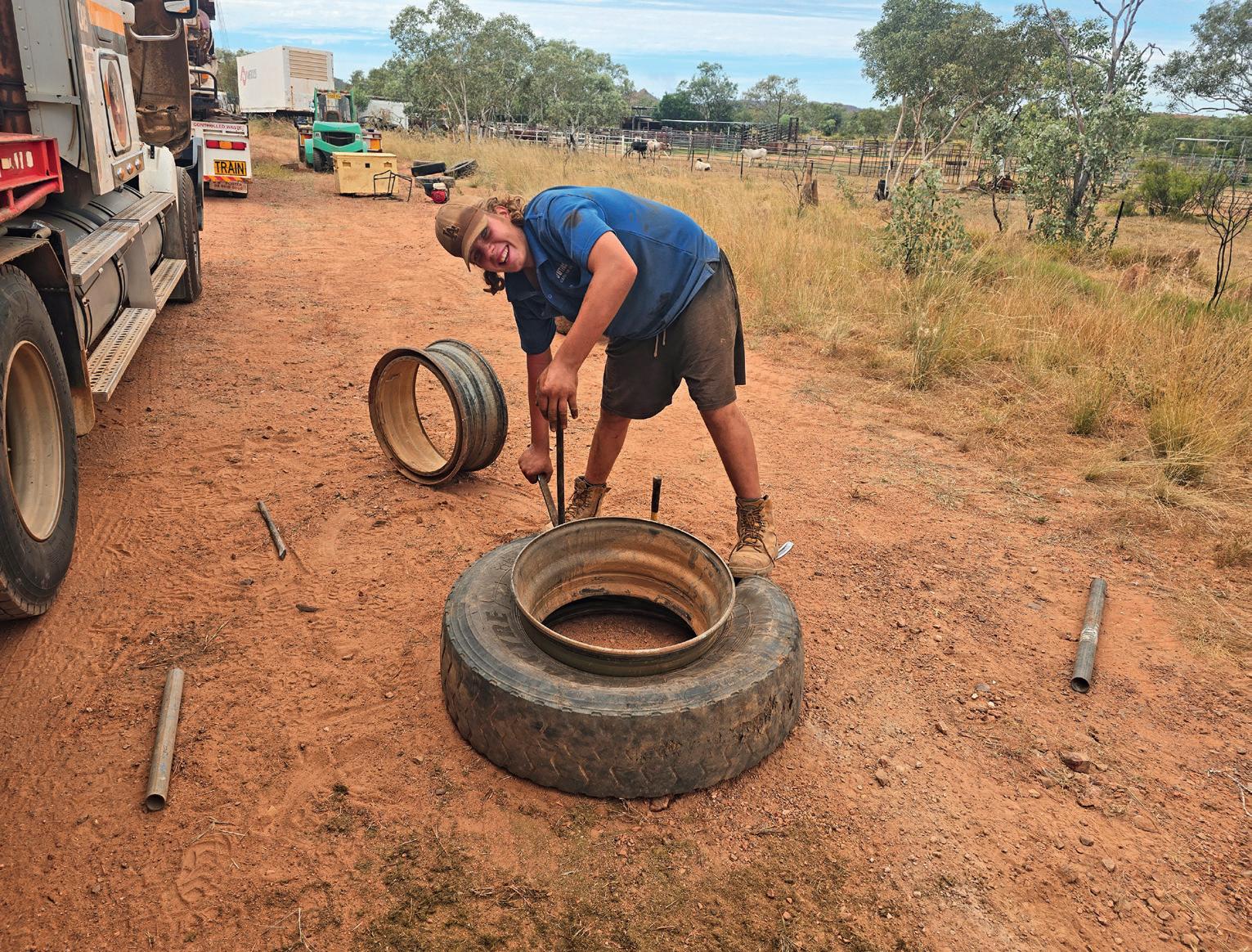
I STARTED BUYING AND SELLING CARS, AND THEN I GOT BIGGER AND BETTER. I FOUND THE MORE WORK YOU CAN DO YOURSELF, THE MORE OF THE PIE YOU GET.”
MIKE ELLIOTT
ture and we got to share some crazy experiences. Dad and I would travel everywhere, even out to the middle of the desert, to buy a heap of cars and then we’d bring them all
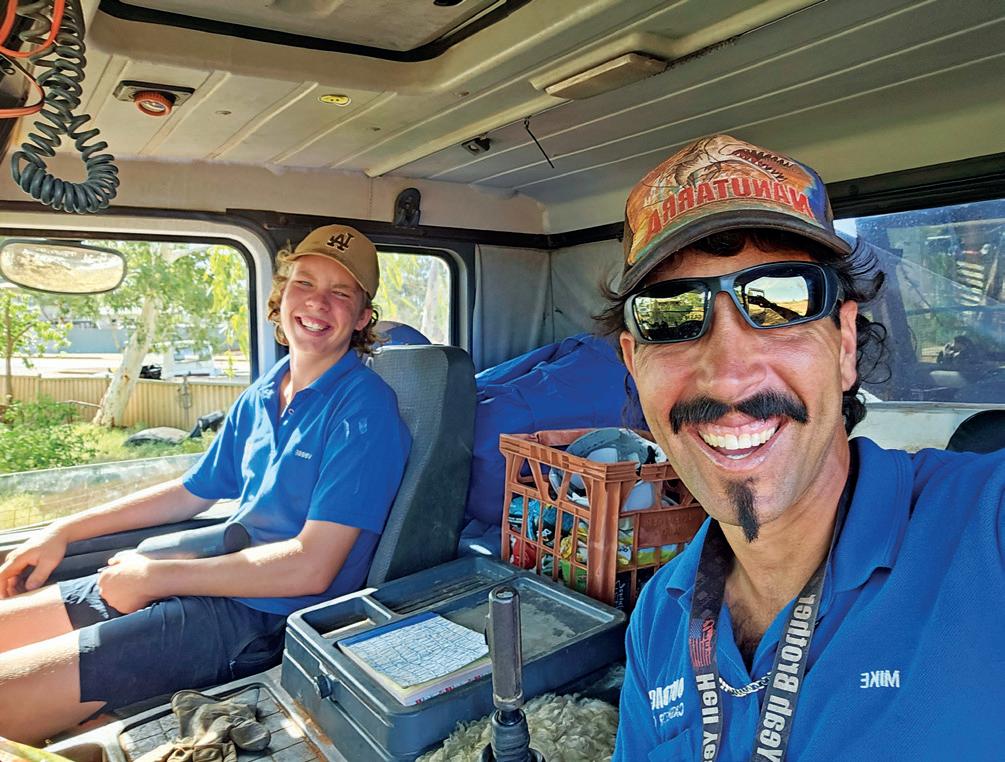

back. We were really close,”
Mike recalled.
Sadly, Richard passed away eight years ago, aged just 56, and Mike says that loss affected him in a really big way.
“Dad was a big fella and I
was a big boy too. That’s what got him at the end, it was heart disease. I knew I had to change myself. I didn’t want history repeating itself. I want to be there for my kids.” Mike says he went on to




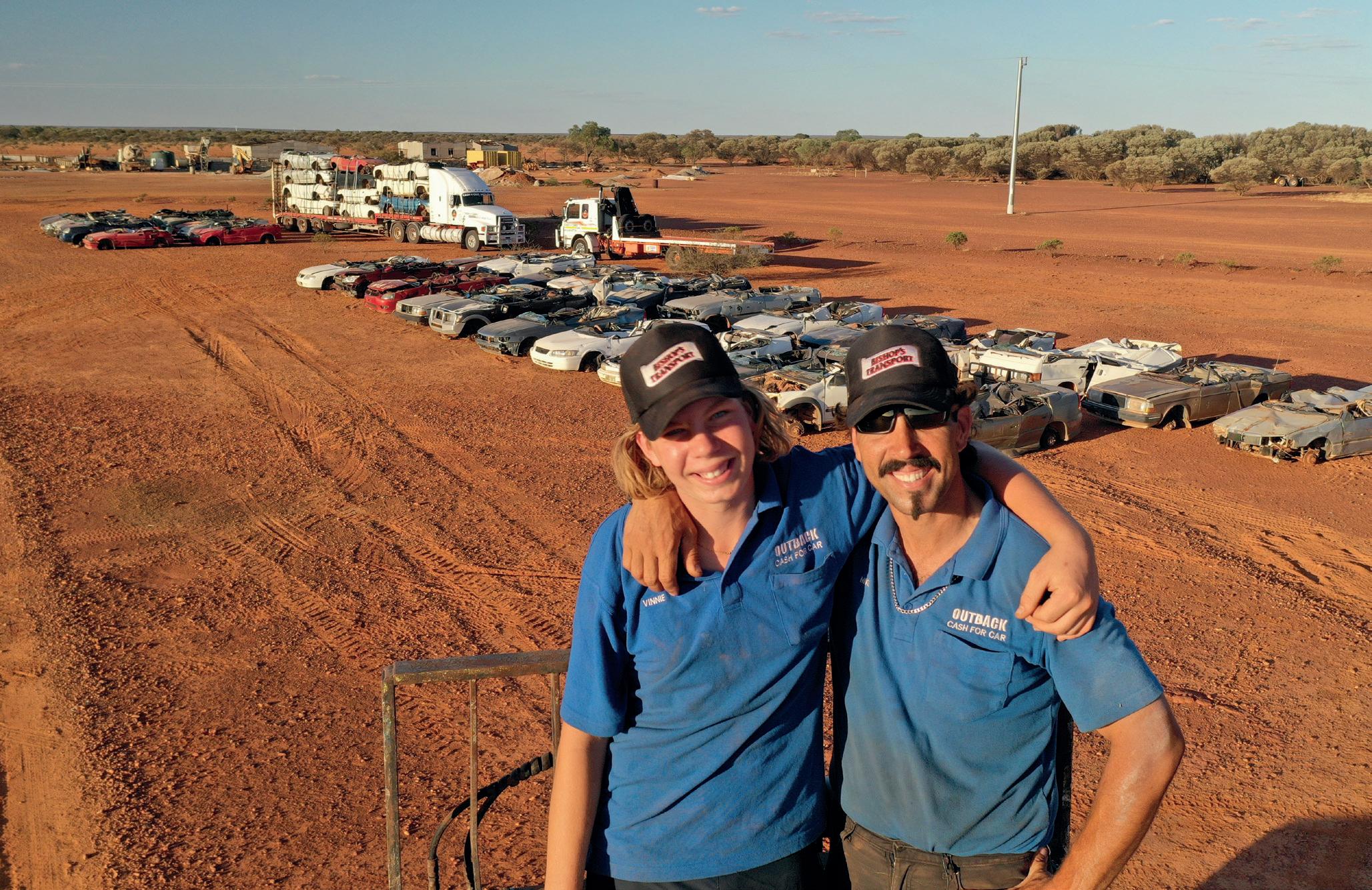
lose about half of his body weight. “Nowadays I just keep moving. This is very physical work and you need a lot of endurance because it’s just so hot. There’s a lot of groundwork involved in getting those cars too.
“I also exercise everyday now. I’ll run 2-8 kilometres a day, and I do a full workout too. My whole life is very different to what it used to be.”
Vinnie, who just turned 17 on October 3 has been working with his father for close to a year. “He’s such a great kid,” said Mike. “School just wasn’t for him though. It was hard to take him out of school. We spoke about it for around nine months before we finally pulled the pin. I got him to rebuild a gearbox with me, and a year later he’s building performance engines as a hobby. He took to it like a duck to water.
“Vinnie is a really switched on kid. Try to get a maths teacher to teach him and he has no interest, but give him an engine and I’m mind blown at what he can do.
Watching him over this past year has reinforced that taking him out of school was the right decision. It’s been the best thing for him.
“Vinnie is very mechanically minded; he can drive anything. He’s one who I try not to give too much direction to. I like to let him figure it out on his own – and he usually comes up with something better!”
Already, despite his young age, it’s clear Vinnie is destined to follow in his father’s footsteps. “I always knew I’d be in business. I loved the idea of buying and selling and that crossed over with cars, because I loved cars. When I
started doing that, it was so easy, so I’ve continued on that path,” Mike said.
“I’ve never been done for unlicenced dealing because I’ve never done the wrong thing. All of the cars we collect, I’ve purchased, and I keep all of the receipts. I’m super selective of the cars I buy. The logistics of getting the cars though is insane.
“I’ve blown engines, tail shafts and clutches in the middle of nowhere. I had an engine explode on me when heading out to a job one day. The whole harmonic balancer came off and wasted the motor in one hit. That was about 10 years ago, it was a yellow Hino I named Emily – it was just before I met Molly. I had to run a shit truck for about six months before I could afford to buy another truck.”
Mike says he’s grateful he’s been able to turn his hobby into his work. “And I always tell my kids to make sure you’re doing what you love. Don’t just chase the money.
“I tell them just follow your heart, it doesn’t matter where you work, so long as you’re happy inside, that’s what matters.”
Mike currently operates a fleet of four trucks, and a crusher which comes along on almost every journey.
His main truck is a 2015 Freightliner Coronado. “I just upgraded to this one. It has a Detroit DD15. It’s insane to drive – it feels like you’re driving a 700hp engine, which is crazy,” explained Mike.
“Before this I had a 1994 Mack CLR with a Detroit in it as well. I rebuilt that one from front to back and then sold it as a deposit for this one.


I always loved the Macks and Scanias. I never thought I’d love driving a Freightliner but it’s such a good truck.”
Usually, Mike will pull two trailers but does go up to three when required.
“If it’s local to Kununurra, I’ll crush up the cars and can stack nine on a trailer. But if I go further out to the Tanami, I can chop them up, so I can fit up to 70 cars on 3 trailers.
“Location is everything. When you’re going further, you lose time, so I try and bring back as many cars as I can.”
For Mike, his work takes him absolutely everywhere.
“I try to do 14 days on the road and 10 days off, but I haven’t had a rotation like that for ages. We’ve just been too busy. Sometimes we’ll be away for six weeks at a time.
For every five or six cars you do, you might get one car that’s worth the same as five or six cars put together.”
Mike’s oldest truck is a 1987 Nissan Condor, which is only used locally for deliveries in Perth, a late model Hino tilt tray and a 1992 Scania crane truck.
“I’ve had that Scania for 10 years, it’s a real war horse that just won’t die. But I’m ashamed to drive it on the
I GOT HIM TO REBUILD A GEARBOX WITH ME, AND A YEAR LATER HE’S BUILDING PERFORMANCE ENGINES AS A HOBBY. HE TOOK TO IT LIKE A DUCK TO WATER.” MIKE
ELLIOTT
road sometimes,” he laughed. Like Mike, Vinnie was taught to drive the truck very early on. “I used to seat him up on phone books and a pillow when he was little so he could see,” said Mike. “He was already learning to drive trucks around the yard and in the paddocks, from when he was six years old.”
While Vinnie is very keen to get his truck licence, he’ll have to wait a little while longer. In the meantime, Mike says they’ve just “beefed up” an old Landcruiser, which Vinnie will be able to drive alongside him, towing a 3.5 tonne car trailer.
Looking ahead, Mike has some more work planned through Kununurra before the wet season hits, and then he plans on tackling Esperance.
“We try and work Kununurra up until December, which is when it gets intensely hot, with a lot of rain. That’s when we start to go further south,” he said.
“Often, we’ll roll into a town and buy all the scrap cars we can. I’m planning on doing a few trips to Esperance soon. We picked up about 163 cars from Esperance in 2019, so it’s been a few years since we’ve been down that way.
“What I used to enjoy the most was the chase of the cars but now I really enjoy the time I get to spend with my son.”
Season 10 of Outback Truckers is currently being aired on 7Mate on Tuesdays at 8.30pm. Past episodes are available to stream via the 7Plus app. This season, Mike Elliott will appear on episodes 2, 11, 12 and 13

BY KAYLA WALSH
IT’S been a wild ride for truckie Wayne Howsan – from living in his truck without a cent to his name to owning a 100acre ranch in Memphis, Tennessee.
The 60-year-old, who has been married six times, is originally from Mount Molloy in Queensland but moved to the US for love.
“After me and my third wife ended up divorcing, I decided to market myself worldwide, on all the dating sites,” Wayne told Big Rigs.
“A girl in Costilla, New Mexico got a hold of me so I decided to sell everything I had and head to America.”
But the move to the Land of Opportunity didn’t initially work out for Wayne, and he found himself completely broke.
“Here I was with a horse, a saddle and a few clothes, having to start all over again.
“I married the New Mexico girl, but I had no American licence, no work visa and no money.”
With very few options, Wayne got a job driving trucks locally, picking up and dropping off loads of hay.
When his American licence and green card finally came through, he started delivering to some big dairies in Texas.
Not used to the varied American climate and driving conditions, he got himself in some sticky situations while he learned the ropes.
“I remember going up on top of the Rocky Mountains to get a load of square bales,” he said.
“On the way in the morning it was 18 degrees below. I loaded 680 bales by myself, then as I was finishing strapping the load, a blizzard blew in.
“Me being from the Outback of Australia, I didn’t know any better and started to drive back down the mountain.
“I couldn’t understand why there was no traffic – well, I figured it out pretty quickly.”
With two feet of snow on the road and unable to see much of anything in front of him, Wayne had to crawl down the

mountain in second gear.
“It took about four hours to go about 50 miles, but I made it to the bottom,” he laughed.
“A state trooper was there waiting – he had the road blocked off and couldn’t believe I had come down the mountain!”
Although Wayne was working hard, he wasn’t exactly rolling in money, which put a strain on his fourth marriage.
Pretty soon he was out on his ear again, and he ended up moving to Louisiana, where he got a job with a company called Bengal Transport.
“They based me in Shreveport, doing heavy haul and driving a Peterbilt,” he said.
“I was going all over the USA, getting paid to see the country.
“I was thinking about coming back to Australia when I was up in Arkansas doing a load and I stopped at a truck stop up near Fayetteville.
“Bugger me, if I didn’t come across my fifth wife to be.”
Wayne ditched trucking and he and his new bride ran a successful horse training business for eight years, raising her daughters and adopting two of her nieces.
Eventually, though, the call of the highway returned.
“I was getting burnt out, so I decided to get back in the truck,” he said.

“I was driving for a guy from Houston, Texas – but I was only in the thing for three weeks when my wife got herself a boyfriend.”
Again, Wayne had to start over – but this time he had nowhere to live.
Luckily, he landed a new job driving for an Aussie operator in Memphis, Tennessee, who had a 1999 Western Star sitting in his yard.
“We worked out a deal and I bought the truck from him,” he said.
“It was pretty rough, but with a bit of TLC it was able to head out and go work.
“I was now an owner-operator, but I had nowhere to live – so I lived in the truck for two years.”
It was a tough time for Wayne, but he built up enough savings that when he eventually met his sixth wife, they were able to buy property.
Not just any property, either – they now own 100 acres of land, with two barns and a beautiful house.
They’ve also got a 42-ft yacht, a herd of cattle, six horses, a tractor, a pickup truck, a SUV, a Jeep Renegade, and a Ford Bronco, if you’re asking.
“America really is the land of opportunity,” Wayne said.
“I’m very grateful for what I have built, and I’ve worked my ass off to get it.
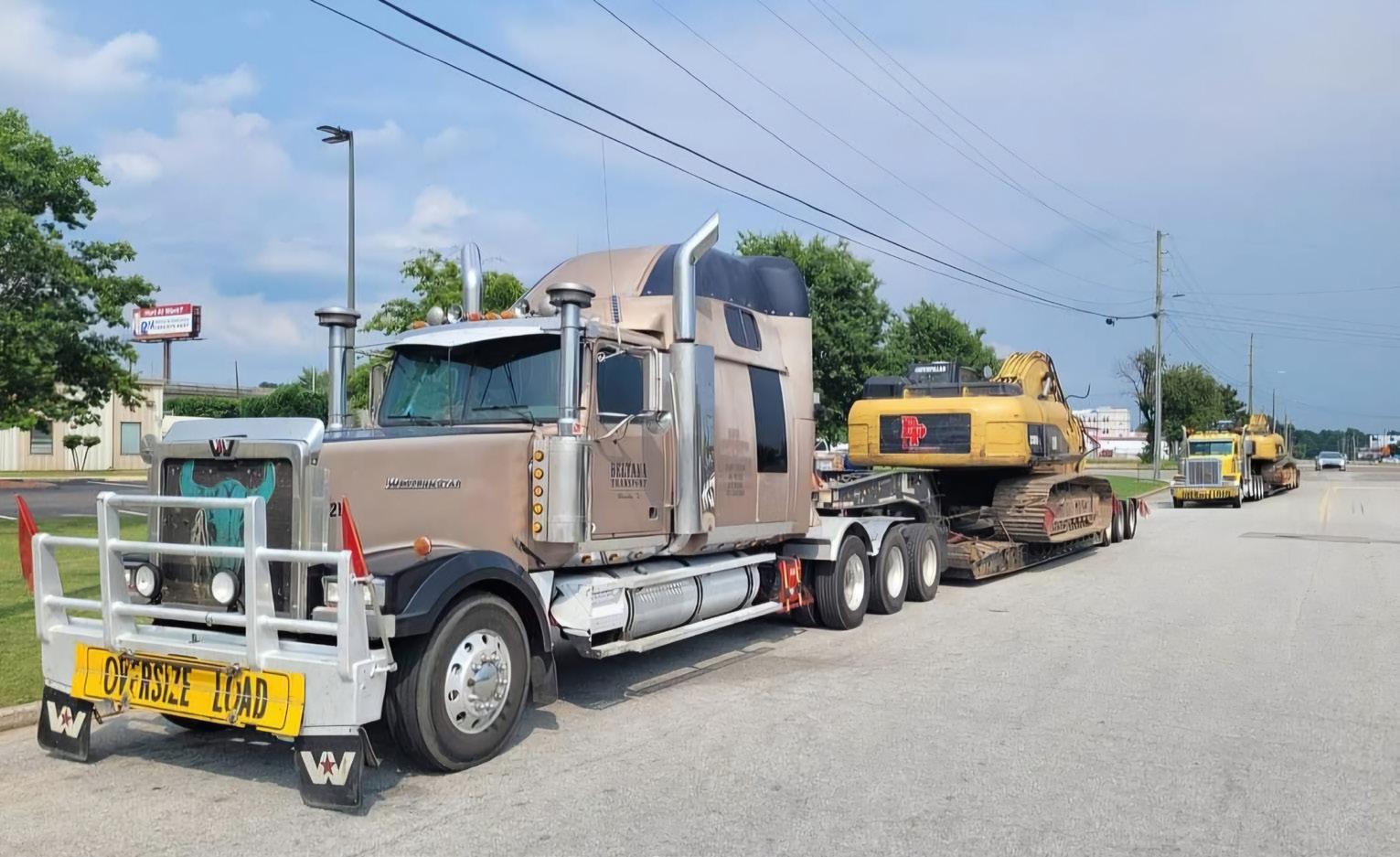
“It helped that my sixth wife finally jerked me into line and taught me to manage my finances better.
“But I don’t believe that I would have what I have now if I’d stayed in Australia.”
Wayne still works for the same Aussie operator – a bloke called Andy Oberle, who runs Beltana Transport.
Since buying the Western Star, he has rebuilt the engine and put a heavy duty Peterbilt backend on the truck with a pusher axle, making it suitable for heavy haulage work.
“I do oversized loads, heavy haul, big machinery and tanks,” he said.
“Andy’s got a fleet of different types of trailers and any job that comes up, we’re able to bid on it.
“He charges me 25 per cent to use his trailers and I’m happy with that.”
Now 20 years in the US, Wayne has adapted well and said there are a lot of positives to being a truckie over there.
“We’re very spoiled in the US – these guys have no idea,” he said.
“You don’t have to carry any spare tyres on your truck over here because there’s a truck stop every 30 miles or so.
“And there are tyre guys who come out and fix your tyre on
the side of the road and you get going again. It’s that easy.
“If you get a flat tyre in the outback, you’ve got to pull up, jack up your truck and do it all yourself.”
He encourages young Aussies to go to the US and get a taste of trucking life over there.
“If anyone had an opportunity to come over here and get into the trucking industry, they should come and experience it,” he said.
“There are visa programs, for the harvest season for example.
“Then if you meet an American girl and you fall in love, well, you can live happily ever after.”
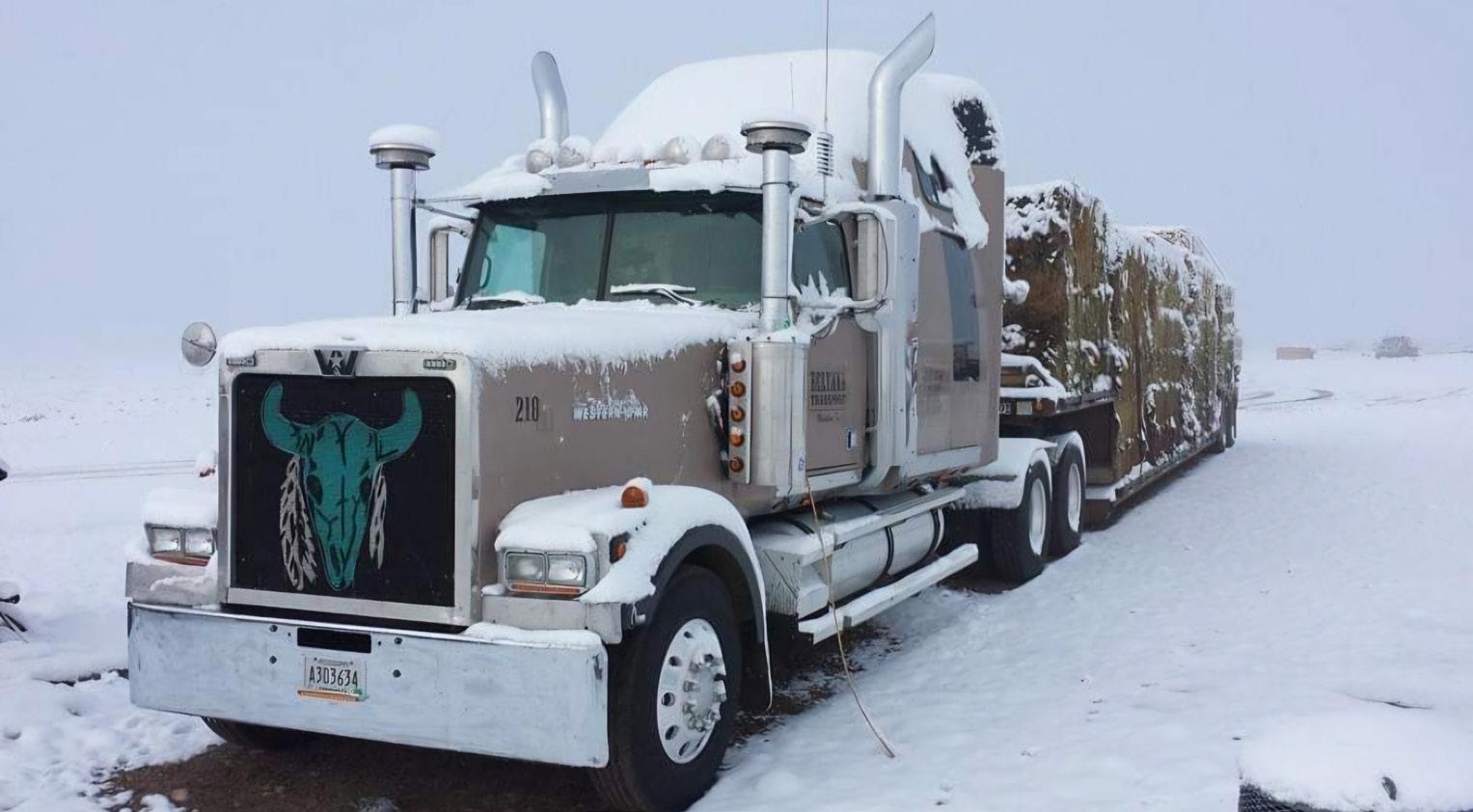







and sister truckies Craig Goulthorpe and Jodie Black have followed in the footsteps of their inspiring dad in more ways than one.
BY AINSLEIGH BILATO
WHEN siblings Jodie Black and Craig Goulthorpe attended the Shell Rimula Wall of Fame Induction ceremony in 2023, they were excited to see their late father, Garry Goulthorpe, honoured.
They didn’t know that they would each be inducted into the Wall of Fame also, alongside the man who had inspired their own careers in transport.
When Garry got his truck licence at age 16, he would be the first in his family to join the transport industry.
He was able to secure a loan to purchase his first truck, a Commer Knocker, by advising the bank that he owned a farm and needed the truck to help him run his cattle.
The reality was that Garry was a farmhand on a small farm in Victoria that housed just one milking cow. This slight stretch of the truth would mark the start of the five decades Garry spent behind the wheels of his ever-changing fleet.
His last truck, a White 4000, was nicknamed the ‘The Mistress’ as his wife joked Garry spent more time with the truck than he did at home. A self-taught operator himself, Garry would share his exceptional breadth of trucking knowledge and his passenger seat with his children.
Of Garry’s four children, Craig and Jodie would choose to follow in their father’s footsteps in the transport industry.
“I think my first word probably would’ve been truck,” jokes Craig. “From the earliest age I could remember, I was around trucks with Dad.”
Mastering how to change a tyre, tarp a load and get himself out of trouble mechanically, a 13-year-old Craig still remembers the day his father let him drive his road train for the first time.
On a station near Winton, Craig would spend the next two hours navigating a bush track to deliver a load of general freight, a proud Garry by his side. Craig, with this experience under his belt, gained
confidence quickly.
Once, while his parents were out checking to see if the paddocks were dry enough to drive on, Craig received a phone call from the farmer to inform Garry that the wheat was ready to be loaded.
Craig, understanding the urgency, rushed outside to put the drive tyres back on the truck and began the drive down the highway. Upon spotting their own White truck heading towards them on the road, Craig’s bewildered parents watched as their 15-year-old son waved them past!
Having secured a role with Northern Transport, Craig gained his truck licence in Alice Springs once he turned

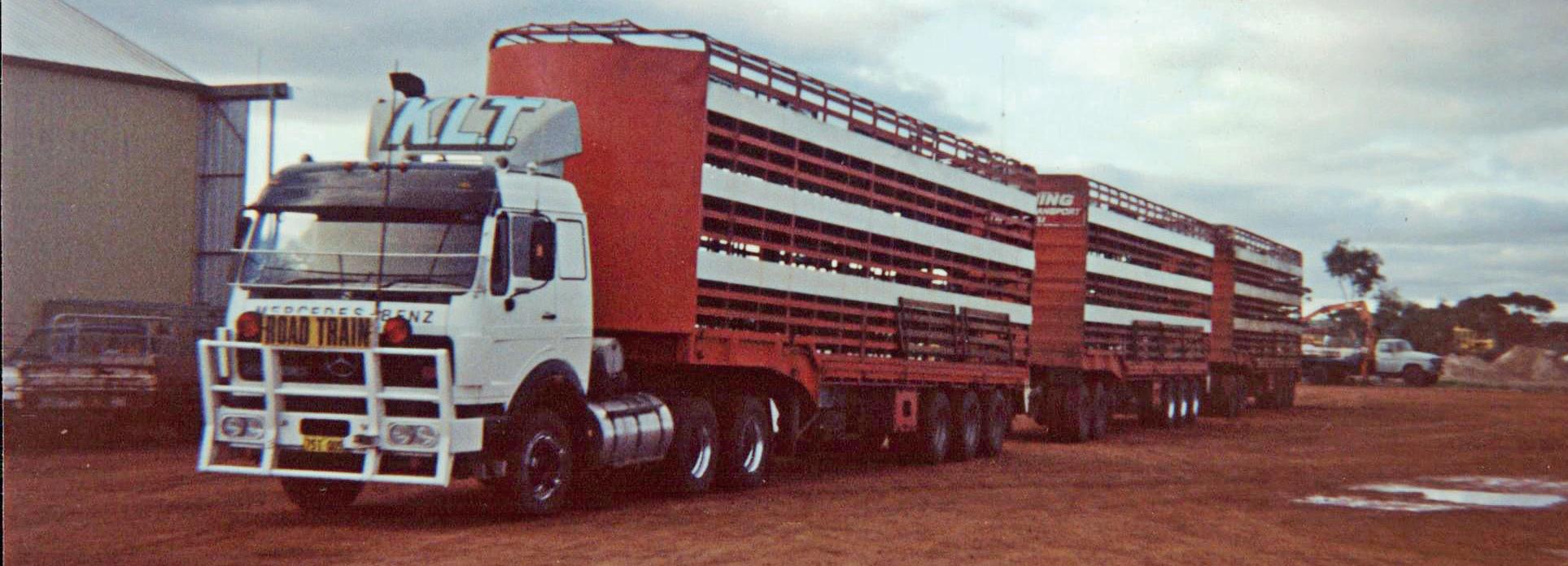
17. Braving the Tanami Road to cart fuel and explosives to the mine, Craig recalls “some days, we’d come back with an axle on top of the trailer. It was that rough, it would just rip it out.”
Craig would eventually head to Western Australia, where he would find a passion for carting livestock. First with Humphries and later with KLT Transport, Craig would typically find himself loaded with cattle or sheep.
On one occasion, however, he was tasked with moving a load of deer. Far less docile than the livestock he had grown accustomed to, Craig had to put a cap tarp on top of a stock crate to stop the deer from jumping out.
“If I had it my way, I’d go back there tomorrow, but I’m too old for stock now,” Craig says. “It is a young man’s sport.”
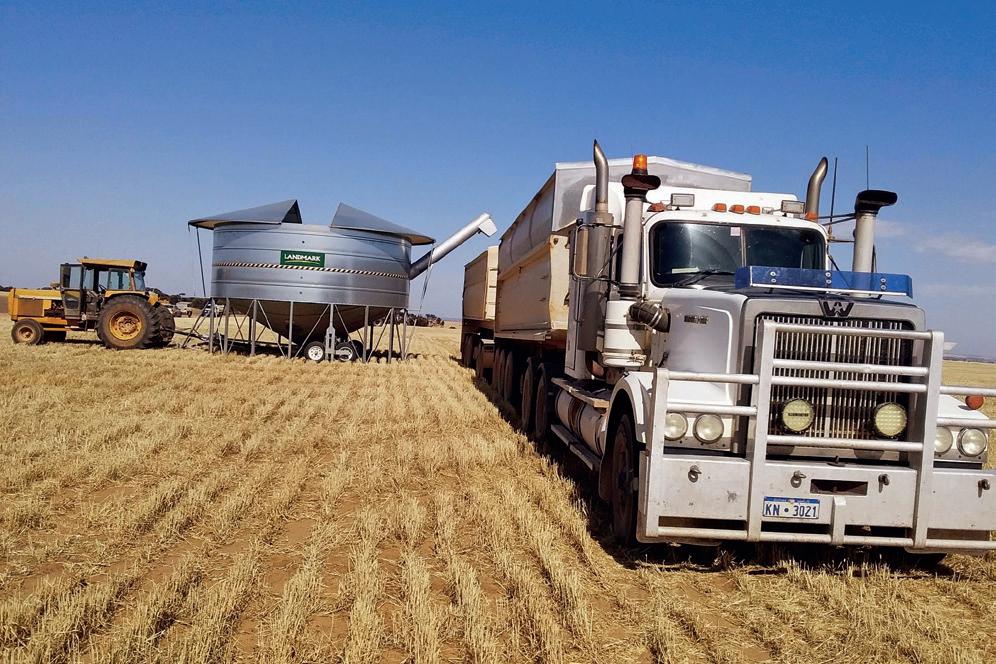
In an industry Craig believes is getting harder every day, he is grateful for his current role at J.A & J.G. Young, with “the best boss I’ve ever worked with”.
Having seen his share of 19hour days, Craig appreciates serving a business that treats its staff like family.
“If you need time off, its not a problem. If you needed to borrow money, he’d lend it to you.” Today, Craig drives a Kenworth C508 that he has called “Desert Boots”, a nickname given to him “because that’s where I want to be!”
When he’s not driving, Craig has tried his hand at building trailers. Reminiscent of his father’s time in the transport industry, Craig has approached this new challenge with resourcefulness and diligence. “I didn’t know anything about it, but I winged it!” he laughs, “Whatever is put in front of me, I’ll work it out.”
Although Craig has not had the opportunity to work alongside his younger sister, Jodie, they have each provided support as their sibling navigated the industry – Craig as a “mobile mechanic” and Jodie as a “second mum”. Jodie was married and had four children, running a furniture shop and accompanying Craig as his offsider when she could. No stranger to adversity, Jodie was diagnosed with, and later beat, cancer, and was faced with the end of her marriage.
“I was like, you know what,
it’s my turn,” Jodie recalls, “so I went and bought a truck.”
In 2006, Jodie collected her brand-new Western Star from Wakefield Trucks in Adelaide and promptly had it painted the same colour as her beloved Ford Falcon XR6.
“I don’t start small. I have to go the full hog!” she jokes. Jodie started with RTG transport, running to Sydney three times a week with her second husband. Jodie rarely asked for help on the road, eager to prove herself as a woman in a “man’s domain”.
On one trip, she blew an inner drive tyre. Whenever Jodie would hear a jake brake coming on, she would turn off the torch and hide up under the drive until they left, determined to change it herself. After four hours, Jodie’s resolve saw her back on the road.
Jodie would go on to run Melbourne to Adelaide for Harris Refrigerated Transport. Jodie would often take her children with her in the truck following her divorce, left with no other options.
Wanting to spend more time with her family, Jodie started a cleaning business before the love of the road called her back after a mere six months. Jodie then worked on a farm at Tarlee, South Australia, carting hay in an SAR Kenworth. Today, Jodie says she’ll “stick to local work and getting greyer!” Reflecting on her time in
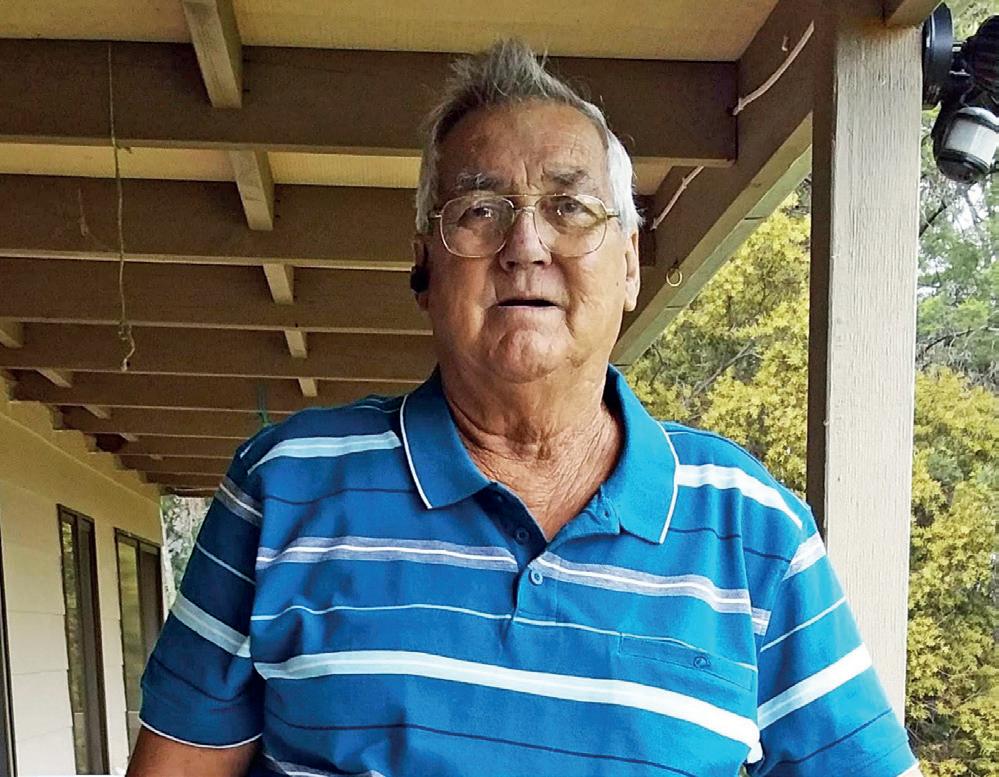
the industry, Jodie says “I kept to myself as a woman in transport.” “I never bit to anything. They’d say ‘Is this your husband’s truck? Where is your husband?’. I’d just smile, nod and keep walking. I don’t need to justify why I’m there.”
Jodie did, however, share the road with “some really good men,” including her older brother.
“If I ever got lost or I didn’t know something, I learnt through Craig. He’s always been there for me, no matter what.” It is no surprise that Jodie’s advice to her fellow operators is to offer a helping hand wherever you can.
In an industry where people
are quick to mock someone giving it a go, or worse, plaster them on social media, Jodie encourages operators to share their knowledge with their colleagues.
Jodie ranks her induction into the Shell Rimula Wall of Fame, alongside her dad and brother, as one of the proudest, and most surprising, moments of her career.
“I nominated Craig because I really wanted him in there with Dad, but then when my sister put me in also, I was just shocked!”
For Jodie, “being inducted into the Hall of Fame meant being accepted into the industry.”



1,850-2,050
lb-ft @ 975RPM
Extreme duty and heavy hauling for your biggest jobs
Detroit’s most powerful truck engine ever, the DD16 boasts up to 600 horsepower and 2,050 lb-ft of torque. The big bore workhorse provides efficient and dependable power and performance without compromise.
Advanced combustion and aftertreatment technology exceed future emissions requirements whilst retaining exceptional fuel efficiency and uptime.
This power, performance, and efficiency are backed by the most comprehensive warranty and extended coverage packages, ensuring the highest level of support for our customers.
When you buy a Detroit product, you’re buying billions of miles of engineering excellence. Tried and true, Detroit engines are built to ride the roughest roads. With Detroit, there’s no compromise. @ 1,800 RPM

BY DAVID VILE
‘TO train the people of the world to save themselves, and rescue those who can’t.’
This is the vision of Brisbane-based Public Safety Training and Response Group (PSTRG), a multi-function organisation focused on training in and responding to emergencies and natural disasters.
At the forefront of the group’s transport fleet is a 4x4 dual-cabbed Mercedes Benz Unimog which has been built to provide a versatile resource in both emergency and training operations.
The big ‘Benz was on display recently at the AFAC exhibition in Sydney, taking pride of place on the company’s stand, with the truck and its displayed equipment drawing
a number of interested onlookers.
“It’s been designed and made for flood and swift water rescue with a deployable pod, which sits on the back on the truck - it works off hydraulic rams and can be deployed to where it is needed. The pod we have on display here is for our flood water response, and we have other pods for fire and people transport,” said Brenton Clarke from PSTRG.
The Mercedes became part of the fleet last year, making its show debut at AFAC 2023, with the vehicle being developed over a period of two years to serve a number of purposes.
Fitted out by Brisbane-based Unidan Engineering the Unimog features a bulbar/cab protection, front and rear
winches and a rear tray fitted with a crane and container pins to secure the pods.
“Unidan fitted it all out. They had done the ones for NSW SES and other emergency services, so they were aware of the type of fit-out we needed,” Brenton said.
“It was the first time the unique pod system had been done. The concept was a good six months in planning and then a year getting it built and realised, it is pretty unique and a bit of a niche market as to who can build it and getting it to the right specs,” said Brenton.
“We based it around what happened with the floods in NSW a few years back, and what was needed for that type of response, but also future-proofing. We have taken an all-hazards approach with the changeable pods – it’s been set up for floods the last couple of years but with the summer coming on its likely to see a fire response.”

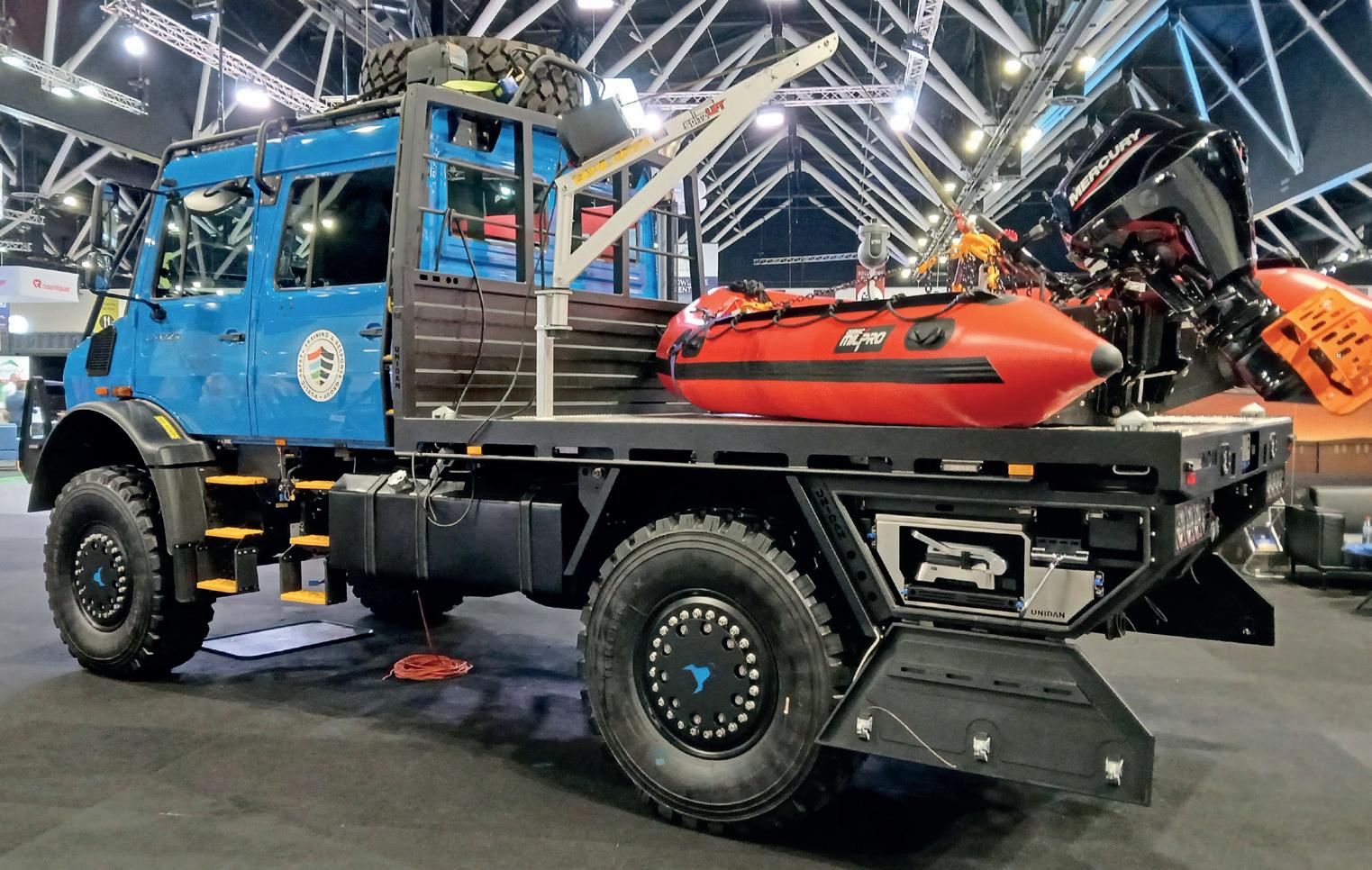
pod so about an 11.5 tonne capability. The GVM is 14.5 tonne so it can work well within those parameters,” Brenton said.
Inside the Unimog, the PSTRG’s own radio system is linked into the government agency radio network, with the communications bolstered with an aviation radio and UHF CB.
A searchlight on the roof can be operated from the inside whilst externally the tray features a de-contamination unit along with a slide-out kitchen, while the crane is used to deploy a flood boat, as shown at AFAC.
Fitted with a towbar the Unimog can also pull a trailer with another pod or other equipment as well.
“It weighs in at 8.1 tonne with about 3 tonne in the
Sitting up on all-terrain Michelin tyres which are fitted with a CTI inflation system, the Unimog can ford floodwater to a depth of 1.2 metres.
The company undertakes a lot of driver training using the vehicle and Brenton reckons operating the Mercedes can be somewhat daunting for some at first, but the truck is a breeze to drive.
“All our driver training is done internally; we have staff who used to drive Mogs in the army.
“We have based our programs around driver training they do in NSW where they have them in use as well, and
our training methods are consistent with those operations.
“It can take a while for people driving to get used to them as not only the height, but the width as well makes a difference. Off road there’s not too many places it won’t go, and it sits on the road really well, it’s very comfortable and sits nice and high, and its lovely to drive.”
With its comprehensive features and capability, off and on the road Brenton says the Benz is more than up to whatever role it will play when needed.
“We have been pretty blessed the last 12 months or so without any major disasters, so it has been put to work for our training purposes. We will work Australia wide and we are there just in case.”

WHILE this company specialises in a range of aerial-related activities supporting farmers, closer to the ground, a highly specialised truck keeps its operations moving.
Family owned and operated, Hazair Pty Ltd was started in 1960 by Margaret and Keith Death, with their son Stephen Death following in his father’s footsteps as a pilot.
Stephen is now co-owner of Hazair, holding the titles of chief pilot and engineer and overseeing their worldwide aircraft ferrying operations.
His expertise in single and twin-engine piloting, over 40 years, has seen him cross 22 countries in every continent on the planet – aside from
Antarctica. Among its key operations are aerial applications for farmers such as seeding and spraying, aircraft hire, restoration and servicing, and training for the local flying school from their main base at Albury Airport. To service its farming activities, Hazair recently purchased a highly specialised Isuzu FVD 165-300 Auto, replacing an older cab chassis truck that was fitted out nearly 25 years ago. In an extremely rare truck set-up, with dual operator controls at opposite ends of the vehicle.
The front-end control is relatively standard, allowing for everyday on-road use. At the
rear end, controls have been engineered to allow the operator to backload the aircraft using the on-board mechanical dipper and bucket, as well manoeuvre the truck concurrently from the same control point.
Engineering the new truck for optimal efficiency was a slow and detailed process, according to Stephen, although one made possible by Isuzu, which was able to create a highly customised build for this niche application.
Hazair operates across regional Victoria and New South Wales, with supporting operations located at Holbrook and Corowa airports, and a base at Brockelsby to help meet growing demand in NSW’s Riverina region.
Closer to home base in Albury, third-generation flyer Alexander Death, Stephen’s son and line pilot for Hazair, has been out “flying for as long as he can remember.”
When the weather conditions are ideal, he’s up in a specialised Air Tractor 402 aircraft imported from the USA, purpose-built for aerial spraying and spreading.
On a farm at Bowna, just northeast of Albury, Alex works to spread superphosphate over the hillsides to improve soil and grass quality for grazing stock.
“Essentially, the super makes the grass grow better, which helps the cows grow better,” said Stephen.
“That’s what we’re here to do – help feed Australia.
“Alex has about 800 litres of fuel on board, burning about 200 litres per hour, and around 1.5-tonnes of superphosphate loaded.
“It’s an expensive operation, but for farmers with undulating terrain, it’s the most efficient way of getting the job done.”
From pre-planned GPSmarked flight routes (accurate down to the metre) to software that assists the pilot in predicting the drift profile of materials, Hazair have been on a mission to make service more efficient.
This extends to supporting their ground equipment.
The new Isuzu aircraft loader truck, is used to pick up materials such as superphosphate from the ground and then it loads it into the top hatch of the Air Tractor’s hopper.
When it came time to update their loader truck, Stephen says Isuzu was a good fit.
“Isuzu was the easiest for us to modify because they already build dual-control waste trucks,” Stephen explained.
“It has an electronic interface with everything we want-
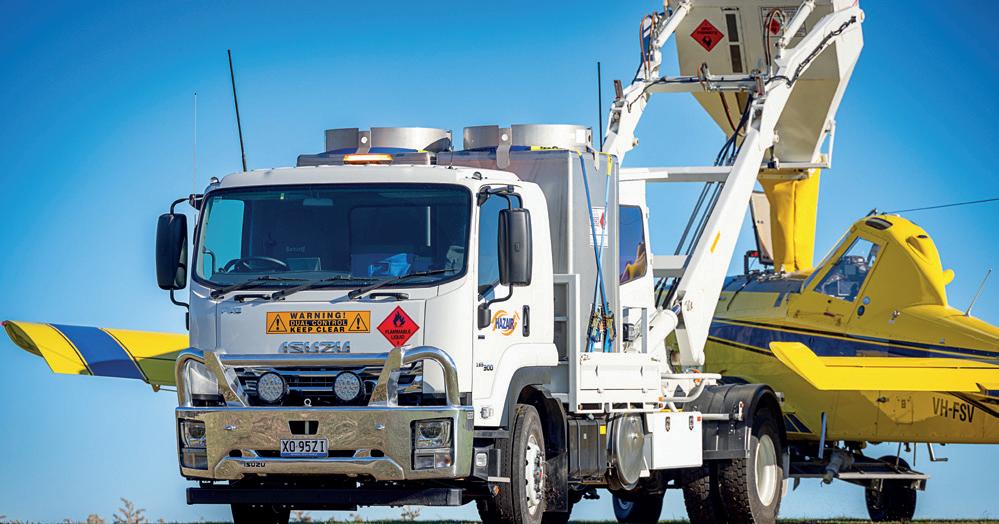
ed: remote steering, remote throttle, remote braking and remote hydraulics in the back.
“Blacklocks Isuzu were able to organise the interface and all the special parts and modifications we needed with the broader Isuzu engineering team.”
In this case, the collaboration between body builder and vehicle supplier was key to delivering the best outcome.
“The truck is a huge longterm investment for us. We went from a very manualised version of the truck to being mostly completely electronic, which is as you would expect in this day and age,” Stephen said.
“It has come with its challenges, so there’s been a lot of liaising with the team at Blacklocks Isuzu.
“They have been phenom-
enal, keeping the build on track for us, which was critical for our costs.”
With a GVM of 16,500kg and GCM of 32,000kg, Isuzu’s FVD model slots comfortably into the mid-weight category.
It’s specified with Hendrickson rear airbag suspension and a 6-speed Allison 3000 automatic transmission, meaning material weight, along with the added weight of the second set of controls at the rear, is well accounted for on-road and in operation.
“The comfort, speed and power of the truck are awesome,” Stephen added.
“It’s quick, it’s efficient and it’s comfortable to drive for Dave Funnell [ground support equipment manager], so his fatigue levels have dropped off.”


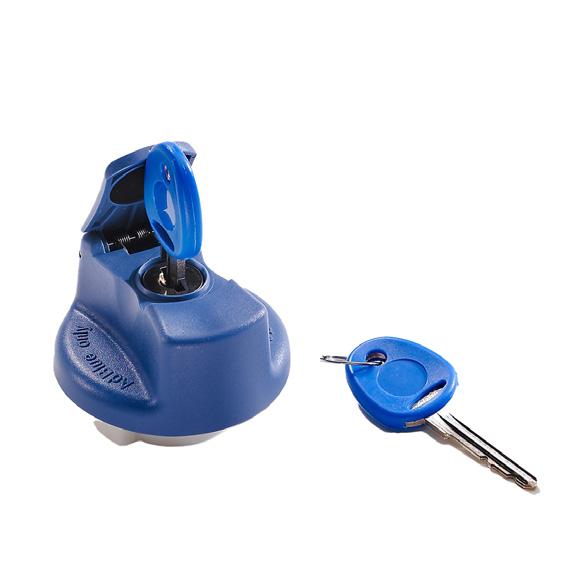
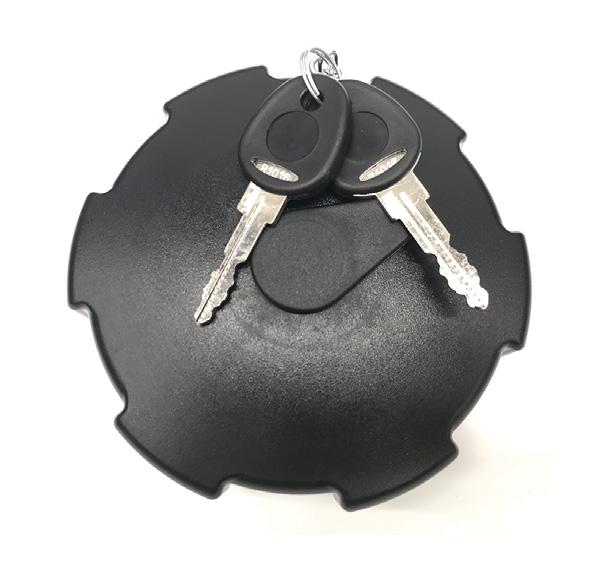


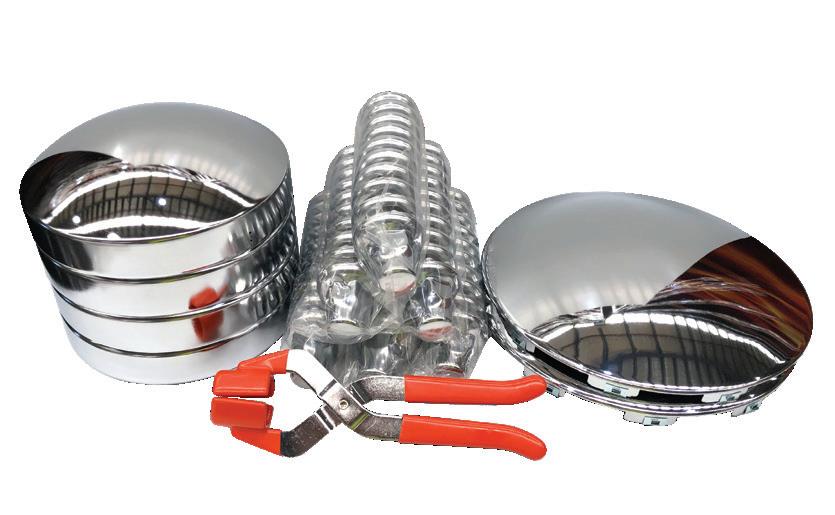
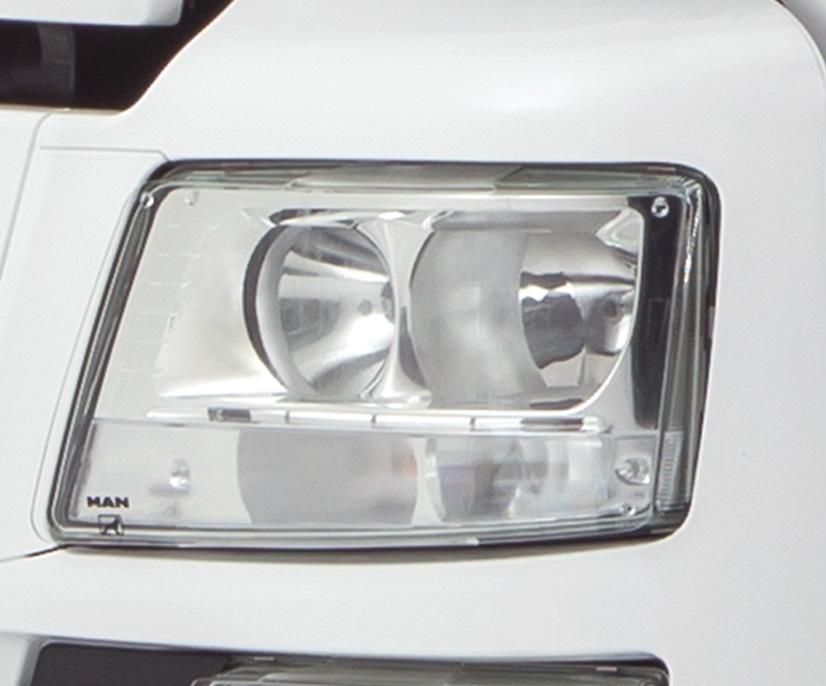
BY DAVID VILE
THE annual Temora Truck Show in the Riverina area of New South Wales featured a healthy rollup of 71 vehicles, from restored heritage trucks through to those virtually straight off the showroom floor.
Held in conjunction with the local Agricultural and Pastoral Show, with generous support from businesses around the region, trophies and prizes were awarded to winners across a number of categories.
It was a successful trip up the Goldfields Way from Wagga for the team from Burkinshaws Transport, with their Kenworths taking out multiple categories including Working Truck of the Show (with their Kenworth T909) and Best Fleet.
Now in its third year, show organisers are looking forward to making the 2025 edition bigger and better.
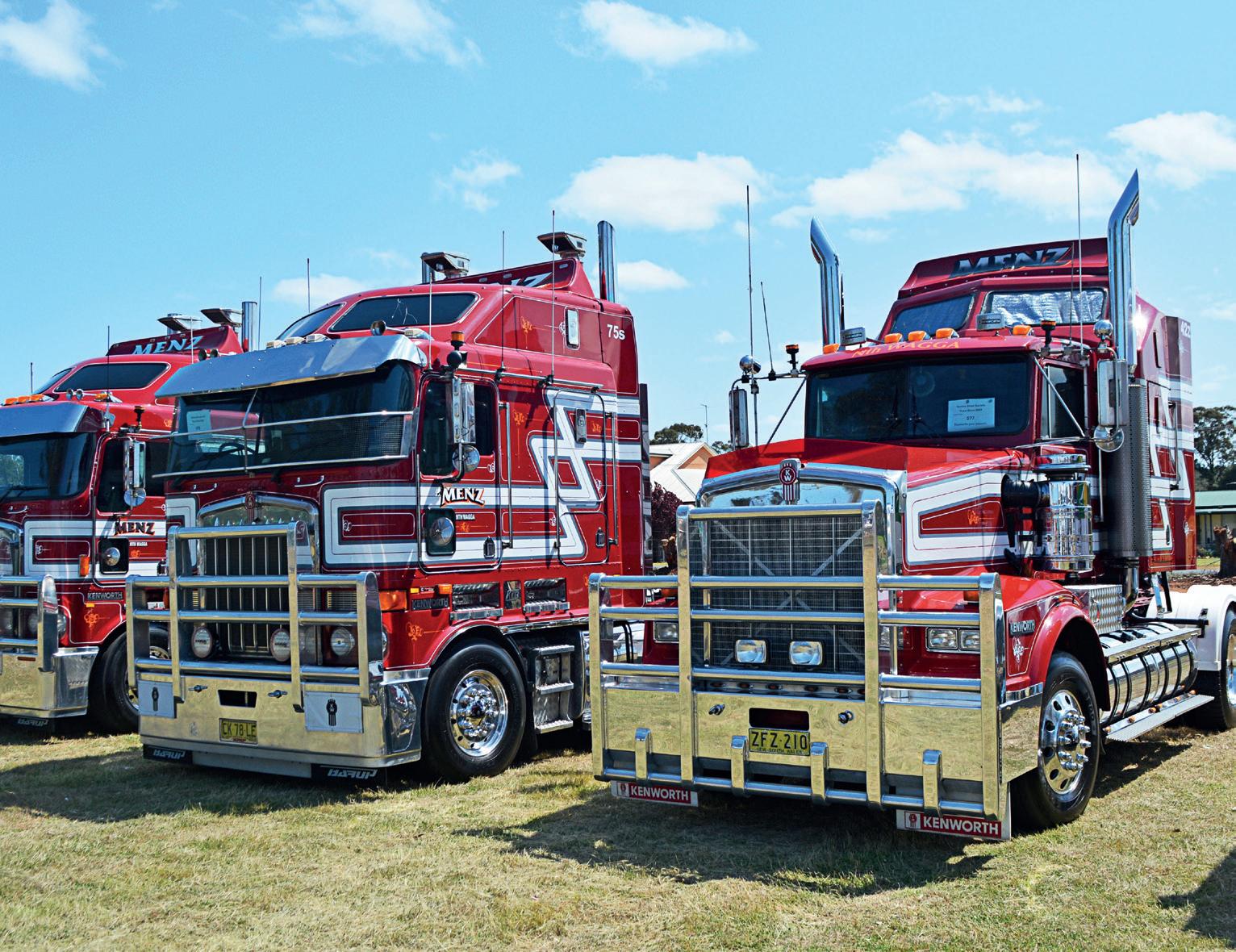


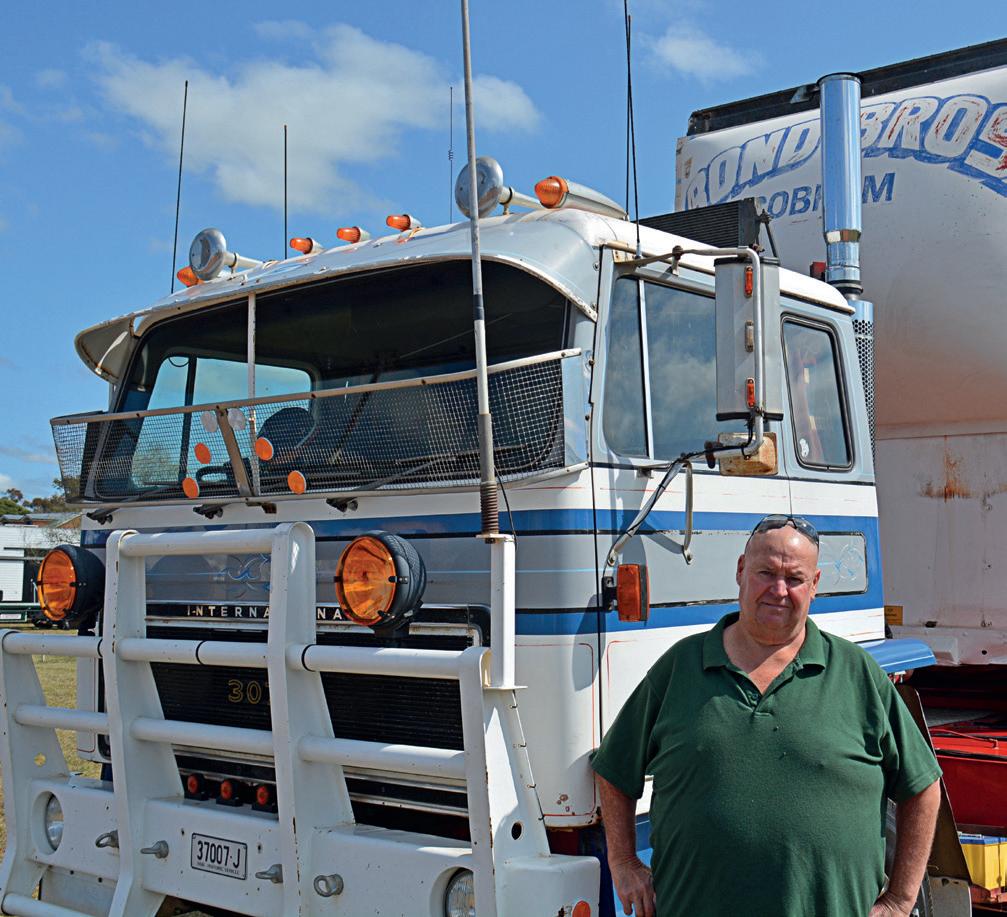



Best Working Truck of the Show
Burkinshaws Transport – 2022 Kenworth T909
Best Heritage Truck of the Show
Scott Menz – 1988 Kenworth T650
Best 2020 – 2024
Dillon’s Transport – 2024 Kenworth T659
Best 2015 – 2019
ABC Freighters – 2015 Kenworth T950
Best 2010 – 2014
Burkinshaws Transport – 2013 Kenworth T909
Best 2000 – 2009 Scott Menz – 2000 Kenworth 104
Best 1990 – 1994
All American Custom Chrome – 1993 Kenworth
Best 1980s Scott Menz – 1988 Kenworth T650
Best 1970s Peter Fitzpatrick – 1970 International
Best 1960s
Ralph Hetherington – 1967 Kenworth W923
Best Ladies
Wiffen Cartage Services – 2024 Kenworth
Best Local 2666 Post Code Altora Ag – 2023 Globetrotter
Best Farmer Truck
Daryll Stelter – Kenworth
Best Service / Breakdown Truck
Daimler Truck Waggo – 2022 Fuso Canter
Best Fleet 3+ Burkinshaws Transport
Oldest Truck
Eric Francis – 1962 Ford F700
Young and Upcoming Encouragement Award Ricky Morris – 1983 Kenworth K125
Major’s Choice
Land Transport (driver Tony West) - Miss Ivy Kenworth 610SAR
People’s Choice
Burkinshaws Transport – 2024 Kenworth T909



The UD Quon may be our greatest modern achievement.
From its 2004 introduction with the world’s first ‘Selective Catalytic Reduction System’. To its reinvigoration in 2017, with Euro 6 compliant technology. To today, with the reimagined Enhanced Quon, that continues to break boundaries with greater safety, productivity, comfort and sustainability. We continue to go the Extra Mile to ensure our flagship Quon is better for business, better for people, and better for the planet. There’s a reason the UD Quon is the truck Australia trusts.
Going the Extra Mile
To find out more, contact your UD Trucks dealer on 1300 BUY A UD or visit udtrucks.com/australia

BY KAYLA WALSH
A whopping 1100 trucks rolled into the Hawkesbury Showgrounds in Clarendon, NSW recently to take part in the famous Kenworth Klassic.
The 17th year of the event saw 722 shined-up Kenworths on display – 80 of them W Models, which was the theme for 2024.
Organiser David “Chappo” Chapman told Big Rigs: “The show is a bit of a juggernaut at this stage.
“It’s the biggest truck show in the southern hemisphere, and the fourth biggest in the world.
“We’re very happy with how it went – another year of craziness!”
Chappo said truckies came from far and wide to take part in the show, with some even bringing their rigs over from Tassie.
“We had 16 trucks come from Tasmania, and we had that many trucks bobtail down from Bundaberg.
“The fuel for one fella’s two trucks would have cost the same amount that it cost us to run the whole show!”
There are no awards at the event, because it’s more about bringing people together.
“It’s not about people polishing their trucks all weekend to try to get a plastic trophy,” he said.
“Although don’t get me wrong, a lot of them do want that.
“I’ve probably just not had good enough equipment to win a trophy!
“It’s more about people in transport coming together to have a barbecue, with no pressure.
“There are free rides for the kids and it’s a full-blown family vibe.”
Chappo said one of the highlights of the show was seeing all of the iconic W models parked up together.
He wanted to thank photographer Peter Schlenk, as well as the team of volunteers, for their help with the show.
“We’ve got two girls who organise all the trucks and register them on the Kenworth side, and we’ve got three of our mates who park the other trucks,” he said.
“Then Bruce Gunter, who is the figurehead of the show, parks the Kenworths.”
Although other shows, like the Casino Truck Show, have to put a cap on the number of trucks that register, Chappo said this isn’t a problem for the Kenworth Klassic.
“We’ve got over 100 acres that’s choc-o-block full of trucks but we’ve got another 100 acres or so to play with in the back yard.
“We’ll never cap it. Whoever wants to can come along.”
As well as the Kenworth Klassic, the broader show featured displays of vintage machinery, stationery engines, tractors, and more.
There was free admission and camping for exhibitors, and a two-course rally dinner on Saturday evening.
Chappo is looking forward to coming back next year –though he wouldn’t reveal the Kenworth Klassic’s theme for 2025.
“That’s still a secret,” he said.
“I have an idea, but I’ve got to run it past my work partners before I announce it.
“We are definitely back for next year though, and everyone is welcome.”



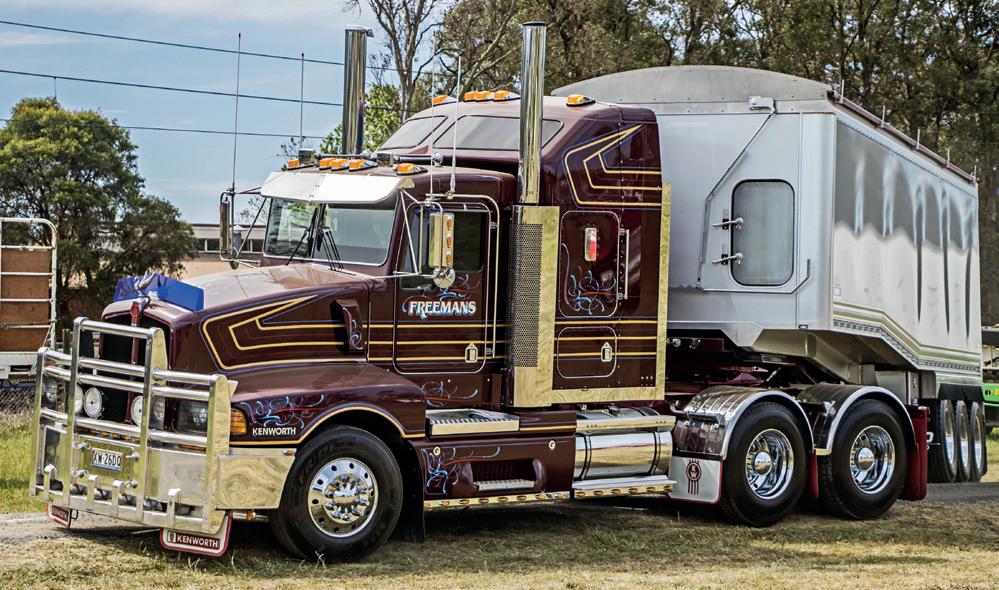




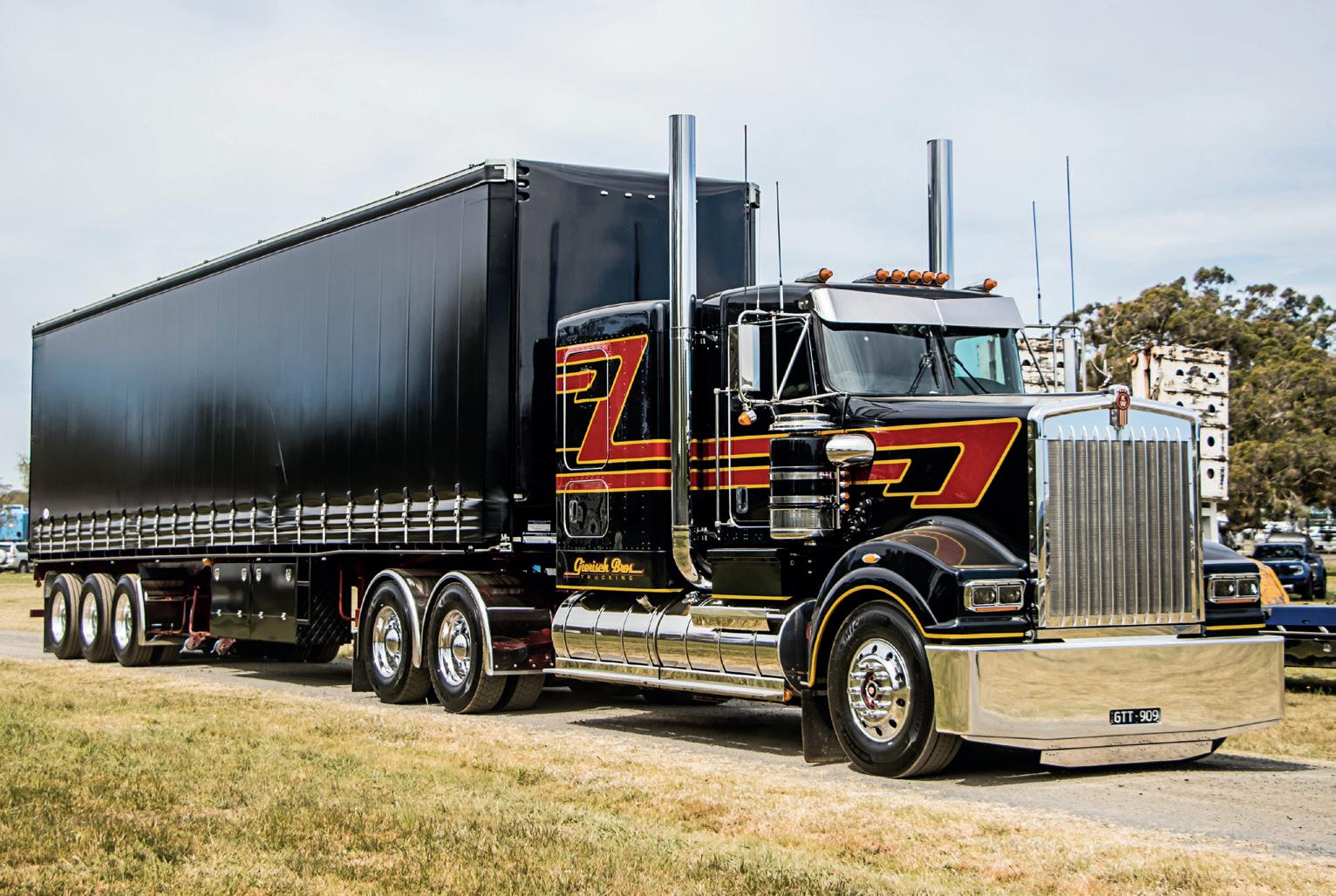
As a global leader in IoT and connected transportation, Geotab processes and analyses data from over 4 million connected vehicles, generating over 75 billion data points per day. It’s a huge amount of data, and it is most powerful when we have the right tools to securely and efficiently manage it. That’s why we have partnered with Google to leverage Google Cloud’s data analytics and machine learning solutions.


Geotab has been awarded two Google Cloud Customer Awards for its achievements in the transportation sector. Recognition in both the Cross Industry and Sustainability categories underscore Geotab’s successful use of Google Cloud’s analytics to innovate and drive sustainable practices in fleet management.
Kirsten Kliphouse, the President of Google Cloud Americas says that the Awards are an opportunity to recognise the most innovative, technically advanced, and transformative cloud deployments across industries globally built on their platform.
In her congratulatory message to Geotab, she acknowledged Geotab’s role in “serving as an innovator for the industry”, which also highlights Geotab’s innovative integration of data to revolutionise the transportation sector, leading to transformative impacts across organisations and customers around the world.
As the world’s premier EV telematics provider, Geotab has demonstrated its commitment to reducing emissions through its Electric Vehicle Self-Assessment (EVSA) tool, which won Google Cloud’s Award for Sustainability.
The tool provides tailored EV recommendations to support businesses and governments in transitioning to electrified fleets. For two consecutive years, Geotab was also identified as a Cross-Industry winner impactful transformation facilitated by Google Cloud. The award also acknowledges the launch of the Intelligent Transportation Systems (ITS) and its flagship transportation analytics platform Altitude.
Altitude has been pivotal in supporting government agencies by offering actionable, privacyconscious data insights for city planning and transportation network enhancements.
DEPARTURE DURATION
Strong synergy of Geotab and Google Cloud show great potential
As a valued partner in the Google Cloud Ready - Sustainability validation program, Geotab plays a crucial role in accelerating sustainability programs and informing strategic decisions for future developments.
Geotab’s collaboration with Google Cloud delivers significant benefits, including real-time improvements in driver safety and behavior, advancement of sustainability goals, enhanced productivity and significant cost savings.
This partnership not only redefines fleet management standards but also illustrates the impactful role of technology in fostering a more sustainable and efficient transportation industry.
An industry-leading solution
Geotab’s partnership with Google demonstrates the company is at the forefront of leveraging data analytics and machine learning to enhance fleet management, drive sustainability and create safer transportation systems worldwide.
By integrating Google Cloud’s advanced analytics with its telematics expertise, Geotab is confident of continuing its lead in the development of sustainable transportation solutions, demonstrating the profound impact that innovative technology can have on the transportation system today.
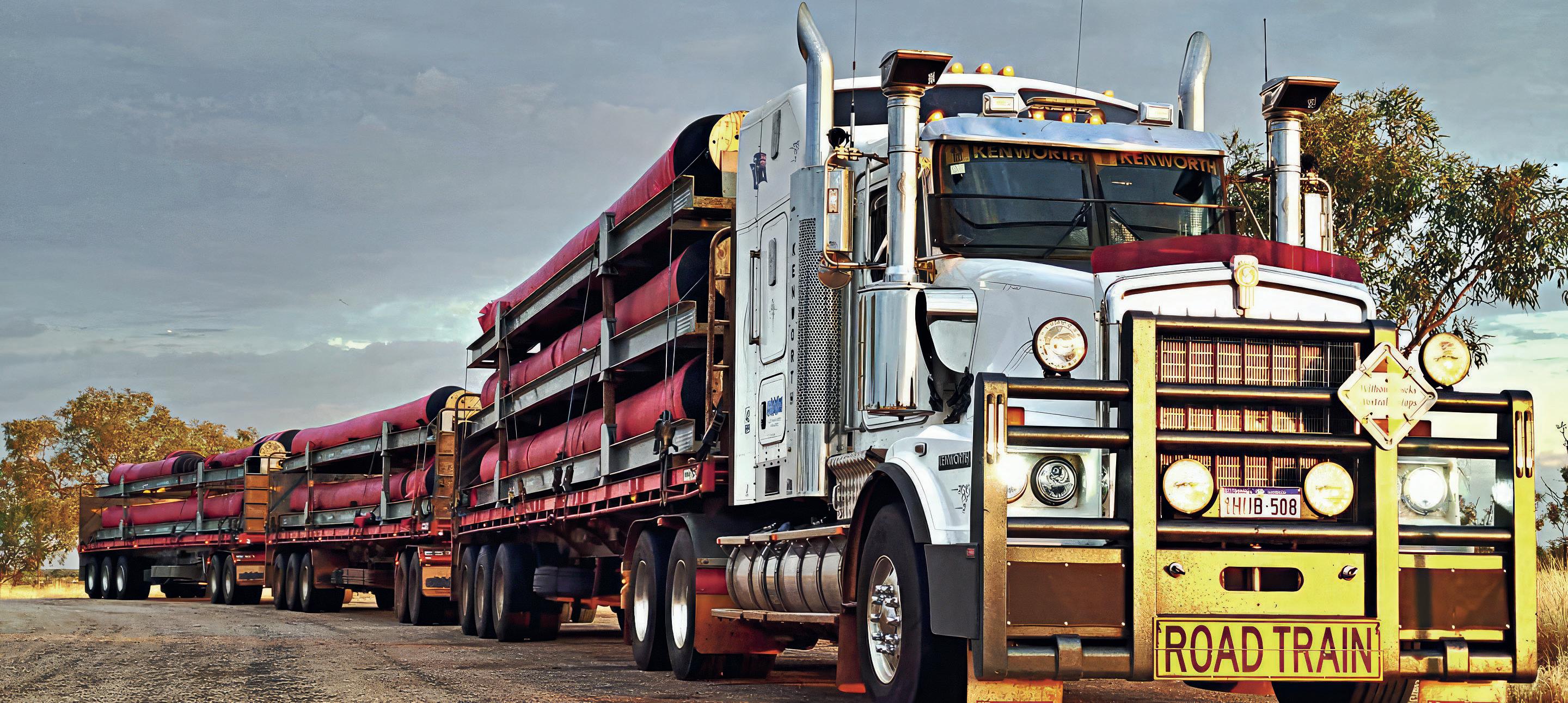
SHELL Rimula has partnered with Big Rigs in a big way – so there are even more reasons to send in your best truck shots.
Each month, the Big Rigs team will choose a #PicOfTheMonth, with the lucky winner receiving a $500 Shell Coles Express Gift Card.
Keep an eye out for our regular posts on the Big Rigs National Road Transport Newspaper Facebook page, calling
for your best truck photos and add yours in the comments, or email them to kayla.walsh@ primecreative.com.au.
Don’t forget to include a brief note about the truck and where the photo was taken. We’ll feature some of the best photos in each edition of Big Rigs Newspaper, with one winner announced each month.
Keep those amazing truck pics coming!

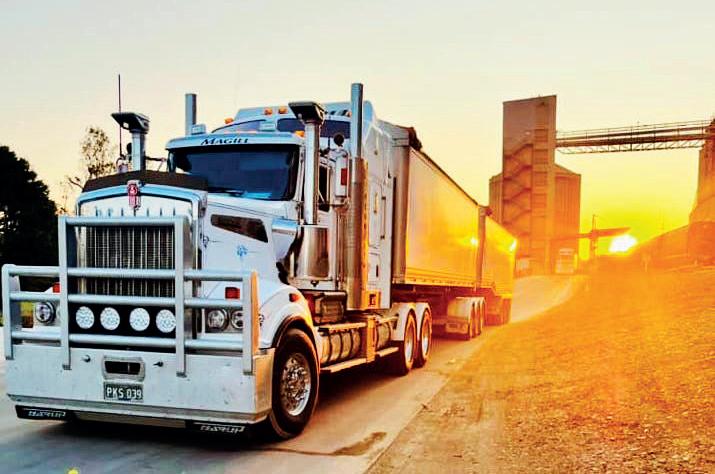
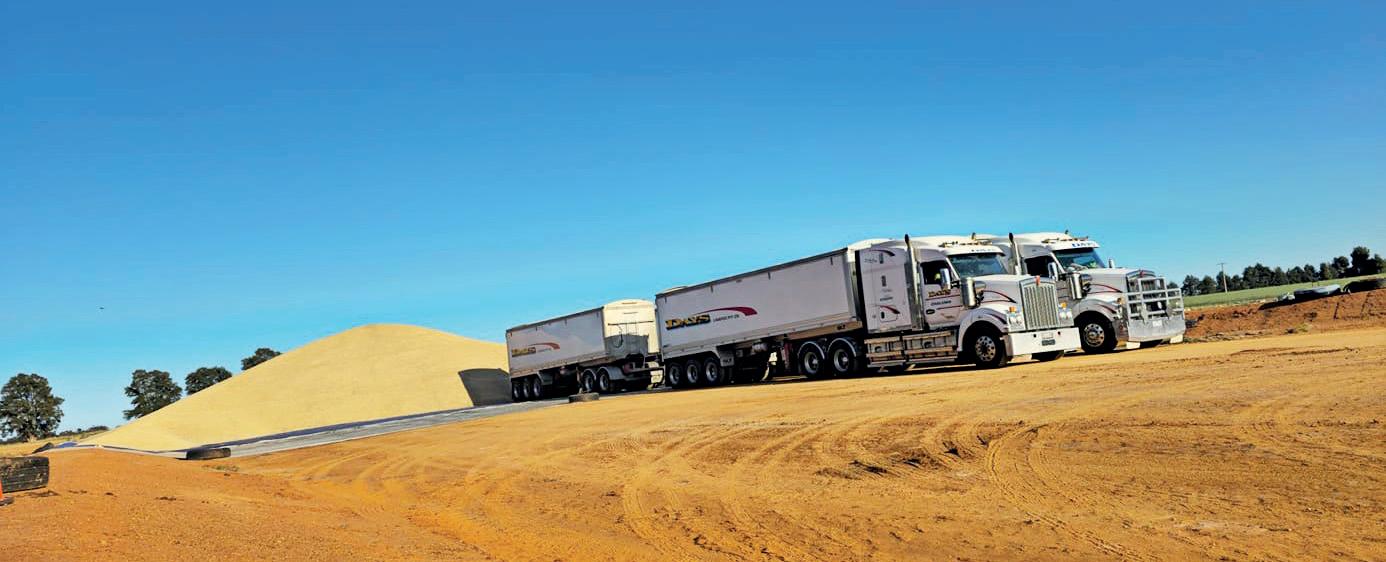


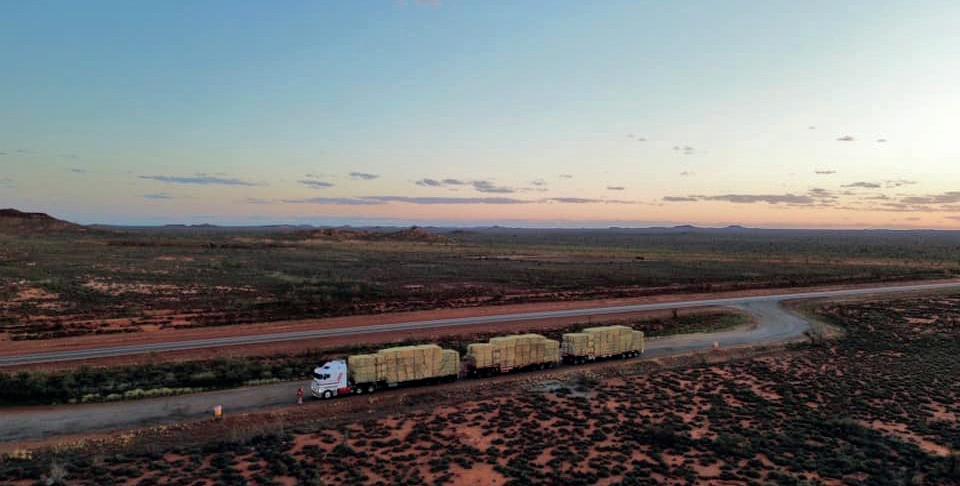
When the going gets tough, truckies keep everyone going



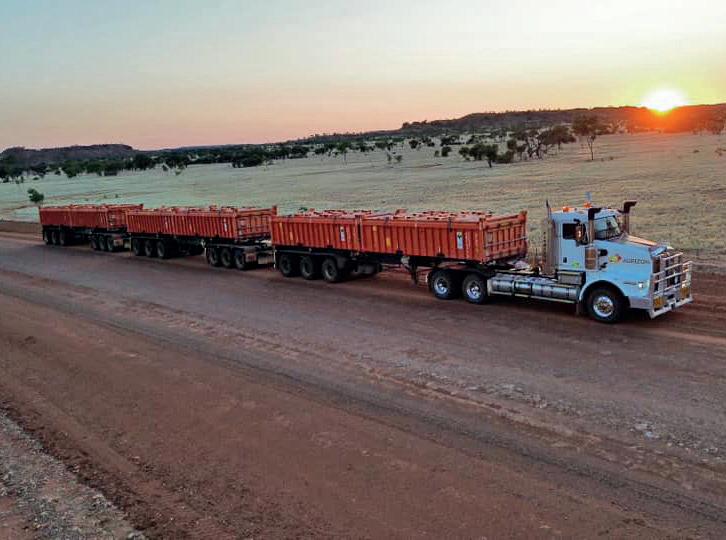


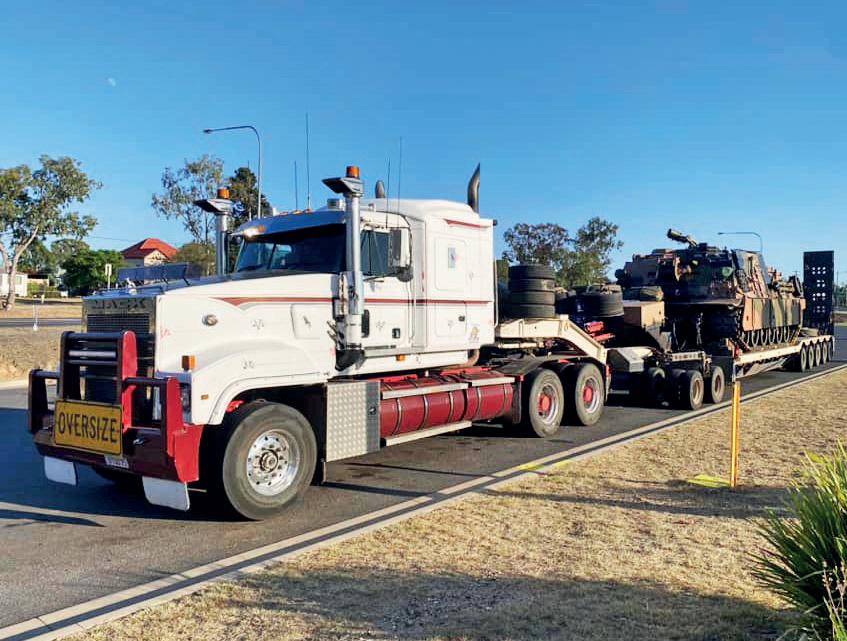
THE Queensland Trucking Association (QTA) celebrated the 33rd QTA Road Freight Industry Awards at its showcase event of the year at the Royal International Convention Centre, Bowen Hills, last month.
The 450 guests were welcomed to an ambient outdoor experience in the venue forecourt with the night lights revealing some of the industry’s finest trucks displayed by Brown and Hurley as well as members celebrating business milestones including Frasers Livestock Transport (80 years), Kelly and Sons Transport (50 years), Knights Towing (50 Years), Followmont Transport (40 Years) and Wickham Freight Lines (30 years).
The feature of the night was the presentation of six prestigious awards, recognising outstanding industry achievements.
The winners were:
Industry Excellence
Individual Award - Mark
Tobin, Followmont Transport
• As the CEO and managing director of Followmont Transport, Mark’s leader-
ship has been instrumental in driving innovation, sustainability, and growth within the road freight industry. He has a deep-rooted passion for transport and servicing regional communities. Combined with his dedication to the wellbeing of employees as well as his commitment to supporting many not-for-profits, he has and continues to make a lasting impact.
• With a strong family foundation and over 40 years in the road freight industry, Marschall Group is a fine example of a family business with origins in regional Queensland. Led by brothers Michael and Stephen, the multi-faceted business provides general freight, heavy haulage and specialised crane services. Seeing value in having a strong voice for industry, Marschall’s were one of the first few businesses to join the QTA holding a membership number of 003. Through active
involvement in industry associations, Marschall’s have always proactively worked to improve standards in the industry by volunteering time to contributing to meetings and committees. Being one of the first companies to run PBS A-double tippers to the Port of Brisbane is testament to their commitment to innovation. Their dedication extends beyond business, as they actively support local communities and advocate for the betterment of the transport sector.
• As CEO of Exodas Pty Ltd, Cheryl has spent over 12 years making significant contributions to the transport industry, earning widespread respect for her leadership, integrity, and dedication. She has played a pivotal role in the growth of the business while driving safety, compliance, and team development within Exodas. Cheryl’s passion for improving industry


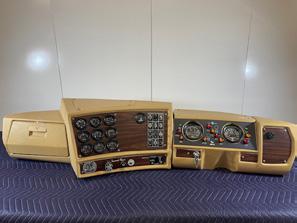

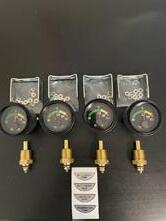




standards and her commitment to her team and community have made her a standout leader.
• Gabriel’s journey in the road freight industry began in 2019 when he moved from Colombia to Australia, driven by his passion for logistics. Starting in sales and customer service, Gabriel quickly advanced to
become sales and marketing manager, demonstrating exceptional leadership potential and drive for innovation.
• Luke’s passion for the industry started when he worked on a cattle station. At 19, he started at Fraser’s as a workshop hand then driver. Luke’s skill and ability saw him advance seamlessly through license levels. Luke now plays a key role in fleet operations where he helps manage logistics for over 2.5 million animals annually.
Health and Wellbeing Award - Wickham Freight Lines
• As a leader in the Australian transport sector, Wickham Freight Lines has long demonstrated a deep commitment to the health and wellbeing of its workforce. Through innovative programs such as their collaboration with Lite n Easy, the Wellbeing Gateway App, and their “Beyond the Barbell” initiative, they have fostered a culture of care, productivity, and
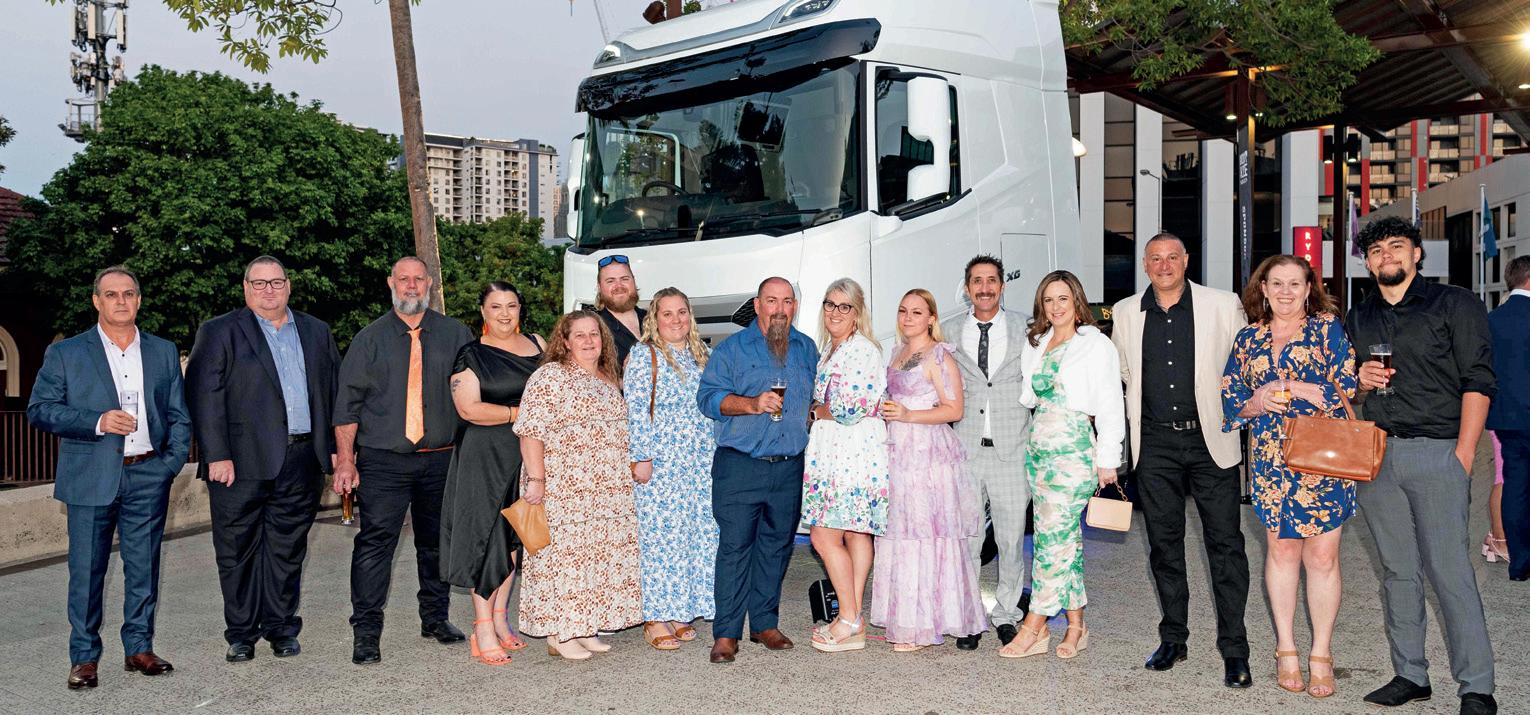
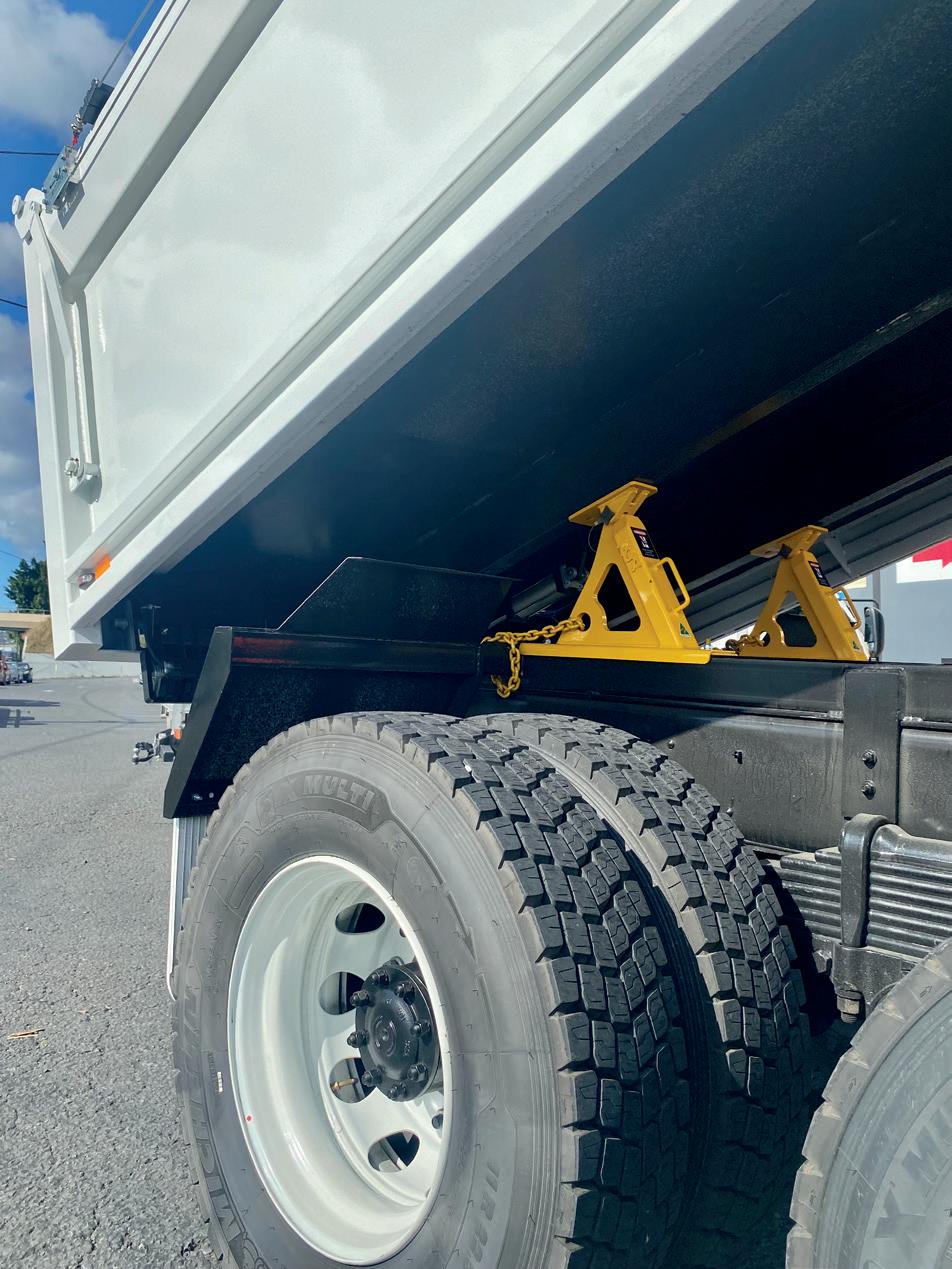







holistic support. Their dedication to improving the physical and mental wellbeing of employees has significantly contributed to their success and the overall strength of the business”.
Professional Driver of the Year Award – Brad Train, VE Group AU
• Brad Train from VE Group AU was awarded the Professional Driver of the Year Award. A dedicated professional driver, Brad exemplifies professionalism, safety, and a passion for the industry. With over 27 years of experience, Brad has an unblemished and exemplary driving record, demonstrating his commitment to safety and operational excellence. He demonstrates immense pride in his work, attention to detail, and continually upholds the highest standards which have earned him this well-deserved honour.
Training and Skilling
• Launched in April 2024, the Road Ready Program equips long-term unemployed individuals, First Nations people, and women with the skills needed for careers in the transport industry.
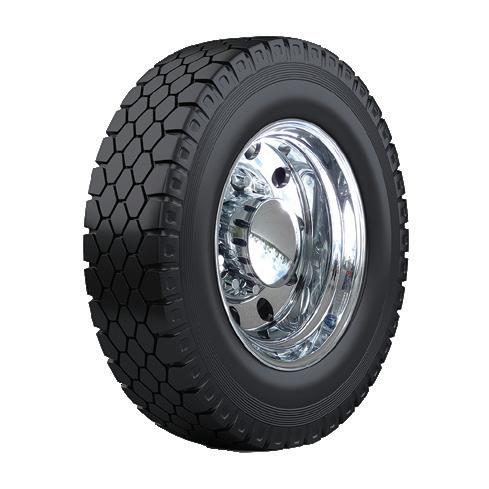
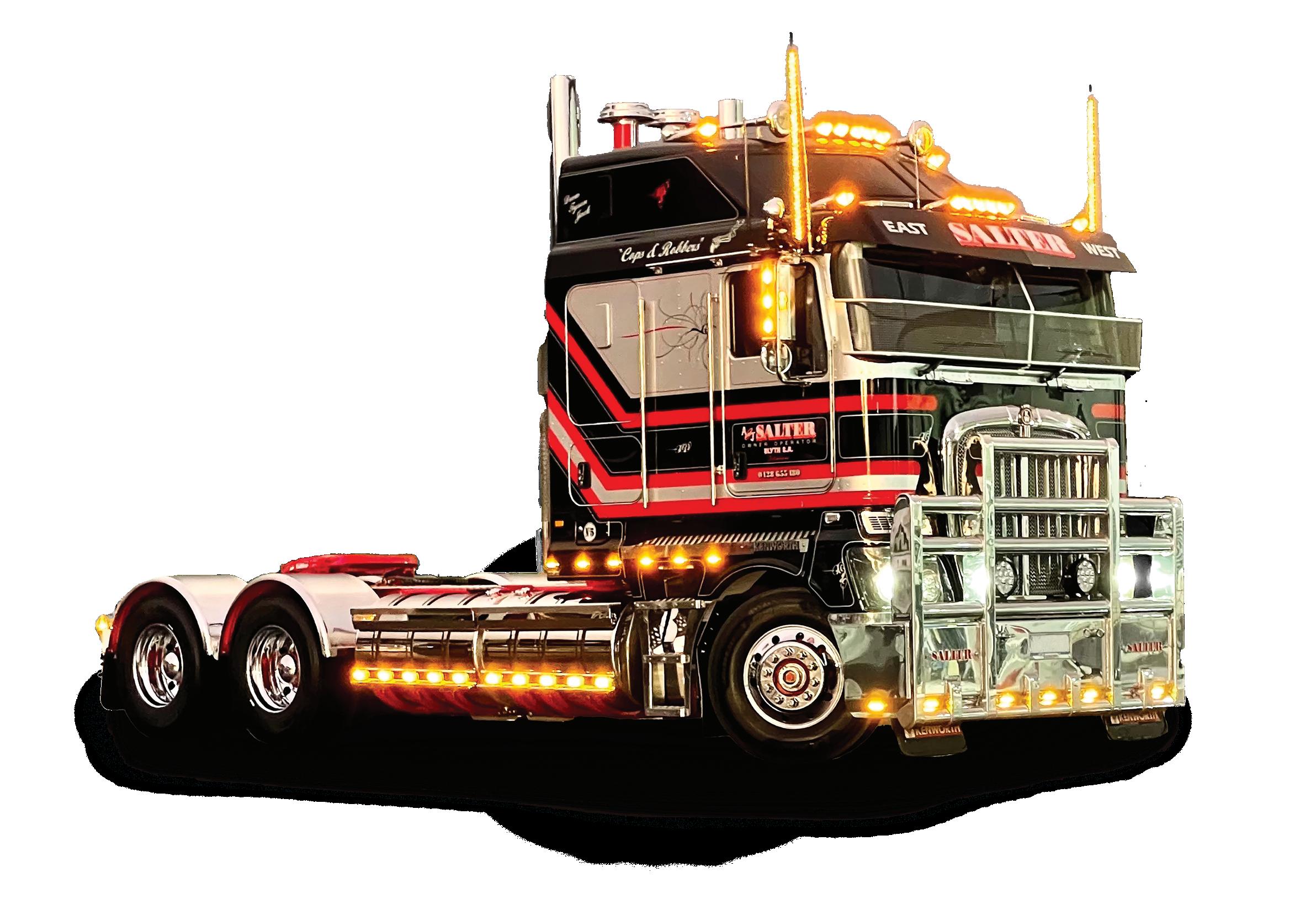
AIRTEC’S smart OBM weight sensors and digital tyre inflators are revolutionising fleet management. Here’s how.
In the rapidly evolving world of fleet management, efficiency and cost-effectiveness are more crucial than ever. Investing in advanced technologies such as Airtec’s smart On-Board Weighing (OBM) weight sensors and workshop digital tyre inflators can be a game-changer for your operations. These cutting-edge tools not only streamline your fleet management processes but also lead to significant savings, reduced maintenance needs, and enhanced overall performance.
Cost savings through precision and efficiency
Airtec’s smart OBM weight sensors offer a revolutionary approach to managing payloads. These sensors provide real-time weight data, allowing fleet managers to optimise load distribution and avoid overloading. By adhering to legal weight limits, companies can avoid costly fines and penalties associated with overloading. Additionally, the ability to accurately measure payloads helps in maximising vehicle efficiency. This precision translates to less maintenance and better fuel econo-

costs and improving your bottom line.
The workshop digital tyre inflators from Airtec further enhance cost savings. By maintaining optimal tyre pressure, these inflators prevent under-inflation and over-inflation, which can lead to increased fuel consumption and accelerated tyre wear. Consistent and accurate tyre pressure helps in extending
ing the frequency of replacements, and lowering overall maintenance costs.
Decreasing frequency of maintenance
Properly maintained equipment is crucial for fleet longevity and reliability. Airtec’s smart OBM weight sensors contribute to decreased maintenance frequency by ensuring that vehicles are not over-
suspension and other critical components. Similarly, digital tyre inflators play a pivotal role in reducing maintenance needs. Proper tyre pressure is essential for optimal vehicle performance and safety. Over-inflated or under-inflated tyres can lead to uneven wear and an increased risk of blowouts. Airtec’s digital inflators ensure that tyres are consistently inflated to the correct pressure, minimising the likelihood of tyre-related issues and the need for frequent repairs.
One of the key benefits of Airtec’s smart OBM weight sensors is their ability to optimise payload distribution. Even weight distribution is essential for vehicle stability and performance. By ensuring that loads are evenly distributed, fleet operators can improve vehicle handling, enhance safety, and increase the overall payload capacity. This means more efficient use of each trip, maximising revenue potential while maintaining safety standards. Moreover, by maintaining proper tyre pressure through Airtec’s digital inflators, it enhances vehicle performance. Correctly inflated tyres improve fuel efficiency, provide

smoother ride. This not only contributes to a more comfortable driving experience but also prolongs the life of the vehicle and its components.
Compliance with weight regulations is not just a legal obligation but also a matter of safety. Overloading vehicles can lead to dangerous driving conditions, increased wear and tear, and potential accidents. Airtec’s smart OBM weight sensors help ensure that your fleet operates within legal weight limits, promoting safety and compliance.
protect your vehicles, drivers, and the public, while also avoiding hefty fines.
In summary, investing in Airtec’s smart OBM weight sensors and workshop digital tyre inflators is a strategic move towards more efficient fleet management. These advanced tools offer significant cost savings, reduce maintenance frequency, enhance payload capacity, and ensure compliance with safety regulations. By integrating these technologies into your operations, you can achieve a more streamlined, cost-effective, and safer fleet, paving the way for long-term success and sus-


THANKS to a range of improvements, Hankook’s newest offering in the truck tyre space is delivering an increased tyre life of up to 20 per cent.
The new AH51 and DH51 models build on the success of their predecessors, the AH31 and DH31, but with significant improvements.
The AH51 offers 15 per cent better mileage, while the DH51 goes even further with a 20 per cent improvement.
Both models also reduce rolling resistance by 10 per cent, making them more cost-effective for operators.
A trusted name in tyres, Hankook has a truly global presence, with eight factories and five research and development centres located throughout the world.
Hankook Tire & Technology began in 1941. Today it produces in excess of 102 million tyres each year, which are supplied to over 160 countries.
Hankook Australia began in 1998 and has grown into the biggest subsidiary in the Asia Pacific region, operating from five branches and four warehouses.
In April, Hankook Tyre Australia launched its SmartFlex Series, featuring truck tyres designed for regional to long-distance travel – with sustainability and future

proofing in mind.
Managing director of Hankook Tyre Australia, Junghee Cho, spoke of the company’s commitment to producing tyres that deliver long-lasting performance. He said Hankook’s unique ‘SmartLife concept’ focuses on maintaining peak performance throughout the tyre’s lifespan. As a result, Hankook tyres can be re-grooved and re-treaded multiple times, potentially increasing tyre life by up to 250 per cent.
The AH51 and DH51 tyres both feature ‘notch-tough’ tread compounds, enhancing resistance and durability for higher mileage performance.
Additionally, Hankook’s Innovative Mixing System (IMS) ensures even distribution of materials within the compounds, reducing energy loss and improving fuel efficiency.
This new sub tread compound reduces tyre rolling resistance, while enhanced casing endurance is offered
by applying a new side wall compound with improved fatigue resistance and anti-crack performance.
The SCCT design technology provides balanced pressure distribution for stability and durability, further enhancing the tyre’s performance and longevity.
Incorporating self-regenerating tread features, the AH51 and DH51 tyres offer extended mileage over their service life, with 3D sipes and hidden grooves maintaining traction and grip even as the tread wears.
The hidden grooves are designed to appear as the tyre wears, creating new water channels and gripping surfaces, and thus providing better wet grip traction.
What’s more, wide tread blocks enhance the tyre’s rigidity and improve mileage, while delivering a low rolling resistance.
The AH51 features small step-shaped blocks that provide even wearing and prevent stone trapping, resulting in a long tyre life.
The DH51 on the other hand has a wider tread block, increasing the tyre footprint and grip, leading to an improved mileage performance and rolling resistance.
Adding to the list of features, applying full depth, zig-zag sipes helps to main-
tain a binding force between blocks in the AH51.
Whereas with the DH51, the centre zigzag grooves create a binding effect on each tread block contributing to better rolling resistance and traction.
The DH51 also features horn-shaped self-regenerating sipes, which reduce stress on the tyre’s shoulders and prevent cracks. They also provide enhanced water evacuation which delivers improved wet performance.
The directional v-shaped sipes on the DH51 enhance grip and regenerate as the tyre wears to give maximum performance throughout the lifespan of the tyre.
While the DH51’s full depth 3D sipes deliver ex-
cellent mileage and traction during the whole tyre life by reinforcing interlocking between blocks.
The SmartFlex AH51 is designed for all positions, with additional supports in the outer grooves for even wear, while the DH51 boasts a wider contact patch for improved traction and rolling resistance.
With features tailored for Australian road conditions, including enhanced durability, improved fuel efficiency, and reliable traction, the Hankook SmartFlex AH51 and DH51 tyres offer a sustainable and future-proof solution for Australian truck operators.
For more information, visit hankooktire.com/au.




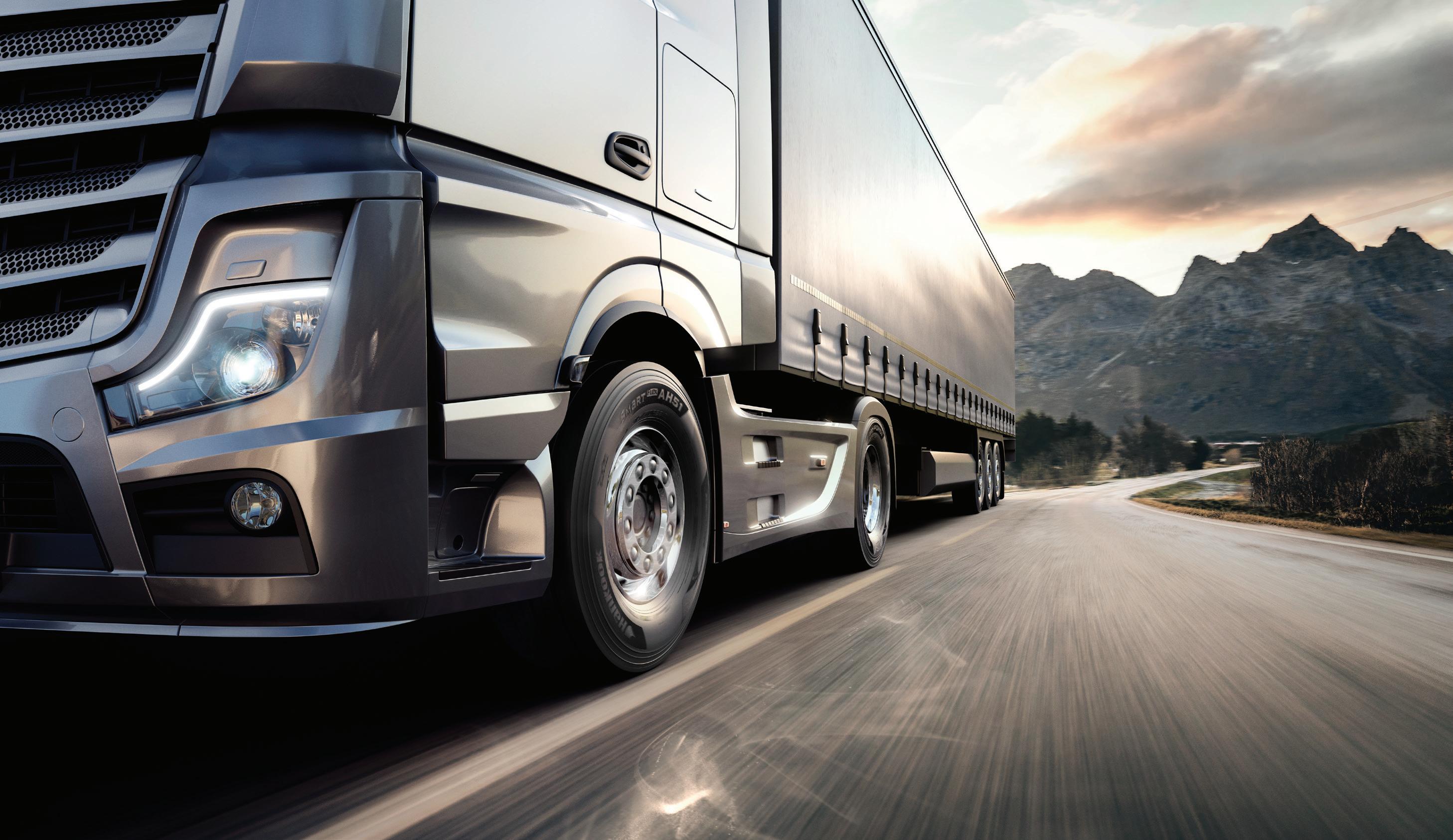
Delivering premium performance in all conditions during the tyre’s long lifespan
AH51 Design features
3-dimension sipe
Full depth 3D sipes deliver excellent mileage and traction during the whole tyre life by reinforcing interlocking between blocks.

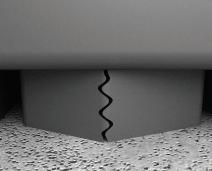





Full depth 3D sipes keep

Full depth 3D sipes deliver excellent mileage and traction during the whole tyre life by reinforcing interlocking between blocks.


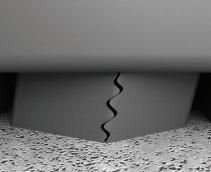
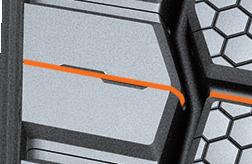



Optimised block size
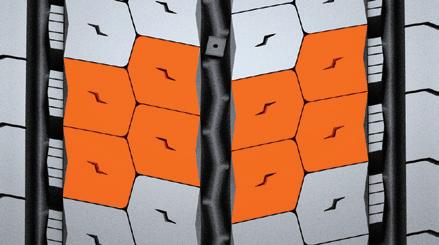
Wide tread blocks enhance the tyre’s rigidity and improve the mileage while delivering a low rolling resistance.

The centre zigzag grooves create a binding effect on each tread block contributing to better rolling resistance and traction.

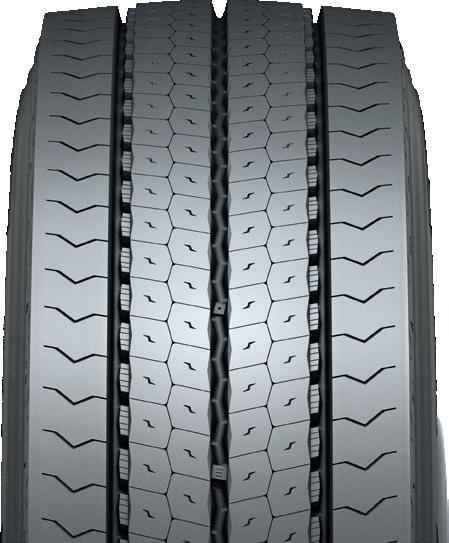


BEST practice in packing cargo in shipping containers, restraining loads correctly, and safely transporting containers will be the focus at a series of eight seminars across Australia in October and November.
The Safe Container Loading & Transport Practices Seminars are being hosted by Container Transport Alliance Australia (CTAA), in collaboration with Freight & Trade Alliance (FTA), the Australian Peak Shippers Association (APSA) and leading safety management company, CoRsafe.
The seminar series is also being staged in collaboration with a Heavy Vehicle Safety Initiative (HVSI) adminis-
tered by the National Heavy Vehicle Regulator (NHVR) on behalf of the Commonwealth Government.
Heavy vehicle accident data compiled by National Transport Insurance (NTI) shows that container-laden heavy vehicles are 36 per cent more likely to be involved in a truck rollover incident compared to vehicles carrying general freight.
A common factor in these incidents is vehicle instability caused by unbalanced or inadequately restrained loads inside shipping containers.
In most cases, heavy vehicle drivers have no prior knowledge of how the shipping container has been packed or how the cargo is secured, if at all.



Load-shift inside the container, an unbalanced load, or a high centre of gravity, can easily contribute to a heavy vehicle accident. These factors equally present risks to other transport modes, including rail, container terminal operations and onboard vessels.
Verified container weights are also an issue in the container transport logistics chain.
Unfortunately, cargo owners and container packers still mis-declare container weights, either innocently or deliberately. Overloaded containers present an unacceptable risk, and significant penalties now apply if these mis-declared containers are identified.
CTAA director, Neil Chambers, explained, “The aims of the seminars are to promote best practice in container packing and cargo restraint from a commercial and a safety standpoint, and to raise awareness of available best practice resources.
“One practical set of guidance to be showcased in the seminars is a Safe Container Loading & Transport Guide recently published by CoRsafe in partnership with CTAA.
“The Guide provides a concise explanation of the legal and practical obligations of stakeholders in the contain-





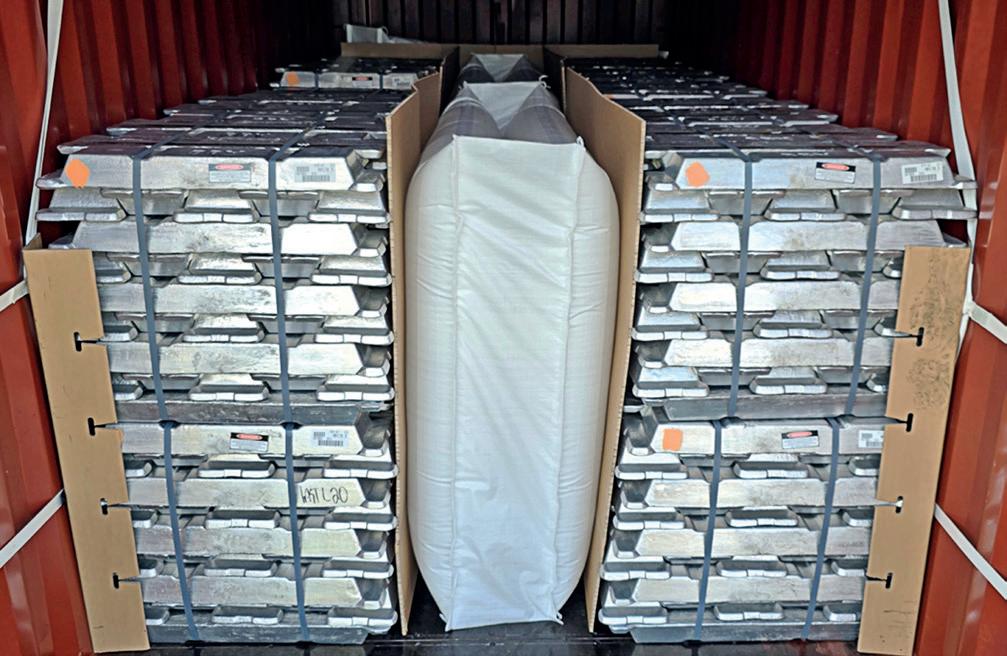
er logistics chain, including overseas suppliers and container packers. It is free of legal jargon for use by frontline staff.
“We are encouraging Australian companies to distribute the Guide to their overseas partners to provide an understanding of the standards they must meet when loading containers bound for Australia. Equally, we’d like Australian exporters to use the Guide and pass it onto their container packers and supply chain partners to promote best practice.”
A downloadable copy of the full-length Guide can be requested at logss.com.au/container-guide.
Attendees at the CTAA Seminars will gain first access
to both a condensed version of the Guide and a version that has been translated into simplified Chinese for distribution to overseas suppliers.
“Back on the Seminars, we’ve gathered an impressive
line-up of speakers and panelists, including:
• Regulatory representatives from the National Heavy Vehicle Regulator (NHVR) and WorkSafe authorities
• Container terminal representatives on container verified gross mass (VGM) misdeclarations (import & export) and container check weighing processes
• Chain of responsibility (CoR) experts
• Marine insurance specialists
• Cargo restraint experts
• Biosecurity and container cleanliness experts
• Road transport experts
• Telematics providers re smart on-board mass (OBM) developments
• Container triangulation –fit for purpose reuse and exchange
The seminar dates and locations are:
• BRISBANE: Wednesday, October 16, 2024
• TOOWOOMBA: Thursday, October 17, 2024
• SYDNEY: Tuesday, October 22, 2024
• MELBOURNE: Tuesday, October 29, 2024
• SHEPPARTON: Thursday, October 31, 2024
• WAGGA WAGGA: Friday, November 1, 2024
• PORT ADELAIDE: Tuesday, November 19, 2024
• FREMANTLE: Wednesday, November 20, 2024
Seminar registrations are available online at ctaa.iwannaticket.com.au.


cooler,
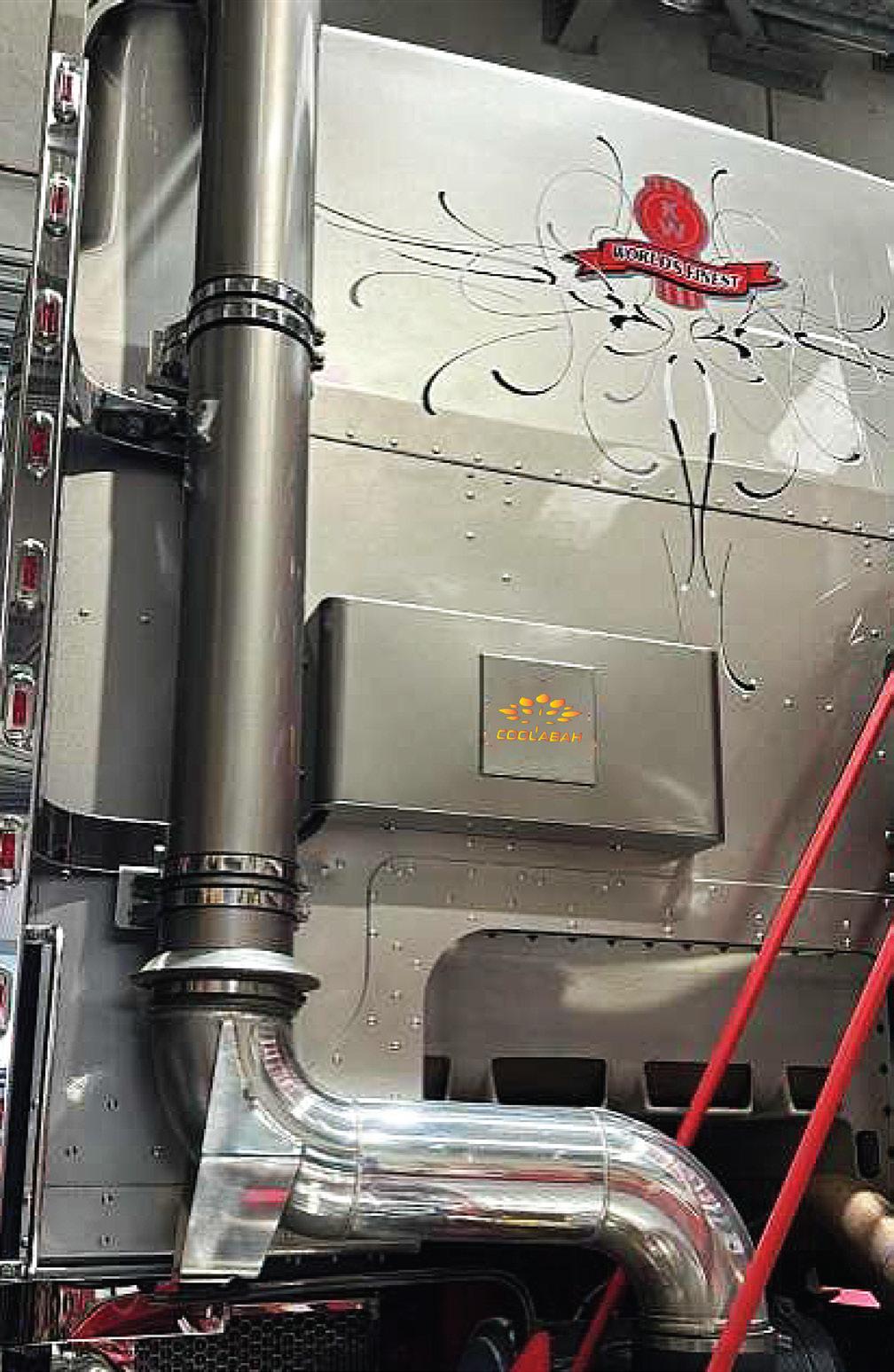
Designed to handle Australia’s tough climate, it withstands our unrivalled road conditions to keep drivers cool without the noise, save owners money and reduce emissions. With our latest model – the Joey – we’re not just promising comfort but delivering it through ever-improving technology.
The new and improved Joey
The Joey model has had significant upgrades to improve cooling efficiency and performance. The compressor now has 25 per cent higher volume than previous models, featuring a dual vane construction for superior air-cooling capacity. This means faster cabin cool down and more efficient operation, even in the intense heat of an Australian summer. With a new brushless condenser fan designed for higher volume and efficiency, the Joey keeps you cool for up two full nights without recharging.
We have increased the condenser surface area by 15 per cent, ensuring better performance in hot conditions. With increased battery options ranging from 5, 6, 10 and 12kWh configuration providing up to 24 hours of continuous operation for long hauls in hot temperatures. Our switch to LFP (lithium
iron phosphate) battery technology not only extends battery life and safety but also enhances durability, ensuring long-term consistent performance.
We know the Australian climate can be tough, especially for truck drivers spending long hours on the road. Coolabah units, including the Joey, are built to handle Australian heat, particularly in well-insulated trucks. With the Joey’s improvements, drivers can expect a cooler, quieter, and more comfortable rest, helping to reduce fatigue, which is all too common in the industry.
The Joey isn’t just about driver comfort, it is also about cost and fuel savings and sustainability. Compared to traditional diesel units, Coolabah air-conditioning systems offer major weight and space savings and significant cost savings on both fuel and maintenance, generally exceeding $4500 per truck per year. Our units are environmentally friendly too. The Joey produces 99 per cent fewer carbon emissions per hour
compared to traditional diesel air conditioning systems. With only 0.02 g/hr of emissions compared to 3.2 g/hr from idling trucks, you’re contributing to cleaner air every time you rest – which is increasingly important for OH&S compliance on busy yards and truck stops. In terms of noise, the Joey is 11 times quieter than diesel-powered units. Traditional diesel systems can be as loud as 70 decibels – equivalent to a vacuum cleaner – while the Joey runs at under 35 decibels, comparable to leaves rustling or a whisper. This feature is especially important to attracting more female drivers to the industry, as women require quieter sleeping conditions to get a good night’s sleep and are ready to hit the road refreshed and content.
Proudly built by Australians for Australians, Coolabah understands the needs of truck drivers across the nation. With over 4000 units on the road and a reputation for reliability, our products are trusted by some of the country’s largest trucking fleets. When you choose Coolabah, you’re not just buying an air-conditioning unit; you’re investing in local manufacturing, qual-
ity, comfort, and long-term savings. Do your bit to decarbonise today! For more information, visit coolabahdcac.com.

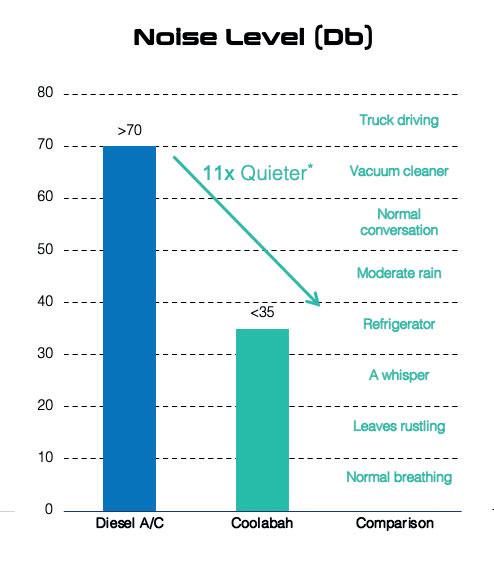
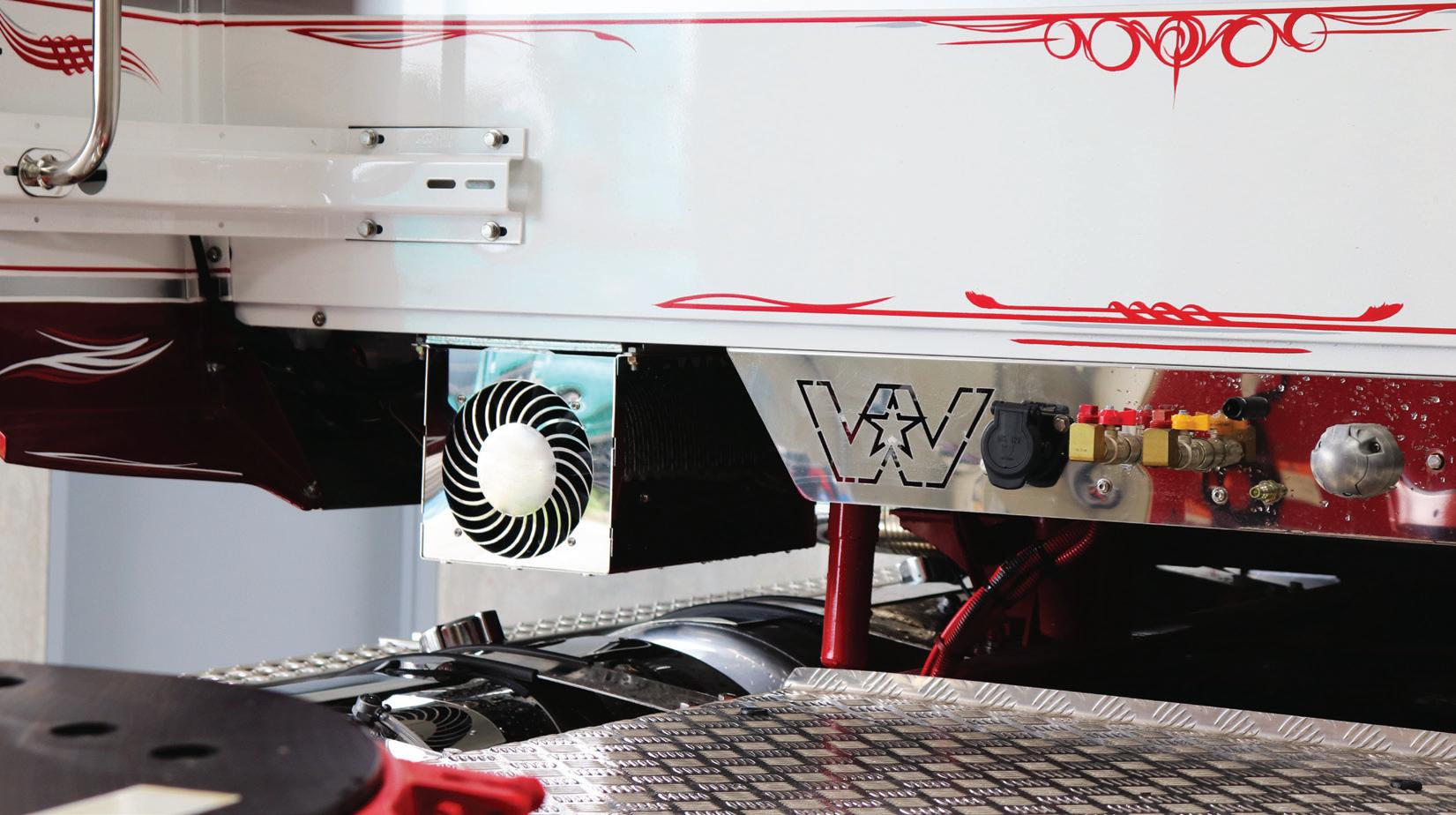



FLEETGUARDMAP is a coolant monitoring service that provides information on the health of the coolant and alerts the customer of cooling system issues before they become major concerns which may lead to costly unplanned downtime or engine failure. For transport and heavy vehicle businesses, planned maintenance is a vital component of cost control. Preventing engine failures that force vehicles off the road or offsite outside of planned maintenance is core to FleetguardMAP offerings.
Atmus Filtration Technologies know that our clients strive for seamless maintenance of their engines, which is why we developed the advanced coolant analysis pro-
gram FleetguardMAP – a free service for Fleetguard customers that monitors and protects their engines.
The FleetguardMAP testing process involves a range of in-depth tests on the engine’s
coolant which can identify problems with the coolant and/or the engine’s cooling system. The tests can identify early signs of overheating and corrosion, changes in the coolant chemistry (protec-



tion), coolant/additive dilution, contamination by fuel/ oil or hard water (calcium/ magnesium), radiator fluxes, chlorides, and sulphate.
This knowledge is pivotal to the client who needs to know that the coolant is protecting the cooling system, and therefore the engine, before significant damage is done.
Fleetguard customers simply register on the website to redeem up to two free sample kits per vehicle per annum or buy additional kits through their Fleetguard dealer. Once the samples are posted to our laboratory, inhouse FleetguardMAP experts perform quality control tests on these samples to provide a comprehensive and easy to interpret report in a timely manner –
normally within 3-4 business days.
The report will outline the condition and the quality of the coolant sample and highlight key issues and recommendations. Reporting on information as to whether the coolant is over diluted, cavitation protection is near lower limits or hardwater contamination is detected will be crucial for future maintenance. The report is emailed to the customer and held securely in the cloud so that data can be reviewed and measured remotely for each engine over time.
Atmus Filtration Technologies understands the need for customers to reduce the total cost of vehicle ownership and it is through Fleetguard’s flag-
THE FLEETGUARDMAP TESTING PROCESS INVOLVES A RANGE OF IN-DEPTH TESTS ON THE ENGINE’S COOLANT WHICH CAN IDENTIFY PROBLEMS WITH THE COOLANT AND/OR THE ENGINE’S COOLING SYSTEM.”

ship engine coolants, PG Platinum and PGPlus that this can be achieved. With 40 per cent of all heavy-duty engine failures attributable, directly or indirectly, to improper cooling system maintenance, FleetguardMAP aims to extend our customer’s vehicle engine efficiency and life. Fleetguard is the only filter company owned by an engine manufacturer, so it is in our interest too that we have made engine care our number one priority.
To register or order your free sample kits, go to fleetguard. com. Once the kit is received, you can take a sample and post it to the lab.
For more information, visit fleetguard.com or call Atmus Filtration Technologies on 1800 032 037.

FOR quite some time, Bruce Rock Engineering (BRE) has found triumph with its specialty in Performance-Based Standards (PBS) and tipper combinations for the bulk commodity logistics sector.
Although, as the sole Australian distributor of Wabash National’s dry and refrigerated trailers from the United States, the company has shown that when new opportunities arise, it’s able to not only adapt but excel.
BRE has been partnering with Wabash for over 10 years now. The collaboration initially involved bringing its completed Arctic Lite refrigerated trailers down under through roll-on, roll-off (RORO) and to Australian specifications, but it has since expanded into a whole new range of reefers and further innovation.
“We originally partnered with Wabash for market supply between 2010 to 2014 after the global financial crisis boom, which provided us the extra capacity to complement our own locally made product,” says BRE Managing Director, Damion Verhoogt.
“Using Wabash’s R&D projects, we identified that their
composite van panel resource would be a huge potential for our market with tare weight and thermal efficiency improvements.”
Since Wabash first developed its innovative Cold Core Moulded Structural Composite (MSC) van panel technology in 2019, BRE has been importing the material in flat pack form to assemble onto its chassis in Western Australia for dry and refrigerated trailers.
Now known as Cold Core EcoNex, the reefer range includes full-length chassis for road train compatibility which are engineered and manufactured to BRE’s exacting standards.
“We get an EcoNex panel that is built to our dimensional specifications which we put on our local built full-length chassis,” Damion says. “We then build the box up and complete it to customer requirements.
“This has allowed us to have another string to our bow in our product range. We are very active in the bulk tipper market with side and end tippers, so venturing into refrigerated trailers has allowed us
to expand our market and industry while still maintaining our road train focus.”
The Cold Core EcoNex reefer range is made up of two primary models, the Acutherm Refrigerated Freight Body and Acutherm Refrigerated Van, which are available in a variety of sizes and configurations and are worthy choices when it comes to protecting products and maximising operating efficiency.
“We’re on our second generation of Cold Core composite vans using the latest of Wabash’s composite panel technology and a lot of small improvements and learnings over the first series,” Damion says. “Our largest volumes are 45’ road train freezer vans, but we also do 12-pallet rollback A trailers and 48’ to 53’ singles. We’ve got some Performance-Based Standards (PBS) super B and B-triple combinations as well, so we basically do anything we can cater for.”
The Acutherm Refrigerated Freight Body, BRE claims, is setting ‘breakthrough performance standards’ with up to 30 per cent more thermal efficiency in a body that is up to
15 per cent lighter compared to conventional reefers.
Its standard features include a seamless exterior which enables smooth, full-wall decaling; stainless steel rear frame for added durability; one piece header system which eliminates corner caps and increases front wall strength and a smooth, seamless interior liner for a consistently flat and brighter food grade surface.
Meanwhile, BRE says the Acutherm Refrigerated Van also sets standards while helping fleets meet ambitious sustainability goals, thanks to its unique longer lasting and lightweight properties that were designed to increase revenues from first to final mile.
“The original Cold Core MSC has been a game-changer with 25 per cent better thermal efficiency than the Wabash conventional Arctic Lite reefer,” Damion says. “This gain is increased to 50 per cent better than some rivals, which is based on field test data, not just theory.”
The new and improved Cold Core EcoNex product builds on the already established series with improved door seal
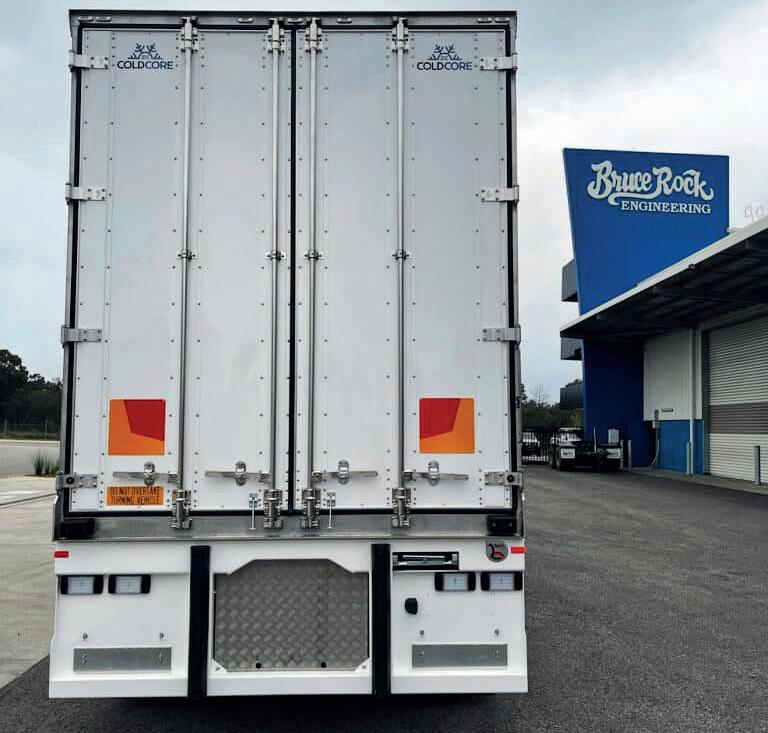




FOR nearly 100 years, Penrite has served the lubricant market in Australia with products such as engine oils, automatic transmission fluids, gear and differential oils, coolants, greases, heavy duty oils, hydraulic and industrial oils, farm and construction products, 2/4 stroke and garden equipment oils, fuel treatments and additives, car care, motorcycle and marine products, veteran vintage and classic products, brake fluids, power steering, suspension fluids, cleaners and equipment.
Part of Penrite’s success is the fact that apart from producing the highest quality, world class products, it remains Australian owned and operated. Whilst many other companies and industries have chosen to move manufacturing overseas, Penrite Oil has continued to invest in local manufacturing and production, employing Australians to produce their products right here in Australia. And it has been doing this since 1926.
The Penrite Convoy range of heavy duty engine and transmission oils are no exception
to quality and performance of the Penrite range of products. The range consists of heavy duty engine oils, transmission fluids, coolants and additives
blended here in Australia for our tough and trying conditions. Penrite Convoy engine and transmission oils are developed for both on and off

highway use to maintain fleet profitability by reducing wear, improving fuel efficiency, lowering maintenance costs and reducing downtime for

repairs. They provide protection against oxidative breakdown, acid corrosion, soot control prevention and the build-up of harmful deposits.
The Penrite Convoy range covers heavy duty vehicles from new to old with the latest industry specification API and ACEA grades through to older mono grade oils for older classic two stroke diesel engines. Penrite can supply products from 1 to 1000 litre pods as well as bulk fills depending on customer preference and requirements.
Penrite’s modern heavy duty engine oils also come with selected OEM and industry approvals for quality assurance, performance and peace of mind. This combined with Penrite’s legendary in field service, reliability, and customer service, is one reason why Penrite has been around for nearly a century and continues to be the go-to product for Australian businesses. Penrite also goes one step further by providing a technical support team to assist you with your inquiries, be it what products to use, product information, equivalents, SDS’s, substitutes, etc.
The Penrite technical support team is located right here in Australia and are available from 8.00am until 5.30pm AEST. They also have a chat line available should you wish to communicate this way with the technical team.
Penrite Rego Check is also available to find the correct vehicle. This can be accessed via the Penrite web page or by the Penrite mobile apps, available for free download for both iPhone and Android platforms.
The Penrite website and apps also have Penrite’s ‘Where to buy’ service for products and ‘Find a mechanic’ for services and mechanical repairs. By choosing Penrite Convoy lubricants, you are also supporting Australians and investing back into Australian manufacturing and production that benefits the next generation of Australians. To find out more about the Convoy range, visit penriteoil.com.au/applica tions/farm-tractor-machin ery/engine-oils. To find out more about Penrite and our Australian Made products visit penriteoil.com.au.


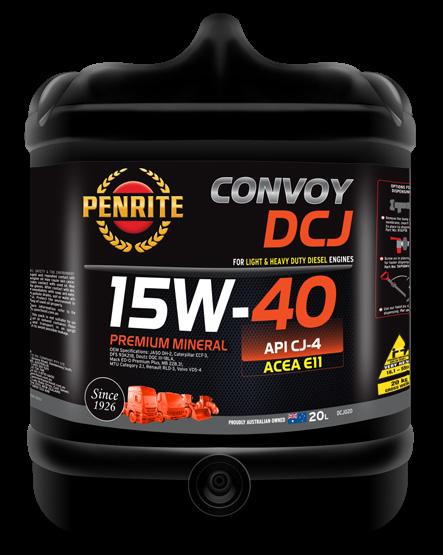
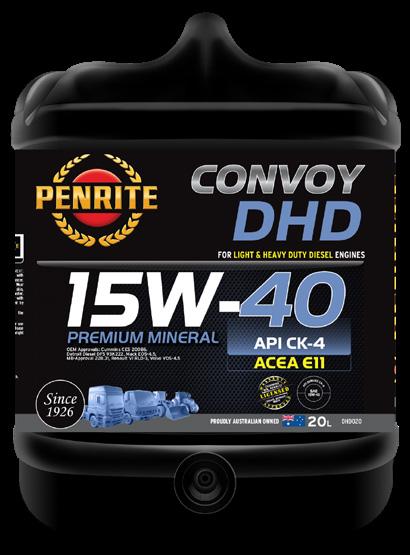
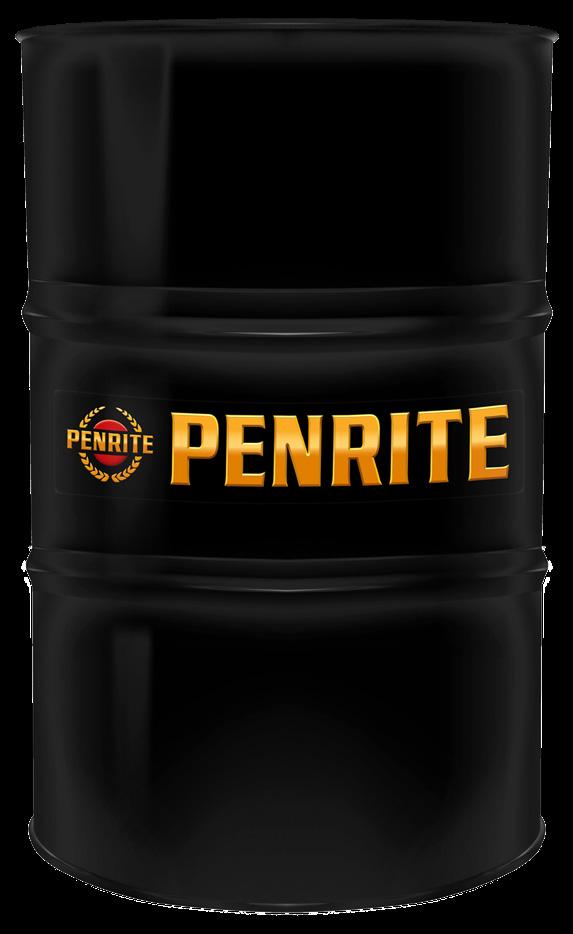


A comfortable truck cabin can make all the difference in ensuring drivers can rest and recover well during their rest breaks, ready to tackle the next leg of the journey.
A driver who is well rested is safer and more alert while out on the highways.
By using a parking cooler in your truck cabin, you can regulate the temperature and humidity during your rest and sleep stops.
A parking cooler can decrease operating costs by not running the engine unnecessarily, which minimises wear
and harmful emissions and in turn saves on fuel costs.
Webasto has been providing comfort solutions for the bus and truck market since 1965.
Its high quality range of products are a popular choice for the Australian truck mar-
BACK in 2001, former long distance truck driver Peter Donegan came up with a unique concept while sweltering in the truck cabin one balmy summer night – the Transcool portable cooler.
As he explained, “At the time I was doing the Melbourne to Brisbane express run. I was finding it impossible to stay cool while I was sleeping in the truck.
“On that particular night, it was especially hot, so I started drawing up some sketches and plans for a personal cooler – and it just went from there. Now we’re selling these personal coolers worldwide.”
Peter comes from a family of truckies and followed in the footsteps of his father and uncles. From driving trucks, he went on to manage the family’s transport business, while at the same time building up a new business of his own.
“Once I had the idea, I needed to get people to make the parts and then it went from there. It started as a hobby and then became a full time job within about five years.”
Based in Kyneton in Central Victoria, Peter started manufacturing the Transcool product from his garage, before eventually moving into a dedicated factory in the town.
Transcool became a convenient and low cost option for trucks without air conditioning or parking coolers. “You can use them while you sleep but you can also use them to help keep you cool while you’re driving too,” added Peter.
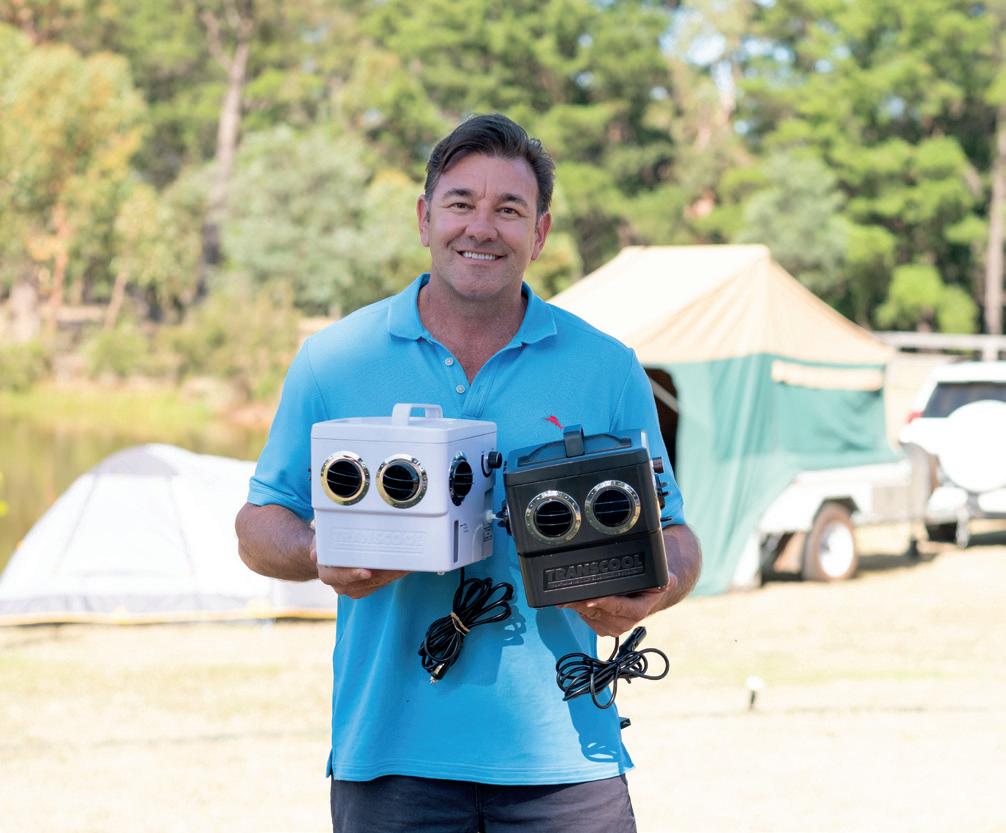
Transcool is a lightweight, portable and versatile cooler, which Peter describes as a “jack of all trades unit”. It can be used while stationary or on the go. Along with being a great option for inside the truck, it’s become a popular choice for camping and leisure – in four wheel drives, caravans, motorhome, tents and boats too.
Transcool is a compact and lightweight evaporative unit that you simply fill with water or ice and plug into your cigarette lighter socket, or your power point at home.
As it’s dual voltage, it can be plugged into both a 12 volt or 24 volt vehicle, as well as 240v electricity.
It has an extremely low current draw ranging from 0.7 when set on low for while
ket and a perfect fit for the summer heat.
Webasto has a range of parking coolers on offer, which are suitable for most applications.
The ever-popular Fresco 3000 is a DC-powered split system air-conditioning unit, available in 12 or 24-volt versions.
With the Fresco 3000 model, a condenser is mounted on the external rear wall of the cabin and an evaporator is installed on the interior cabin wall, allowing maximum flexibility in positioning the separate components.
It also boasts a lightweight, low-profile design, making it
suitable for most applications without compromising fuel load or chassis space.
Completing Webasto’s range of truck cooling products is the Cool Top RTE 16 rooftop air conditioning system.
This powerful 1.6Kw 24volt electric parking cooler is an effective and lightweight cooling solution, available with a wide choice of mounting kits to suit specific truck models. This enables easy installation via the vehicle’s roof hatch.
The Cool Top RTE 16 system is controlled using a digital display panel and/or a handy remote control. It offers
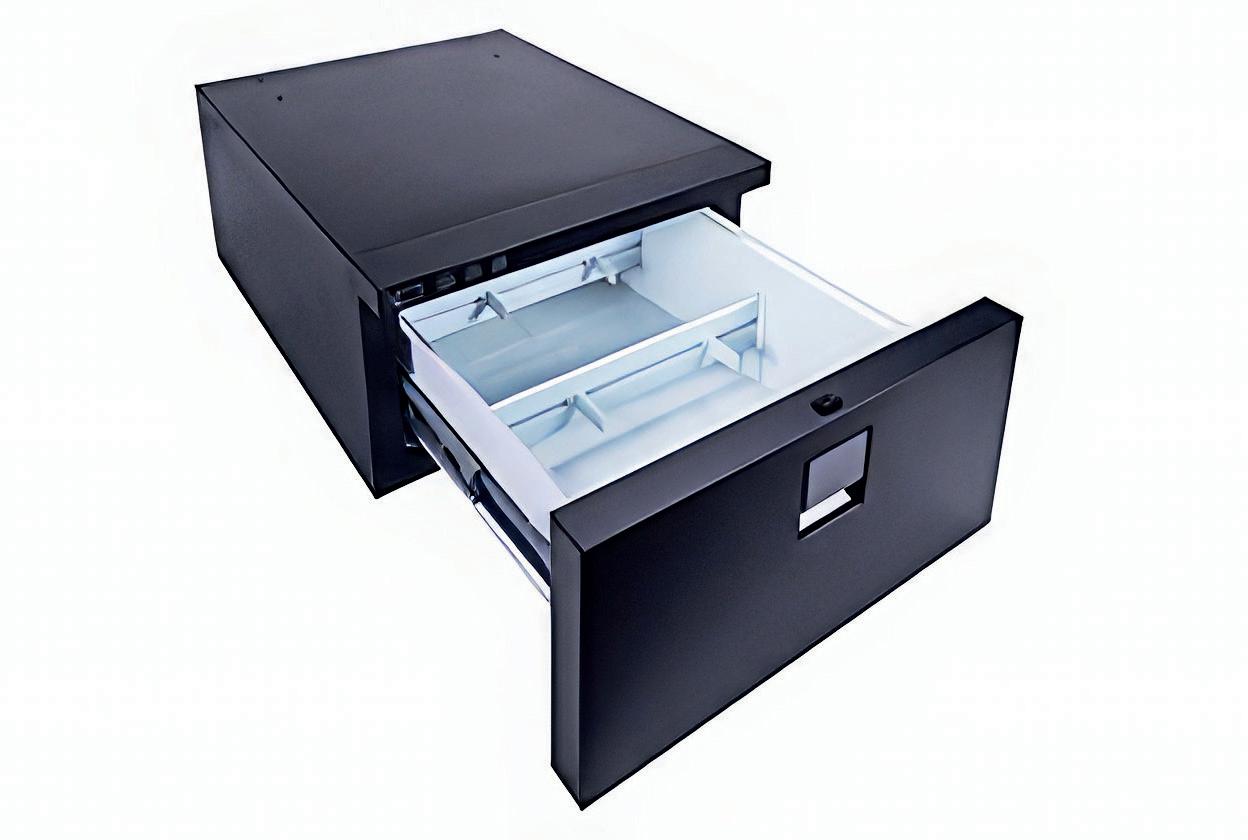

automatic temperature control and individual temperature and fan speed adjustments. The unit also provides an adjustable low battery voltage cut-off to ensure that the engine will always start.
Completing Webasto’s range of cooling products is its isotherm compressor fridges for trucks. These range in size and style from a 16L and 30L drawer fridge/freezer up to a 49L upright refrigerator – helping keep your food and drinks as fresh as possible while you’re out on the road.
Webasto products are available Australia-wide through their authorised truck sales and service dealer network, and all Webasto products are covered by a two-year warranty. For more details, please visit webasto.com or call 1800 244 494.

you’re sleeping, through to a maximum of 1.7 amps. For added peace of mind, Transcool also features a low voltage cut-out.
Over the last 20+ years, Peter has continued to grow and build on his product, with Transcool now shipped throughout the United States of America, Europe and Asia.
“Although the Transcool is not a full refrigerated air conditioning unit that can cool down an entire area, it is an affordable portable solution that can be taken and used anywhere you need a cool fresh breeze blowing on you,” added Peter.
For more information about Transcool, please visit the website at transcool.info or call 0418 510 862.




FOR Natrad, 2024 is a milestone anniversary, marking 40 years of supporting Australia’s motorists, transport operators and trade customers with quality cooling solutions and repair parts.
Back in 1984, Bob Hawke was prime minister, the median house price in Melbourne was $65,000 and Ford’s XE Falcon was the top-selling car in Australia. A lot has changed since then.
Something that hasn’t changed though, is Natrad’s commitment to providing quality cooling solutions, repair parts and services that help keep vehicles and equipment running right across the country.
Solving cooling issues has always been a key strength of Natrad workshops.
The ‘N’ in the Natrad brand itself represents heat entering (red arrow) and cool leaving (blue arrow) after passing through a heat exchanger.
The Natrad Auto Cooling Service Centre franchise group was created by Natra, which was an original equipment radiator manufacturer
and supplier to General Motors Holden and Chrysler back in the 1950’s. Later in 2006, the Natra Group of companies was acquired by Adrad (also an Australian radiator manufacturer).
With this history comes a depth of knowledge and understanding about heat exchangers, which means Natrad has a wealth of experience with radiator inspections, repairs, maintenance, re-coring and replacement services.
Natrad workshops are unique, with the group being founded in automotive parts manufacturing in Australia for both original equipment (Natra) and aftermarket (Adrad).
Natrad workshops quickly developed a reputation for superior radiator repair work and high-quality cooling products and led the industry with an extended warranty on passenger vehicle radiators.
This has continued with Natrad’s three-year nationwide warranty being fully supported by their workshops all across the country.
With around 50 workshops nationwide, Natrad has become a market leader and specialist in the repair and maintenance of engine cooling and air conditioning systems for passenger and heavy vehicles. Their product range has significantly expanded from radiators to include many kinds of engine cooling parts such as oil coolers, intercoolers, and EGR coolers. To restore cabin cooling, a variety of air conditioning products are available including compressors, condensers, evaporators, TX valves and hoses.
Need a service or repairs?
Natrad offers brake parts, filters, spark plugs, shock absorbers and much more to keep vehicles well maintained.
Natrad technicians are familiar with diagnosing, maintaining, and repairing cooling systems. Having access to Natrad’s wide range of quality products and parts makes them fast and efficient at providing you with practical cooling solutions. They can advise and quote on a variety of options to achieve pur-

pose-built cooling solutions for specialist applications including passenger vehicles, on-highway, off-road, racing, high performance, agriculture, earthmoving, rail, marine, mining and power generation.
The evolution in design of vehicles and equipment includes the materials used in
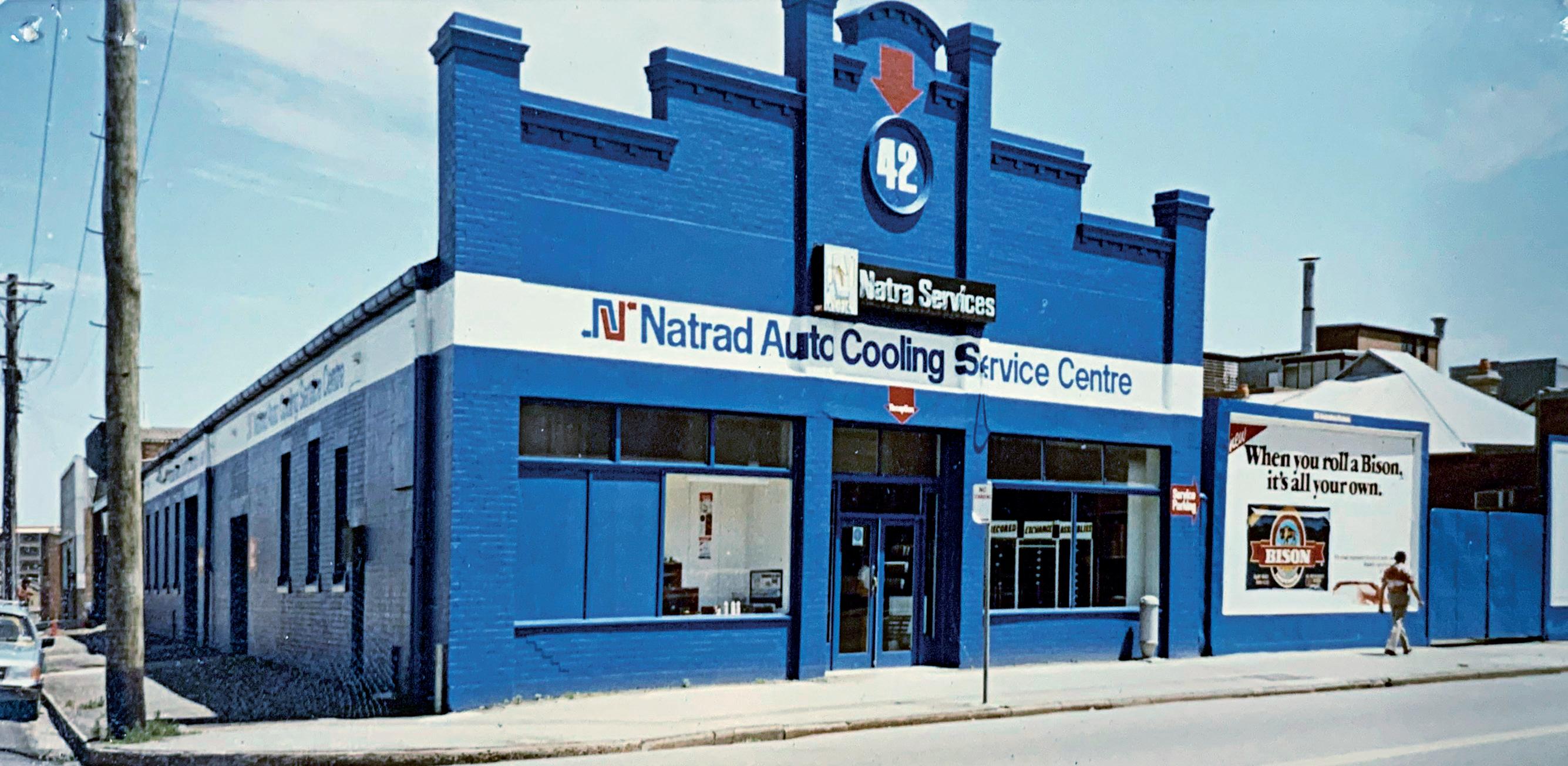
parts construction. Natrad provide radiators made from copper and brass materials to aluminium and plastic. Sometimes modern materials such as plastic and aluminium can lack the strength and durability of older designs. Natrad can provide copper-brass radiators to replace plastic-aluminium ones, which have been particularly favoured by 4x4 enthusiasts for their ease of repair if damaged and the ability to withstand corrosive environments.
Within the Natrad workshop group there are some with specific specialist skills. Natrad Heavy Duty Cooling (HDC) workshops have the specialist know-how and equipment to repair cooling products for large trucks and heavy vehicles. They have a wealth of knowledge about the best cooling solutions for hard working vehicles and tough operating environments. These facilities are fitted with cranes and large test tanks needed to rebuild such large cooling components.
During October and November, a special 40-year



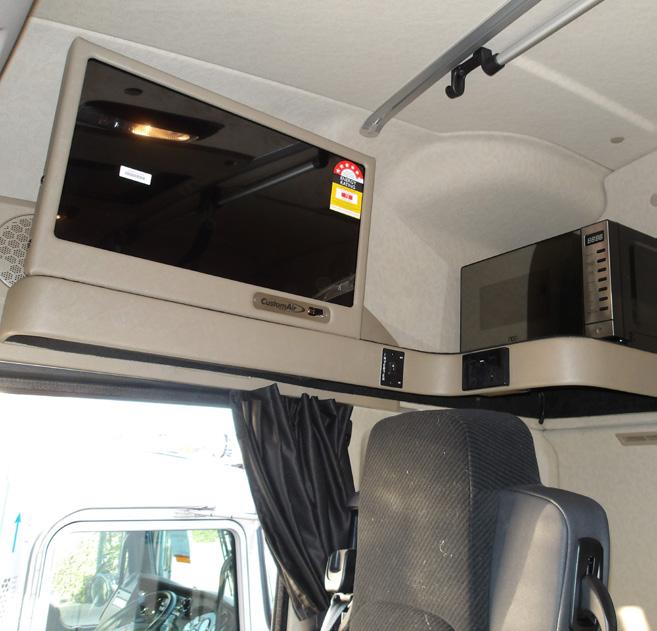
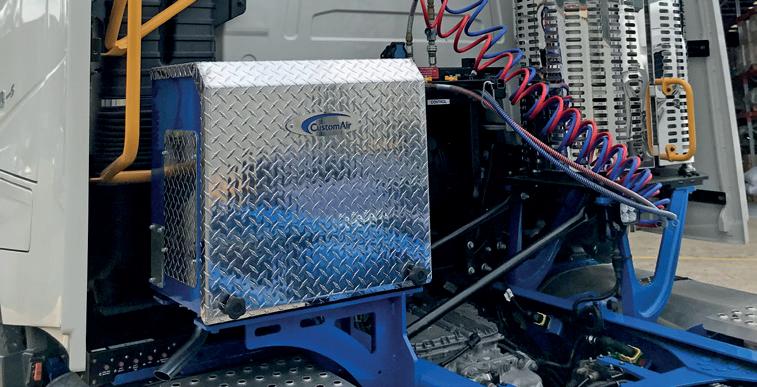
anniversary bonus offer is available to Big Rigs readers. When re-coring your truck radiator with an Australian made Adrad bolt-on radiator core or air radiator core, you’ll be able to claim a BONUS Samsung Galaxy Tab A9+ WiFi 64GB tablet. These cores feature welded header construction for extra strength and can be optioned with Ultra-T high density tube design for high performance cooling.
Scan the special QR code, featured below on the next page, to enter your claim. In 2024 and beyond, Natrad will continue to grow their parts range, supporting vehicle owners, operators and repairers with specialist knowledge and quality products.
Regardless of your machine’s type or size, when you “Nip into Natrad”, you will be rewarded with access to friendly, knowledgeable advice and quality products that are backed with national warranty support.
Visit natrad.com.au to find your nearest workshop or call 131 723.
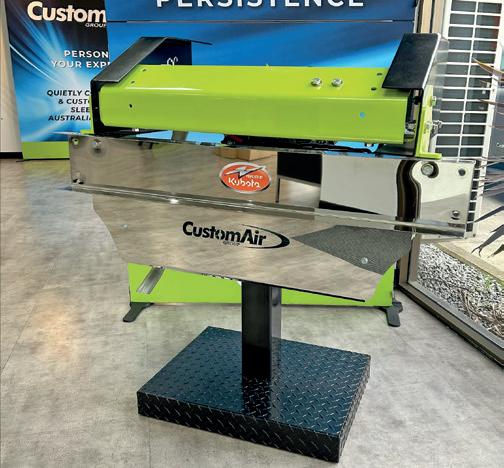



Save thousands when you recore your truck with an Australian-made Adrad Bolt-On Radiator Core & get a BONUS SAMSUNG TABLET!
OE A ir Radiators cores will also qualify.


RECORE & SAVE MORE
• Existing steel work refurbished
• New Nuts, Bolts & Gaskets
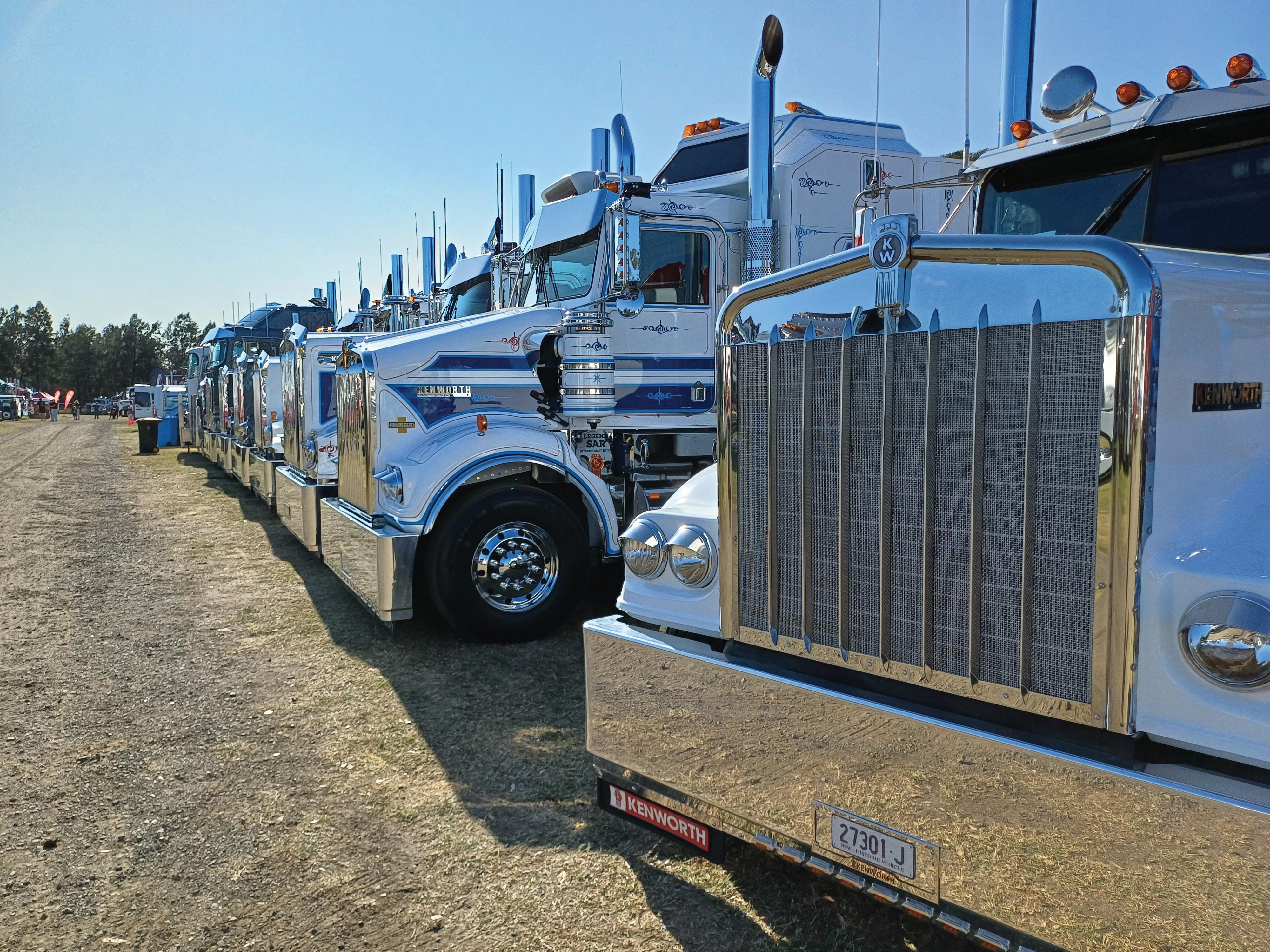

• New Radiator core
Radiator Replacement
Direct-fit Options for All Makes

Natrad, Australia’s largest specialist radiator repairer workshop group offers recores to optimise engine cooling in trucks & heavy vehicles. Choose from Direct-fit OE Replacement & High Performance [Ultra T] options both with welded header plates.
SCAN QR CODE TO REGISTER FOR YOUR BONUS
High Performance
Extra Tubes & Fin Deliver Increased Cooling Capacity with Welded Headers
OE Replacement
Strong Construction with Welded Headers-Adrad MAF & Air Rads MLF
COLD water pressure cleaners are great to blast off mud to expose the machine components for inspection, but using steam to clean assists technicians to identify oil or hydraulic leaks faster.
One Australian company has designed a range of powerful hot wash and steam cleaners specifically for the Australian transport and heavy earthmoving industries.

“We designed these machines to suit ‘time poor’ truck operators who want to minimise time spent on maintenance and cleaning gear,” said Aussie Pumps’ chief engineer, John Hales.
“Using a combination of pressure and steam makes pre-service cleaning efficient and effective. Steam melts away any oil or grease, enabling service technicians to identify any leaking seals fast!”
The Aussie Sizzler is a basic, great value hot wash machine that is easy to use and simple to service. It is a single phase 240v machine suitable for professional cleaning with capabilities up to 1800 psi and 80°C steam. Adding a turbo for tough applications increases the effective working pressures to 3100 psi.
“It’s a basic machine to use but has all the safety features you’d expect in an Aussie Pumps hot wash including micro leak detection, delayed Total Stop and intelligent auto switch off,” said Hales.
Built to last
The Sizzler, like all Aussie hot wash and steamer machines, has a stainless steel cover. It also features a robust steel chassis with built in bumper, four big wheels for easy mobility and the integrated dashboard is conveniently located for easy control. These machines have been a huge hit with truck operators.
“Users told us they needed a full day’s operation from the fuel tank. An 18-litre fuel tank was designed into the machine to hold the diesel fuel that powers the burner,” said Hales.
Aussie’s Australian conceived and designed range also includes steam cleaners that go up to 4000 psi with 15 lpm flow and temperatures to 130°C. These machines are favoured by high use workshops or wash bays where efficiency is key.
“From our experience, we’ve found that running a

steam cleaner at 90°C has just as much impact on a greasy surface as you would running the machine at 130°C or even hotter. Using the machines this way conserves fuel and extends the life of the unit,” said Hales.
Built in safety
Safety controls built into Aussie steam cleaners make them robust and efficient.
There’s dry running protection that prevents damage to the pump, a Timed Total Stop that automatically shuts down the boiler when the gun is closed and a micro-leak detection warning that alerts the operator to leaks in the hydraulic circuit. For further information from Australian Pump Industries visit the website at aussiepumps.com.au.

TAFE Queensland offers a range of online micro-credentials that can be studied at your own pace at any time, which provide the perfect opportunity to expand your career opportunities during any time off this summer.
As clean energy solutions continue to gain traction in the automotive and transport industries, a TAFE Queensland micro-credential
can deliver basic knowledge to support your transition alongside the industry.
With no pre-requisites and low cost, micro-credentials offer a perfect opportunity to build knowledge in emerging industry areas to assist your career transition or lead into further, accredited study.
TAFE Queensland emerging industries business development manager Shawn
THERE ARE MORE THAN 15 MICROCREDENTIALS TO CHOOSE FROM IN THE ELECTRIC VEHICLE AND HYDROGEN SECTORS.”
SHAWN O’SULLIVAN
O’Sullivan said micro-credentials help expand your career opportunities without needing to take time off or make a substantial financial commitment.
“A micro-credential is a great way to get some basic knowledge in an emerging technology within your industry and open career opportunities through studying in your own time,” O’Sullivan said.
“The transport and automotive industries are expe-
riencing fast and largescale changes, and workers who set themselves apart by gaining knowledge in emerging technologies before their colleagues will see increased career transition opportunities.”
He continued, “There are more than 15 micro-credentials to choose from in the electric vehicle and hydrogen
sectors, which would be very useful to transport and automotive industry members.”
Micro-credentials and other TAFE Queensland training development is informed by partnerships with industry leaders such as Mynt Energy Tech to ensure training reflects the latest upcoming industry changes.
These courses take approximately two to three hours to complete and provide basic knowledge in emerging industries and technologies. For more information about micro-credentials or to enquire about this opportunity, visit: course gateway.tafeqld.edu.au or call 1300 308 233 today
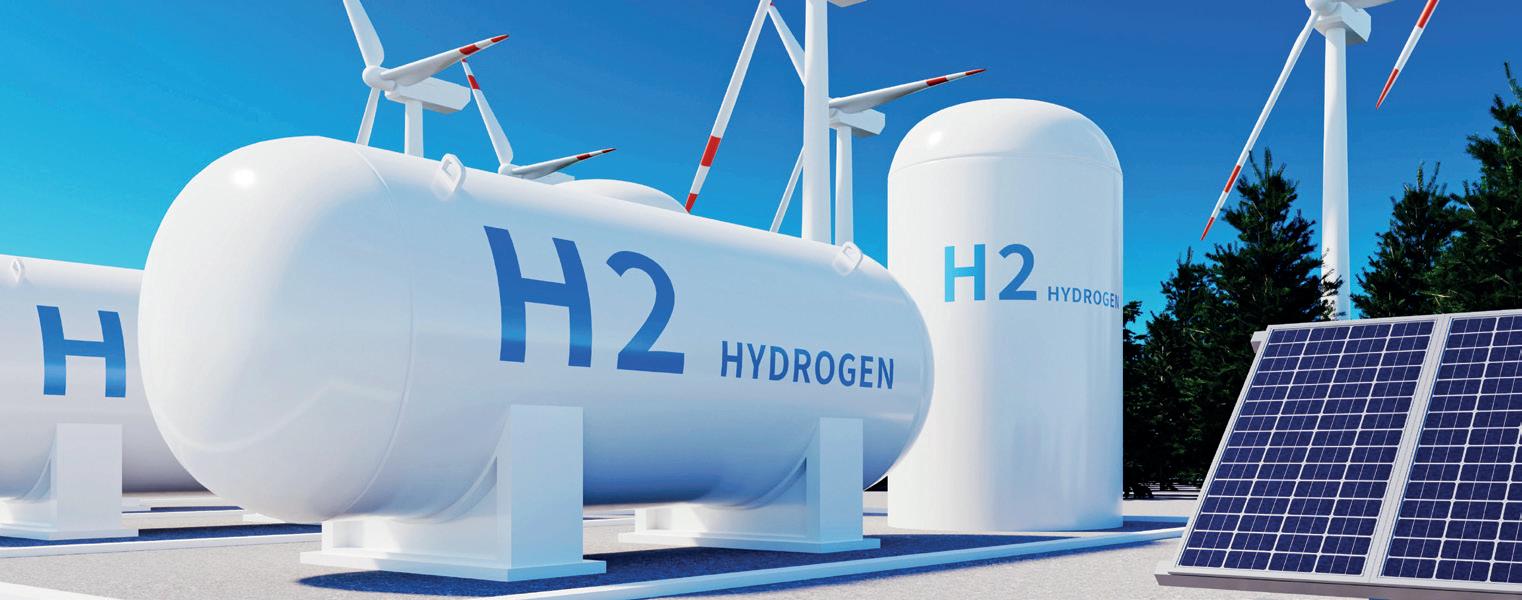
FOLLOWMONT Transport has expanded its Townsville depot, adding a 3000 square metre warehouse and a 1500 square metre all-weather breezeway.
The transport operator says the site, located at Everett Street, Bohle, has undergone significant upgrades this year to accommodate future growth and enhance operational capabilities.
Townsville is a key hub in Followmont’s network, and this extension and land purchase will position the company for long-term opportunities.
Followmont says this expansion will support the business’ continued growth in Queensland and New South Wales by providing dedicated 3PL (Third Party Logistics) storage.
Mark Tobin, managing director and CEO of Followmont, said: “Our investment in Townsville reflects our long-term vision and commitment to providing our customers with unmatched service.
“This expansion coupled with the purchase of 38 Everett St, gives us the capacity we need to meet the demands of our customers while also contributing positively to the local community.”
He continued, “Our property strategy has always been a pillar of our success.
“Working closely with Bootooloo Property has given us the flexibility to adapt and grow our business while maintaining control over our assets.”
The expansion aims to
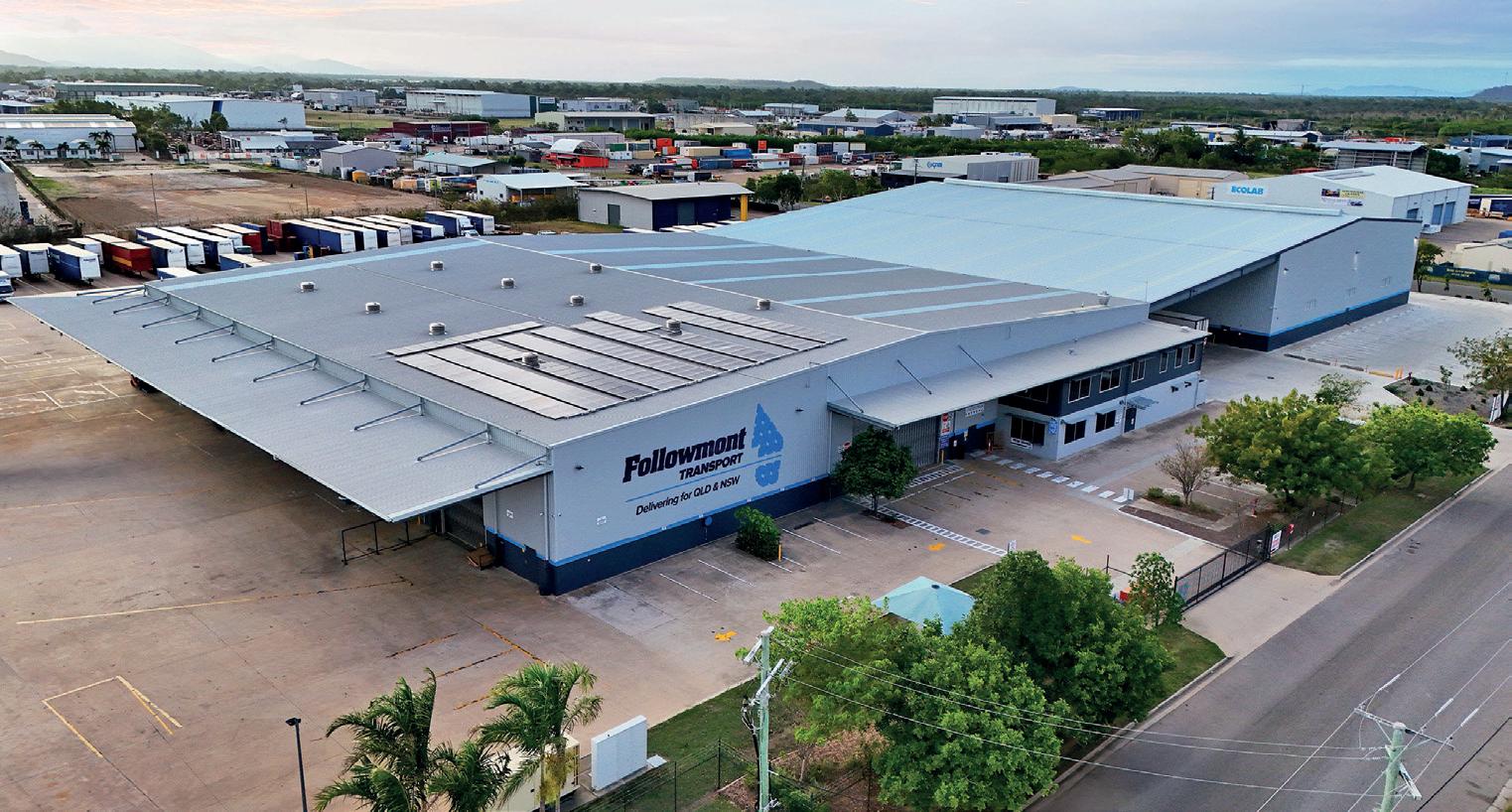
provide increased capacity for Followmont’s 3PL operations along with customer storage needs.
of its own sites.
and
OUR INVESTMENT IN TOWNSVILLE REFLECTS OUR LONG-TERM VISION AND COMMITMENT TO PROVIDING OUR CUSTOMERS WITH UNMATCHED SERVICE.” MARK TOBIN
ings, which led the project, commented: “The completion of this project not only provides the additional space Followmont needs, but also ensures that the local team has the infrastructure required to continue delivering for their customers.”
THE BEAST Driving Light by Lightforce has been recognised at the 2024 Australian Good Design Awards, with the product taking out the award in the Product Design category for exceptional design and innovation.
Held on Friday September 20, at the International Convention Centre (ICC) Sydney, the grand ceremony was attended by over 1000 distinguished guests from design, architecture, engineering and business sectors.
This year’s theme, ‘The Design Effect’, underscored the crucial role design plays in shaping better products, services, spaces, and experiences while driving the transition to a more sustainable, less carbon-intensive future.
The Australian Good Design Awards highlighted how design not only enhances functionality and aesthetics but also contributes significantly to business success and societal advancement.
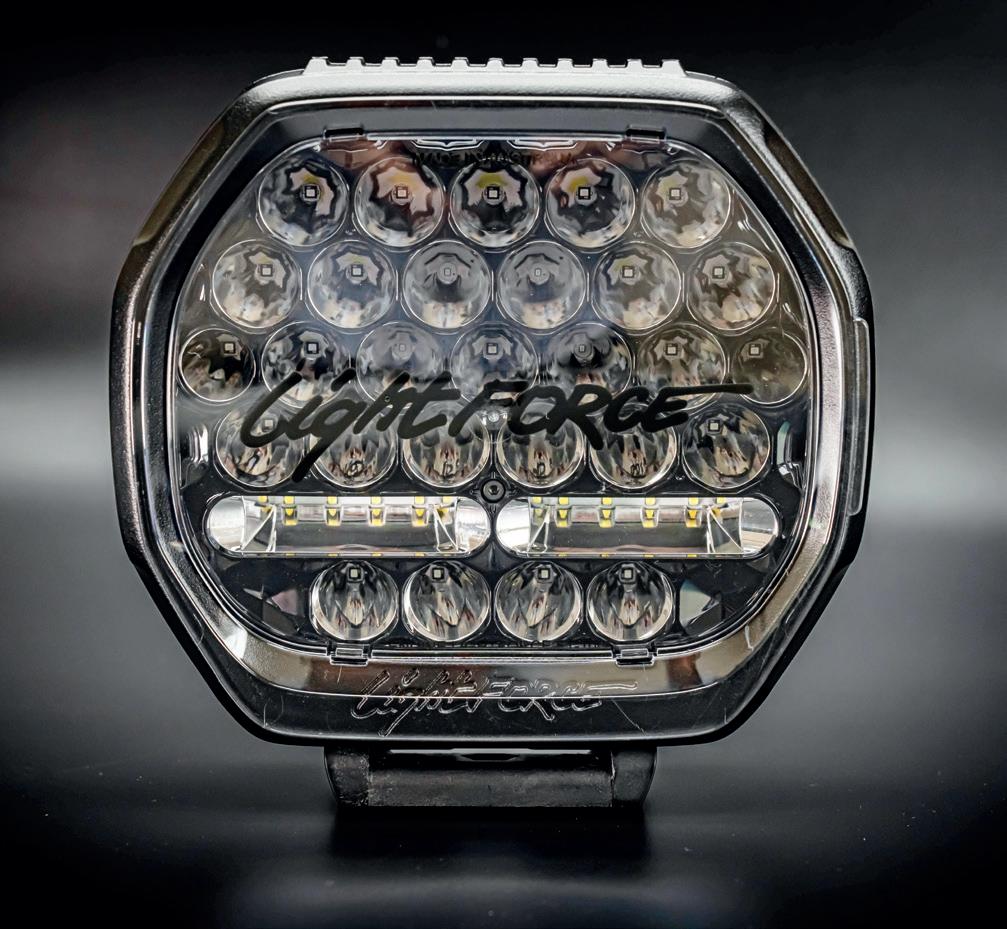
in driving lights, enhancing both usability and aesthetics in a competitive market.”
According to Rachel Wye, managing director of Good Design Australia, “This year’s awards reflect the profound ripple effects that exceptional design can have on people, place and planet. The projects honoured in these awards exemplify how thoughtful design can drive meaningful change, not only enhancing user experiences and the way people interact with the world, but also contributing to a more sustainable and more prosperous future.

80 distinguished jurors from around the globe, including designers, engineers, architects, and industry leaders.
In awarding the BEAST Driving Light in the Product Design category, the jury said, “This innovative driving light features unique form and functionality, including threemode operation switchable from inside the vehicle, and a military-inspired design. It breaks away from conventional styles and offers advanced features previously only possible through external modifications.”
“The Australian Good Design Awards are proud to recognise the truly inspirational work that is being done across different design disciplines, sectors and industries in Australia and overseas.”
They continued, “The jury applauds the driving light for its bold design and innovative functionality. Its distinctive appearance and practical features, such as internal mode switching, set a new standard
QUBE has unveiled a new Volvo FH16 adorned with artwork by Wiradjuri and Sydney-based artist Darren Charlwood.
The new truck, which will operate 24 hours a day, replaces a Qube vehicle that has been hauling for Pilbara Minerals since 2018, clocking up over 2 million kilometres.
This colourful Volvo FH16 is part of Qube’s dedicated Pilbara Minerals fleet and has been specifically designed to transport spodumene concentrate from the Pilgangoora Operation to Port Hedland, for storage and shipping.
Qube and Pilbara Minerals have partnered since 2018, with Qube handling the spodumene concentrate product on site, bringing it to port, managing the Pilbara Minerals storage facility and loading its vessels.
Commenting on the Volvo FH16, Pilbara Minerals’ executive general manager operations, Brett McFadgen, said: “The special edition truck was a welcome addition to site and
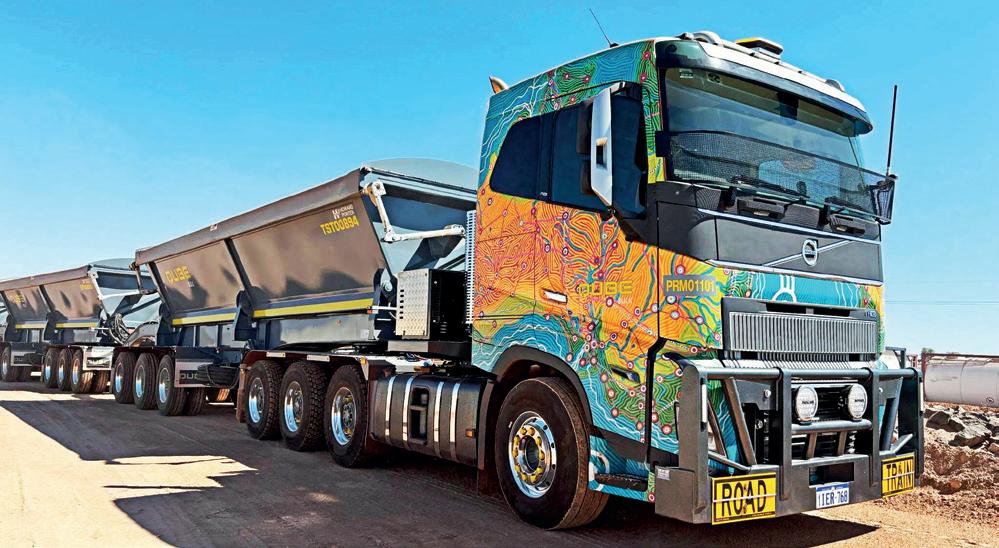
it’s been great to see the artwork on the truck as it’s travelling around our operation.
“It not only brings colour and vibrancy to our site but serves as an important reminder of the land on which we operate and First Nations People’s enduring connecting to Country and culture.
“We share a strong alignment with Qube in our commitment to ensuring we continue to find meaningful ways to engage with Aboriginal and Torres Strait Islander peoples to ensure they benefit from our
operation through business, employment and education opportunities.”
The truck was commissioned as part of Qube’s 2023 Reconciliation Action Plan.
The artist behind the impressive artwork, Darren Charlwood, is from the yabaay wagaan (wedge tail eagle and crow) mob in Wellington, New South Wales. He says the artwork, titled Yindyamarra, depicts the balance and interconnectedness that exists between people, the sea, and Country.
The 2024 Awards highlighted excellence across 12 Design Disciplines, covering over 30 categories.
The awards recognise a diverse range of projects from Australia and abroad, encompassing architectural design, engineering, digital and communication design, and emerging fields such as design strategy, social impact and policy design – a new standalone category introduced in 2024.
This year’s entries were rigorously evaluated by more than
The evaluation process focused on three core criteria: Good Design, Design Innovation, and Design Impact, ensuring that each winner demonstrated outstanding design quality and effectiveness.
The awards showcase the best in design, reaffirming the critical role design plays in shaping a better, more sustainable future for businesses and society alike.
“The Australian Good Design Awards celebrate the transformative power of design in solving complex business, environmental and societal challenges,” Rachel added.
“This year’s winners showcase how design can help drive
innovation, generate growth and embed sustainability principles.”
With its roots dating back to 1958, the Australian Good Design Awards is the country’s most prestigious international accolade for design and innovation. As the Awards mark another year of excellence, they continue to reflect the rich heritage and future potential of Australian and international design. Rachel concluded, “We are honoured to celebrate this year’s winners, whose work not only represents design excellence, but also inspires future designers, architects and innovators. These projects stand as a testament to the power of good design and its ability to make a significant, positive impact in our world.”
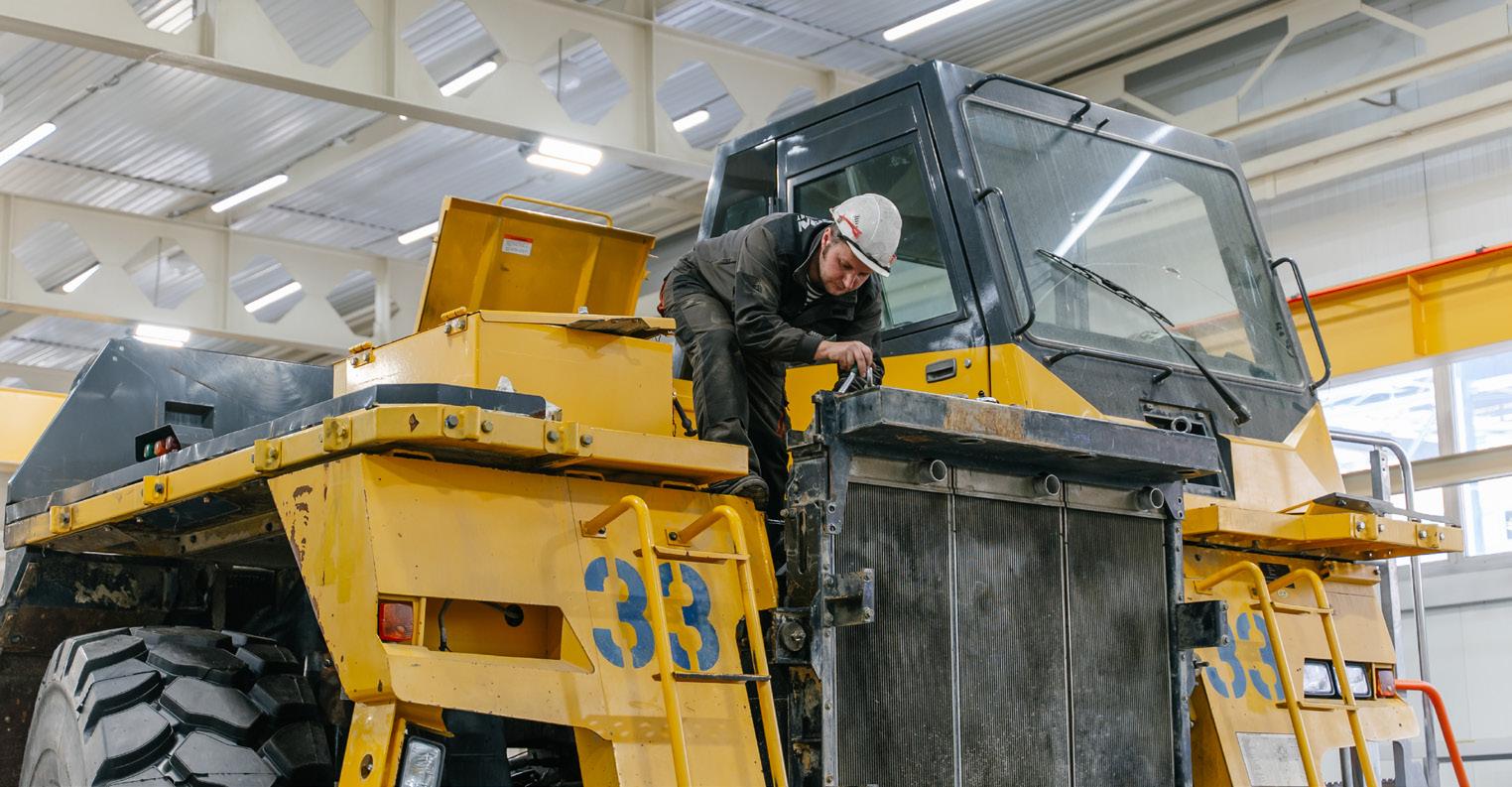
Gain a formal qualification in fixed and mobile plant work at no cost with RTSP funding.

Experienced workers in the diesel fitting or mining mechanical sectors can use Recognition of Prior Learning to achieve a formal, up to date qualification at TAFE Queensland.
Registered Trade Skills Pathways (RTSP) funding allows eligible industry members to gain a Certificate III in Engineering - Fixed and Mobile Plant Mechanic (MEM31419) and trade certificate at no cost.
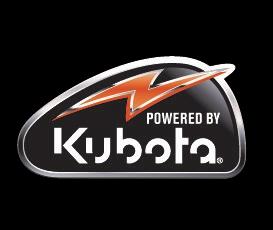

I love grabbing a hot cuppa and checking out the Big Rigs social media pages to see what readers are saying about the articles.
My August piece on the National Roadworthiness Survey certainly stirred up some cranky comments!
The main takeaway was:
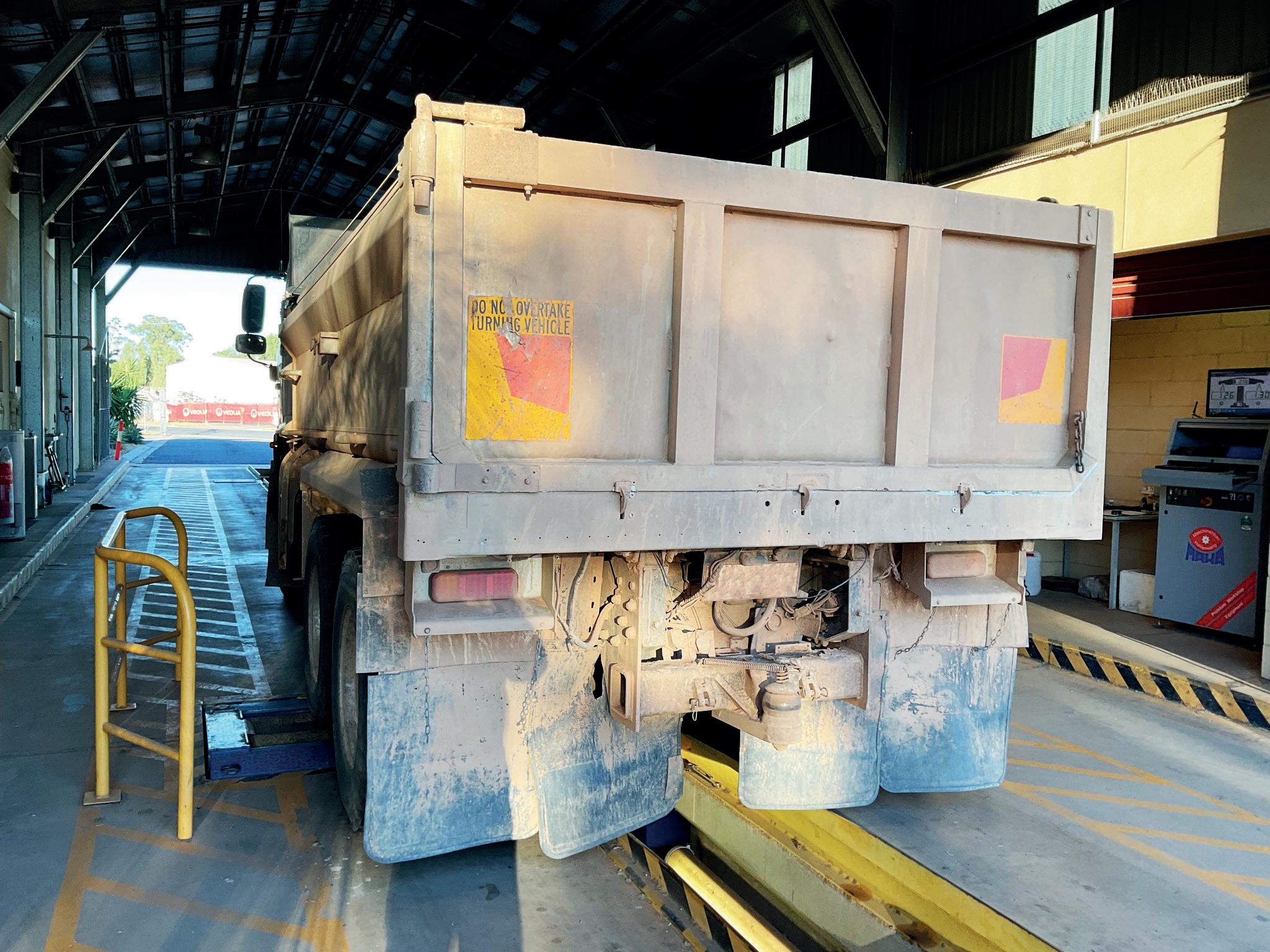
This issue is no longer hiding in the background; it’s front and centre.
Even the Victorian Farmers Federation is now loudly complaining about what truck drivers have been saying for years: roads need to be suitable for trucks.
It must be frustrating for an operator trying to run a safe and reliable transport
business. How can you predict when the next trip will damage your vehicle, costing thousands in repairs, along with the time your truck is off the road and not earning?
And that’s assuming you can find someone willing to endure the rough ride!
While I agree with the frustration, most of the social media comments seem focused on the NHVR.
We all know that the NHVR doesn’t build or man-
age roads, so we should be directing our complaints to local, state, and federal governments, as they’re responsible for the roads.
We can make our voices heard during elections, but isn’t there something the NHVR could do to address these concerns?
Yes, there is! I’m so glad you asked.
Instead of just slapping defects on trucks and shaking heads at their condition, why

not come up with a solution that recognises the efforts operators are making to address these challenges?
Professional truck operators and drivers complete a prestart check at the beginning of each shift or after a long rest. They note what’s right or wrong, and whether something might need fixing soon. The pre-start check is an obvious tool (along with the visual inspection) the NHVR can use to see if an issue is new or
if it’s been around for a while.
Here’s a solution - are you ready?
Let’s use improvement notices. Not defects, not fines, just simple improvement notices.
Improvement notices could be used for issues like:
• A new issue that’s just happened, but the truck is still safe to drive.
• An issue that’s getting worse, but the truck is still safe to drive.
• An issue outside the driver’s ability to inspect, but the truck is still safe to drive.
In all cases, the truck is safe to drive. The improvement notice shouldn’t be used when a truck needs to be taken off the road.
Once the issue is fixed, the notice no longer applies and you can drive the truck again, just like you can with a minor or self-clearing defect notice.
But unlike a minor defect notice, the truck doesn’t need to be inspected by someone else to confirm the repair. And unlike any defect notice, you don’t need to get it cleared.
You just keep a record of the fix - repair notes, invoices, or photos. If the regulator wants to check, they can stop the truck and look.
Someone might ask, “How will anyone know the notice no longer applies?” Simplejust look at the date on the
improvement notice. If the issue is still there after the due date on the notice, then act. But let’s not settle for red tape processes that don’t improve road safety.
This solution acknowledges the professional processes in place without punishing operators for something that could be caused by bad roads.
Now, some of you might think it could be easy to cheat the system, and maybe it could, but surely, it’s a start.
The NHVR already uses improvement notices for offroad issues, so why not for this?
Running a trucking business is hard enough without worrying that your processes won’t be recognised by enforcement officers.
What’s the point of having a process if it’s ignored by those enforcing the laws?
It’s ridiculous to comply with the law on one hand and be told you’re not on the other, especially when you’re doing everything ‘reasonably practicable’ as required by that law.
Come on, NHVR, do better.
What’s the point of winning customer service awards if your customers on the road are suffering due to outdated processes that punish them for things beyond their control?
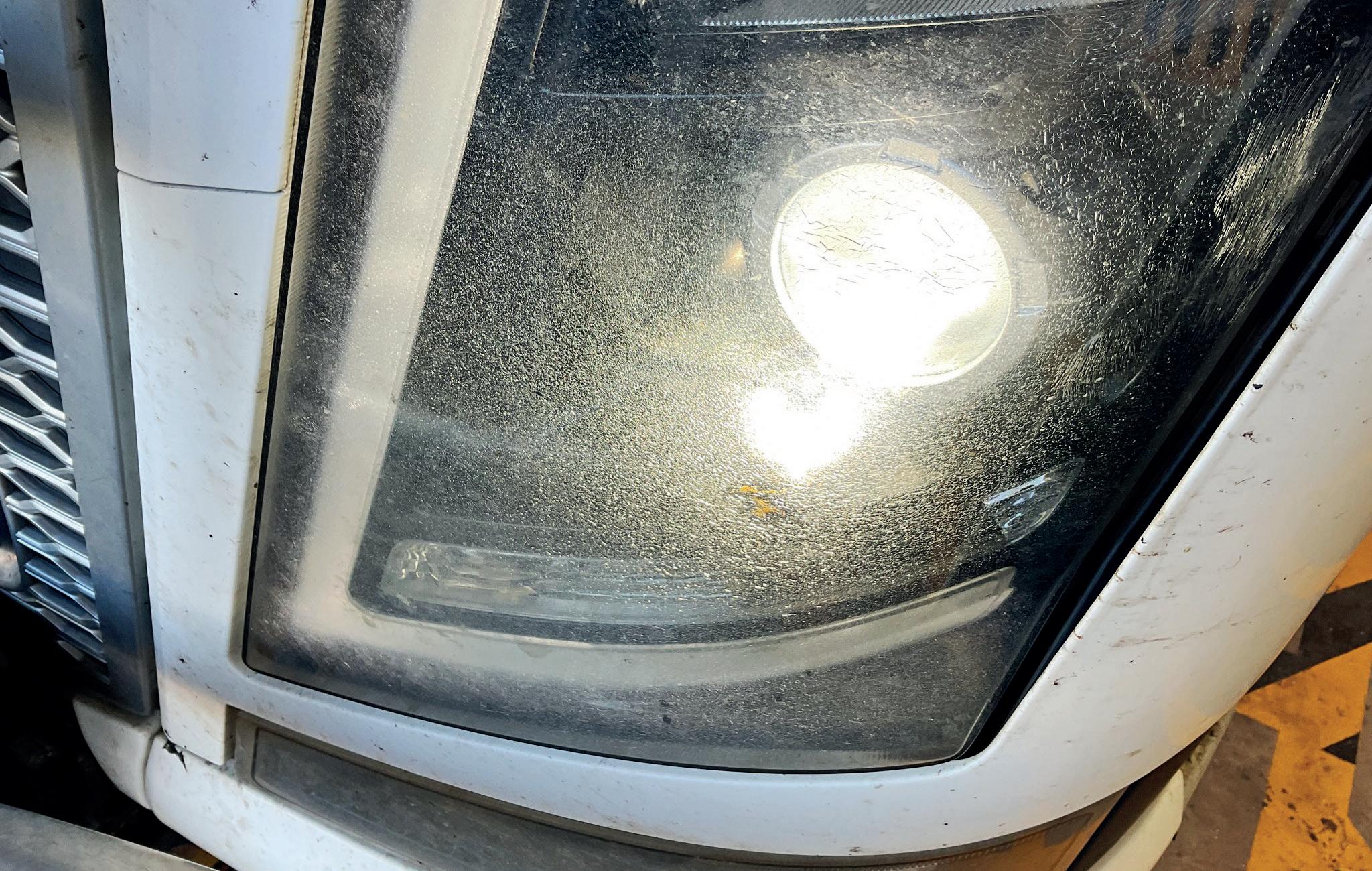

peratives and government mandates, is reshaping how we think about transport, and this change is especially profound in freight and logistics.
As the industry begins its transition from fossil fuels to hybrid and alternative energy sources like hydrogen and battery electric vehicles, it is critical that Australian governments step up to support this change.
The journey toward decarbonisation is not one that can be taken lightly. While the long-term benefits of moving away from fossil fuels are clear—reduced emissions, improved air quality, and the mitigation of climate change—the short-term challenges must not be underestimated.
As CEO of the Victorian Transport Association (VTA), I have the privilege of advocating for one of Australia’s most vital industries—freight and logistics—at a time of transformative change.
The need to decarbonise, driven by environmental im-
For operators in the freight and logistics sector, which underpins the national economy, the shift to alternative fuels represents a complex logistical and financial challenge.
Trucks and heavy vehicles that rely on diesel have long been the backbone of this industry, and moving to hydrogen and battery electric vehicles (BEVs) is no simple task. It requires not just the pur-
chase of new fleets but also the development of an entirely new infrastructure to support these vehicles, such as charging stations and hydrogen refuelling sites.
This is where government intervention becomes crucial. Without adequate financial and policy support from federal and state governments, the transition to alternative fuels will be slower, more expensive, and less effective.
Governments must provide incentives, grants, and subsidies to assist operators in upgrading their fleets and infrastructure. Additionally,
policies that promote research and development into hydrogen and electric technologies will ensure Australia remains at the forefront of innovation in this space.
Furthermore, governments must take a leadership role in setting the regulatory framework that will guide this transition.
The logistics and freight industries operate under stringent regulations concerning vehicle weight, emissions standards, and driver safety.
With new fuel technologies come new challenges in ensuring compliance with

these regulations while maintaining operational efficiency. Policymakers need to be proactive in establishing clear, realistic guidelines that allow the freight industry to decarbonise in a way that is environmentally and economically sustainable.
At the VTA, we have long recognised the importance of leading the conversation on alternative fuels, which is why I am pleased to announce our upcoming Alternative Fuel Summit on Tuesday, November 19 in Melbourne.
Now in its third year, the summit will be a valuable forum for stakeholders across the freight and logistics industry to come together and discuss the commercial realities of decarbonisation.
The summit provides an opportunity to hear from a diverse range of experts— policymakers, regulators, original equipment manufacturers (OEMs), and suppliers—who are directly involved in shaping the future of transport.
We are especially fortunate to have representatives from the Victorian Government and opposition joining us to
discuss the role of public policy in facilitating this transition.
Their insights, alongside contributions from industry leaders, will provide a balanced and informed view of what lies ahead for freight operators as they make the shift to hydrogen and battery electric fuel sources.
The summit will offer an opportunity to explore the latest innovations in alternative fuel technologies, discuss the practical challenges facing operators, and, most importantly, chart a responsible and achievable course toward a zero-carbon future. For further information and to register please visit vta.com.au.
As our industry continues this historic transition, it is vital that state and federal governments recognise the importance of supporting the freight and logistics industry. With their backing, we can ensure that the shift to hydrogen and electric vehicles is not only achievable but also beneficial for the economy, the environment, and the many Australians whose livelihoods depend on this essential industry.


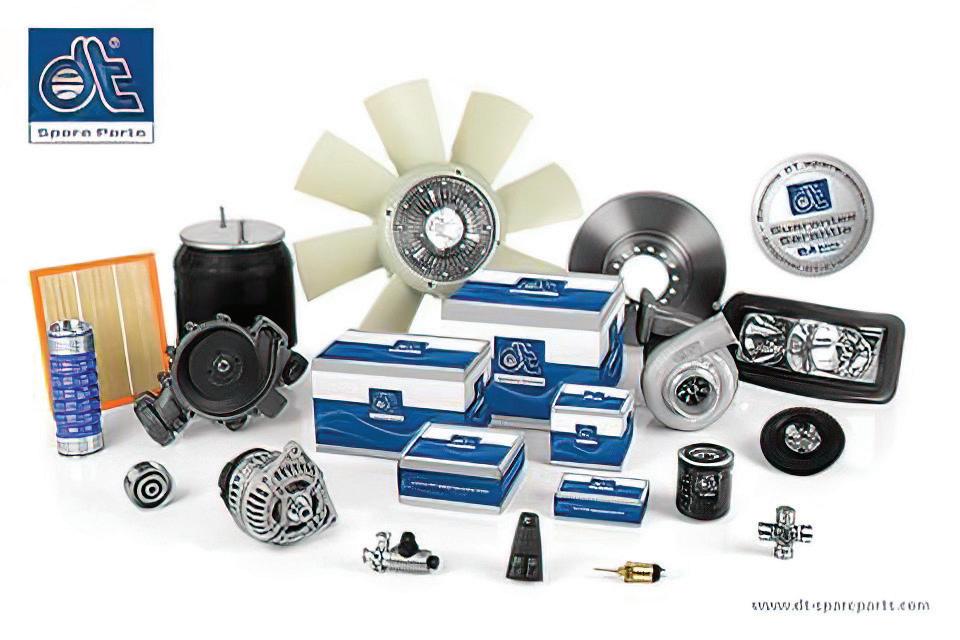

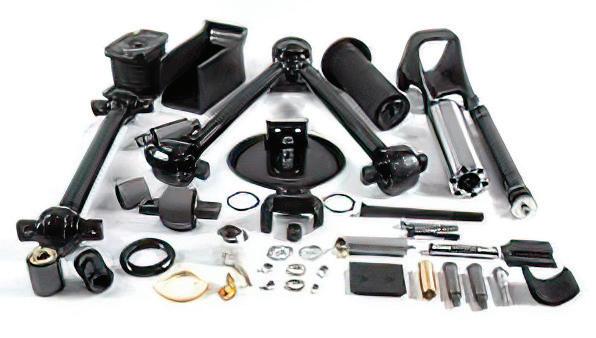

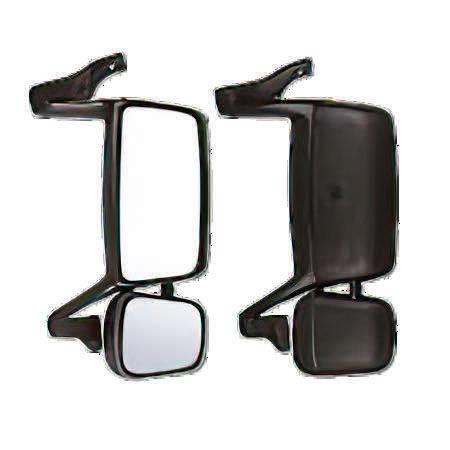





RECENTLY returning from Adelaide to Melbourne and Hobart, we were fortunate to catchup with ‘Jardy’ Jardine from Donald in Victoria when he pulled over for a hot cuppa at Tailem Bend.
Driving an eye-catching 2018 MP 10 685 Mack and towing an A-double set of trailers for Wilken Bulk Haulage out of Warracknabeal at the time, he was on his way into Murray Bridge with a load of wheat.
He would then be heading back home to Warracknabeal, wash the truck, and then knock off.
Jardy told us he has been with Wilkens for 21 years all up as he started an apprenticeship there as a diesel mechanic on leaving school, and apart from a spell with Brunt’s has been driving for them for 15 years now.
“It’s all good,” he told us. “Wilkens are a conventional family-owned business, and
you are not just a number here, they really look after us, and run top gear, maintain it properly and do everything efficiently.
“I guess I could say that I am truly loving it, just now, no regrets about going out on the road for a living, and I would do it all again given the chance.
“All-in-all I am happy and confident that I made the right choice in taking up a career on the road.”
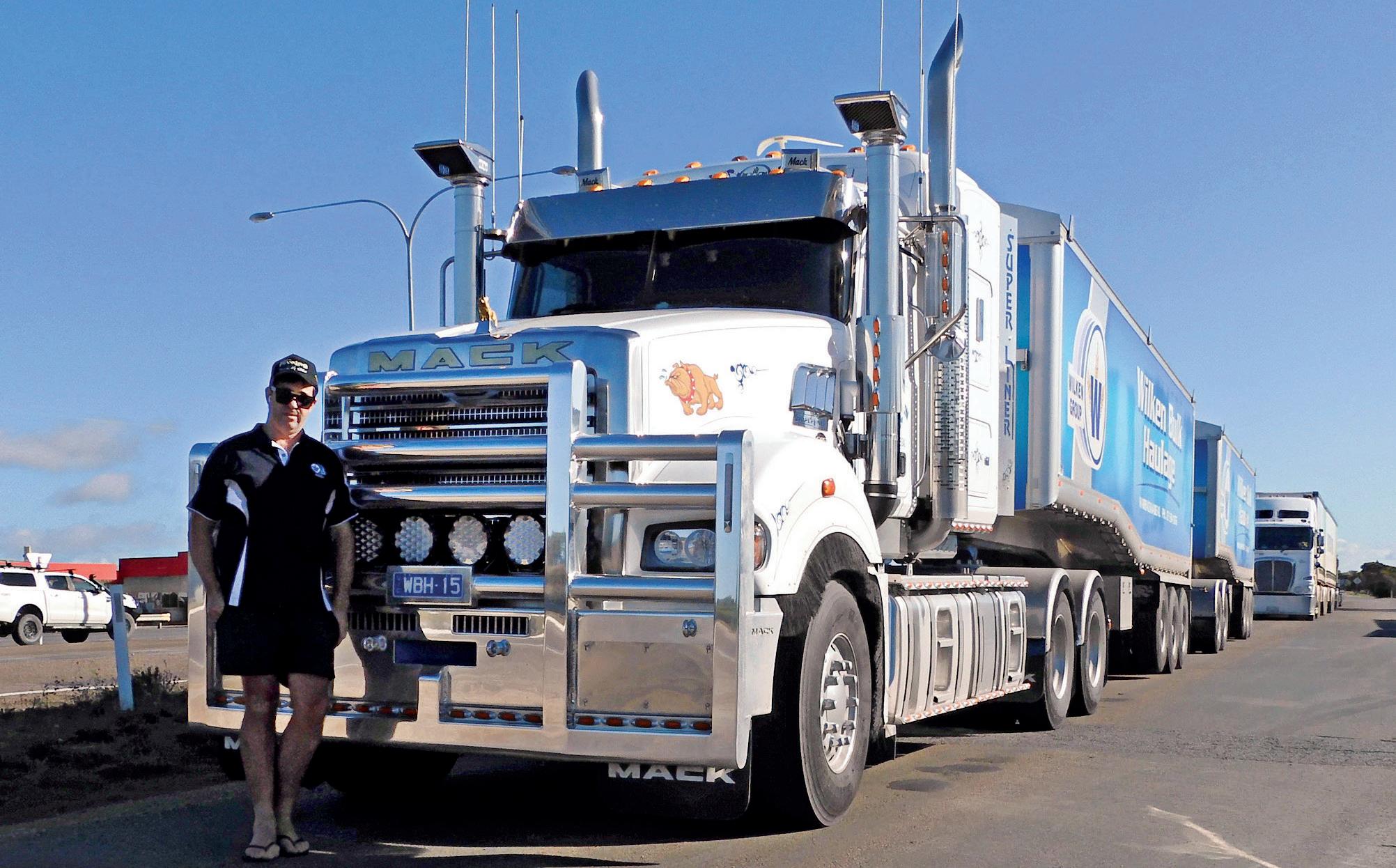

PASSING through Dartmoor the other day we were fortunate to catch up with our elusive old night-running friend, Tommy Buckle.
He was driving his Moreland’s Kenworth T409 with a 600hp Cummins up front, 18-speed and road train-rated, towing a Bx2 fully loaded with plantation timber on his way back to Colac from Mount Gambier.
He was accompanied by Andrew “Dozer” Higgins at the time driving his MJM Logging Kenworth with a Cummins 625 hp and an 18-speed gearbox.
Tommy told us: “We both run from anywhere in the South-East/Mount Gambier back to Colac nightly, that’s around a 950km round trip, and it is a rare occasion to catch us out in the daylight.
“I have been driving for Moreland’s Logging now for over three years and frankly I am still loving it.
“They are a Mount Gambier logging contractor, and an excellent family-run business, operating top and properly maintained gear and equipment, and they look after

their drivers and crew here really well.
“Frankly this is a great place to work, nothing is ever a problem, and this shows because the drivers who work here have all been here from over five years and up to 15 years, and that stands testament to how good they are.”
Tommy says he’s driven for

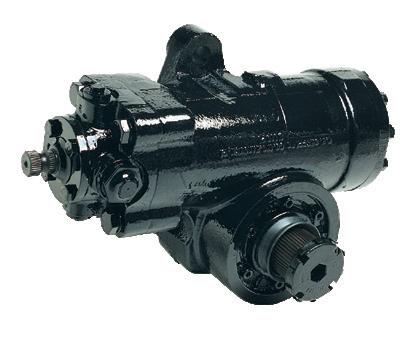
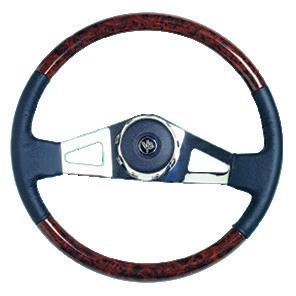
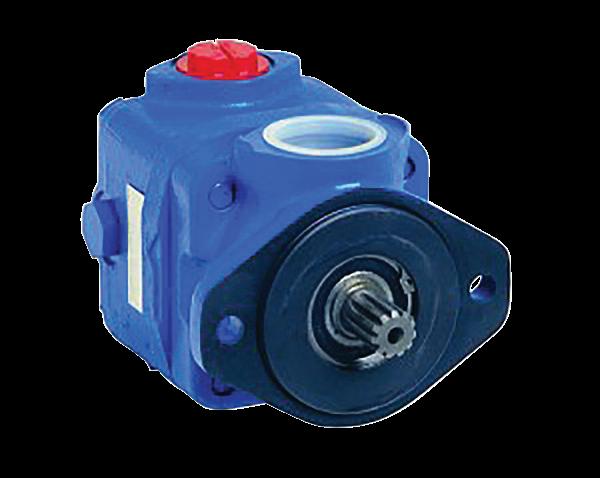

quite a few outfits in his time on the road, but this is easily the best he’s worked for. He added that he really likes working nights and finds the quiet roads less stressful than sharing them in the daytime with mobile homes, caravans, and all the usual suspects! Andrew said he agreed with everything Tommy had said.




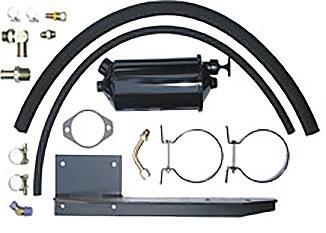




RETURNING to Tasmania after our recent trip to South Australia we dropped in to fuel up at the Little River BP on our way to Geelong.
Here we were fortunate to catch up with Jamie McKerrow from Bacchus Marsh who was on his way to Geelong for a load of fertiliser.
An owner-driver, he was driving his striking 630hp 2663 Mercedes with a B-double of tippers at the time and happily he took a few minutes out.
“I started driving in 2015 when we bought our first truck, a Freightliner CST 120 to cart grain,” he told us.
“I was already driving, and doing contract harvesting at the time, and this started out as a side business, but has now increased to about 50 per cent of our work.”
He bought the current Mercedes in June 2020, and it’s a good comfortable reliable truck and a pleasure to drive.
“Obviously, I must be happy with it as I will be ordering another one in the near future.
“It is an added bonus to sit up here driving and watching

the countryside passing by, and keeping busy at the same time, well as busy as I want to be.”
Jamie says he tries to keep the work/life balance about right, and to make sure there is enough time to support the Hawkes in the AFL as well.
“You do have to be pretty savvy business-wise nowadays as things are undeniably tough.
“The overall running costs are unbelievable, and the overheads keep going up as well.
“In fact, I don’t honestly know how some people are surviving in the current environment, and it’s hard to see anything improving either.”
It was, however, good to see him pull out and continue on his way with a cheerful smile and a wave as he went.


STILL at the Little River BP on our way to catch the ‘Spirit of Tasmania’ at Geelong, we were fortunate to catch up with Craig Lansdown from Kooweerup who had also dropped in for a quick cuppa and a quick break.
He was driving an eye-catching Southern Sons 2021 T-909 ‘Anniversary’ Kenworth with a 600 Cummins up front, and towing a B-double of Lusty trailers on his way from Clyde to Lara to load up with soy meal, and
then return home and knock off for the day.
“I’ve been with Southern Sons for four years now and what a great family outfit they are to work for, in every way,” he said.
“They are an honest family-owned company, specialising in bulk transport services and delivery to the stock feed and grain industries, and we get around quite a bit.
“Look at the gear, and how well maintained everything is.
“They have four sons and three of them are involved in the business, and the whole atmosphere is so good there you could even call it ‘homely’.
Craig has chalked up 34 “good years” out on the road now all up, and still has no regrets.
“I call this my retirement job, and am still loving it, but I mean working for an outfit like this and driving a truck like this; it couldn’t get much better could it?

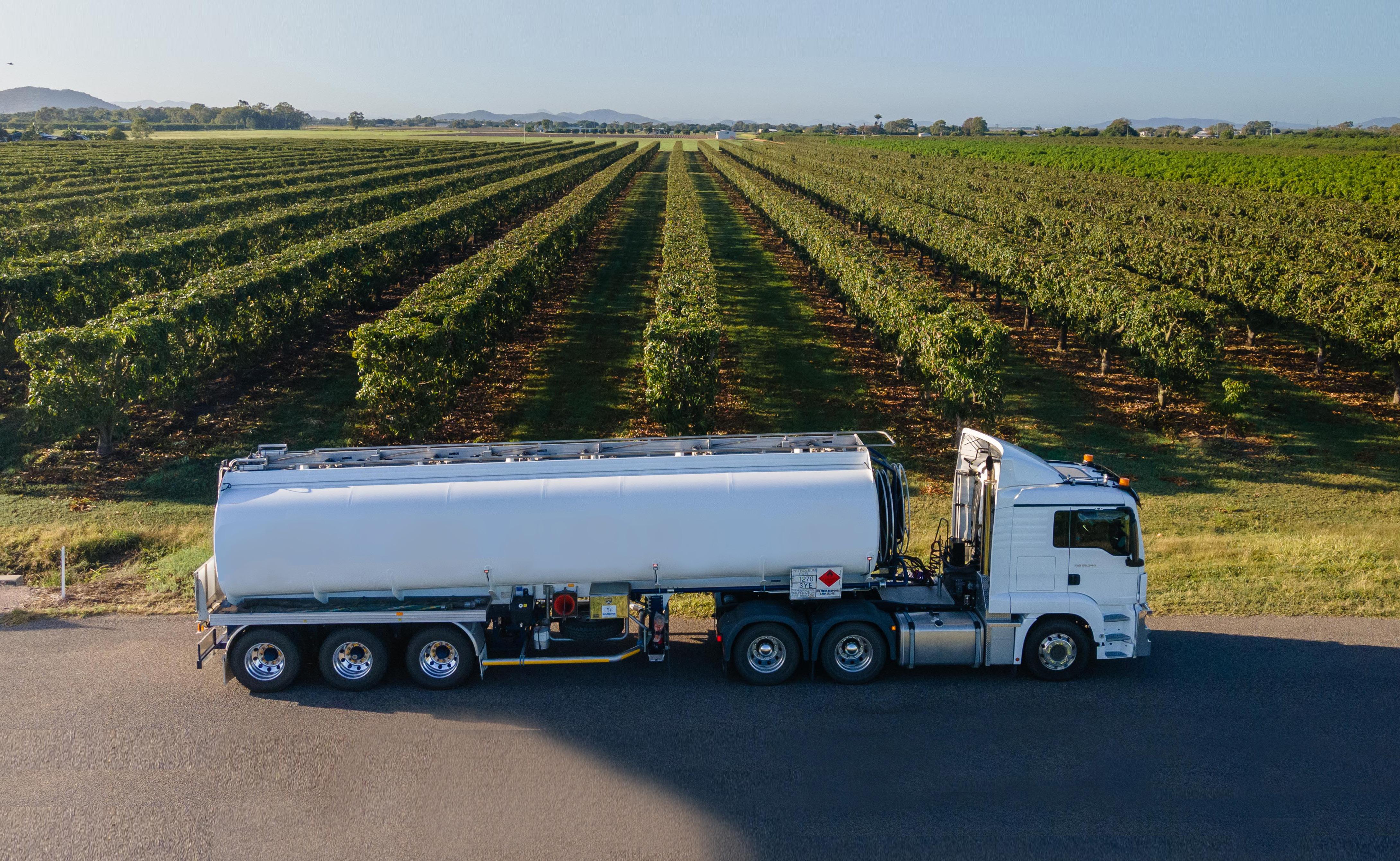
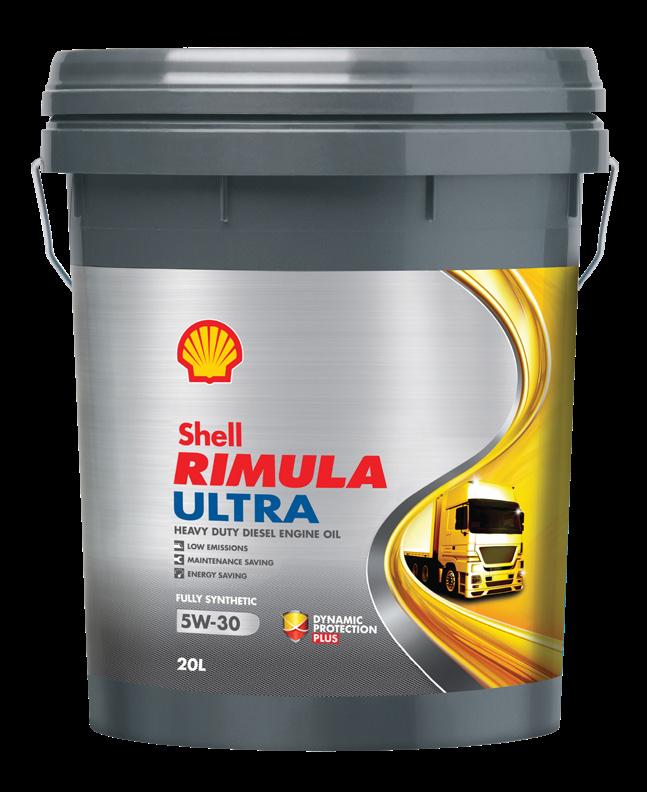





WHILE the focus of dangerous roads in Queensland has been on the Bruce Highway, many drivers tell me the Flinders is also in a terrible state.
The Flinders Highway runs from coastal Townsville to outback Cloncurry, a distance of 800km.
Along the way you pass Charters Towers, Balfes Creek, Homestead, Pentland, Torrens Creek, Prairie, Hughenden, Richmond and Julia Creek before arriving in the Curry.
Just in the past year, I’ve spoken to around 40 drivers who have criticised the condition of the Flinders, along which there are a lot of narrow bridges.
One of the main sections which is particularly bad is the 115km stretch between Hughenden and Richmond.
Drivers describe it as “up and down and rough” especially those in triple road trains.
It is a busy route with lots of heavy vehicles hauling minerals, machinery and livestock.
Veteran Richmond based operator Mick Pattel, aged 72, has been driving the Flinders for five decades and described many parts of it as dangerous.
“The bridges between Charters Towers and Cloncurry are mostly narrow and dangerous for trucks. There is one exception which is a bridge at the entrance to Torrens Creek. It was built decades ago and is wide and good,” Mick said.
Mick said that the stretch between Hughenden and Julia Creek was in bad shape.
“It is rough and the shoulders are sinking.”
Another subject drivers who frequent the route have major concerns about are rest areas, with an emphasis on one at the Campaspe River near Pentland.
There have been many near collisions this year as trucks driving along are confronted by vans as they leave the rest area.
Some people in the road transport industry are calling for the rest area to be relocated to ensure a safer departure.
Past Cloncurry the road continues as the Barkly Highway to the Northern Territory border at Camooweal and beyond.
Quote of the week
A legendary long time small fleet owner came up with this very apt quote when asked about the state of many bad roads around Australia.

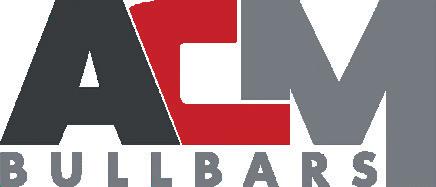
“Truck drivers are required to have their vehicles in roadworthy condition but the Main Roads authorities don’t have the roads in truck worthy condition.”
I am sure many drivers would agree with him.
The family-owned Billabong Roadhouse in WA is a busy and popular stop for truck drivers.
Located between Geraldton and Carnarvon, the parking area across from the roadhouse is mostly packed at night with trucks.
Spy was told about the business by truckies who said they love the facilities, food and friendly service.
So I contacted the roadhouse and spoke to site manager Lee Norwood who said that up to 200 trucks a day call in there.
“We have toilets and a special area for drivers. Most of them carry general freight and we get some from as far away as Perth,” Lee said, which is 770km away.
The favourite food for truckies does vary but Lee nominated three meals which tantalise their taste buds.
“It would be lamb chops, scotch fillet and parmigiana,” he said.
With over 60 years servic-
Located on the Peninsula Development Road between Laura and Musgrave, the Hann River Roadhouse is a welcome stop for truck drivers delivering to some of the most remote areas of Australia.



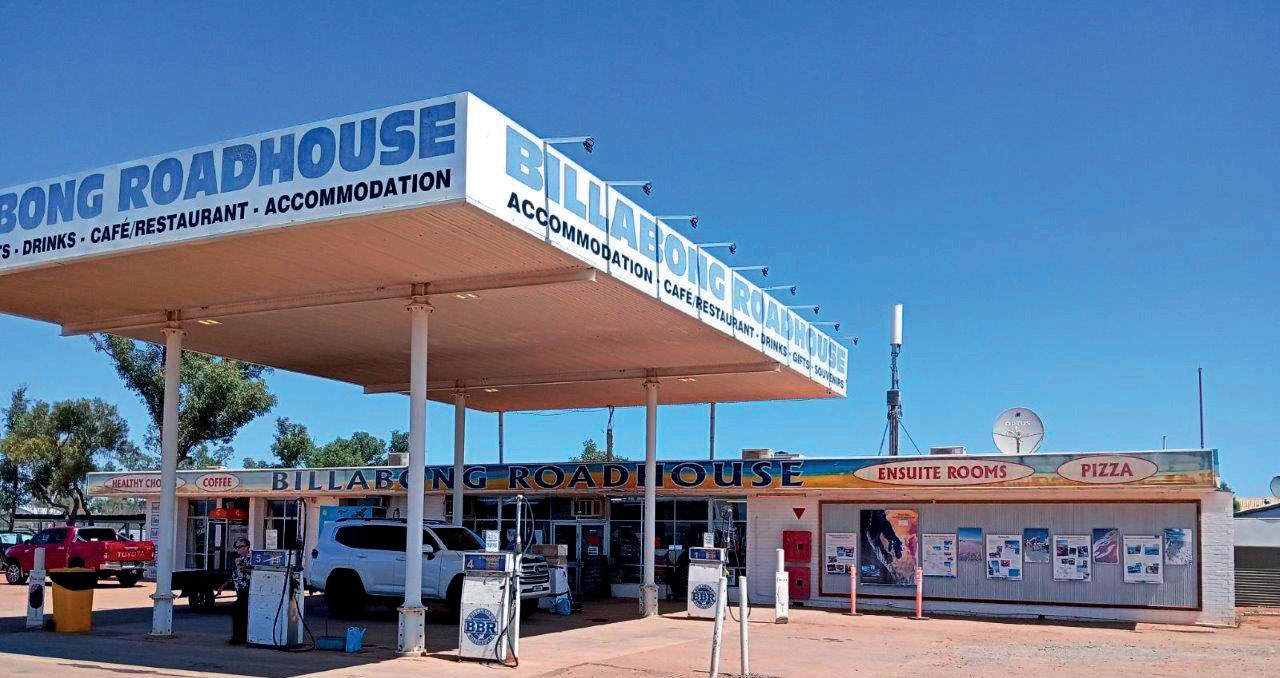


WITH OVER 30 YEARS OF EXPERIENCE SUPPLYING TO THE HEAVY TRUCK AND BUS BULLBAR AND BUMPER BAR INDUSTRIES.
ACM can recommend a bumper or bullbar to suit your specific requirements. With a huge range on offer, we can match a product to your vehicle that will not only perform to the highest level but is backed by quality materials and manufacturing processes in the industry.


ba based veteran small fleet operator Dennis Dent who has appeared on popular television series Outback Truckers.
“Dennis runs three trucks up this way and he and his drivers stop in and have a meal and coffee,” Brendan said.
The roadhouse is owned by Robert Woods and has lots of parking, clean showers and toilets and five staff.
What used to be a mostly dirt road to and from the roadhouse is now at least half bitumen.
The dirt section is often graded, making it much safer to travel on.
As an added bonus, the roadhouse is near the Hann River which abounds with fish, including barramundi.
While the drivers who pull in are often too busy to go fishing, many who are on holidays will camp near the river and patronise the roadhouse.
The Hann River Roadhouse is open from 7am until 8.30pm.
Tassie road breaks up after upgrade
A distraught Tasmanian owner-operator contacted Spy on September 20 to report on a section of the Midlands Highway that had recently been upgraded.
He said there was severe damage to a section, which held up traffic, including many truck drivers.
“I had been returning from Devonport beside the Bass Highway to Hobart and saw the damage which was just


south of the turnoff to Oatlands. It was wide and long and traffic was reduced to one lane travel. It resulted in a big hold up,” he said.
The 190km long Midlands Highway – or Heritage Highway as it is also called – is the main route that runs between the two major Tasmanian cities of Launceston and Hobart.
The driver said that what puzzled him was how it could “break up” after the expensive upgrade.
“I know it has rained here but this has been a band aid solution,” he said.
Fuel price differences
A truckie based at Deniliquin, NSW, told Spy he paid $1.94 a litre for fuel there before leaving with a load for Darwin.
At Alice Springs he paid $1.87 per litre and at Adelaide River he was charged $1.78.
With such a major difference in prices, it can save drivers a hefty amount when they find cheaper fuel.
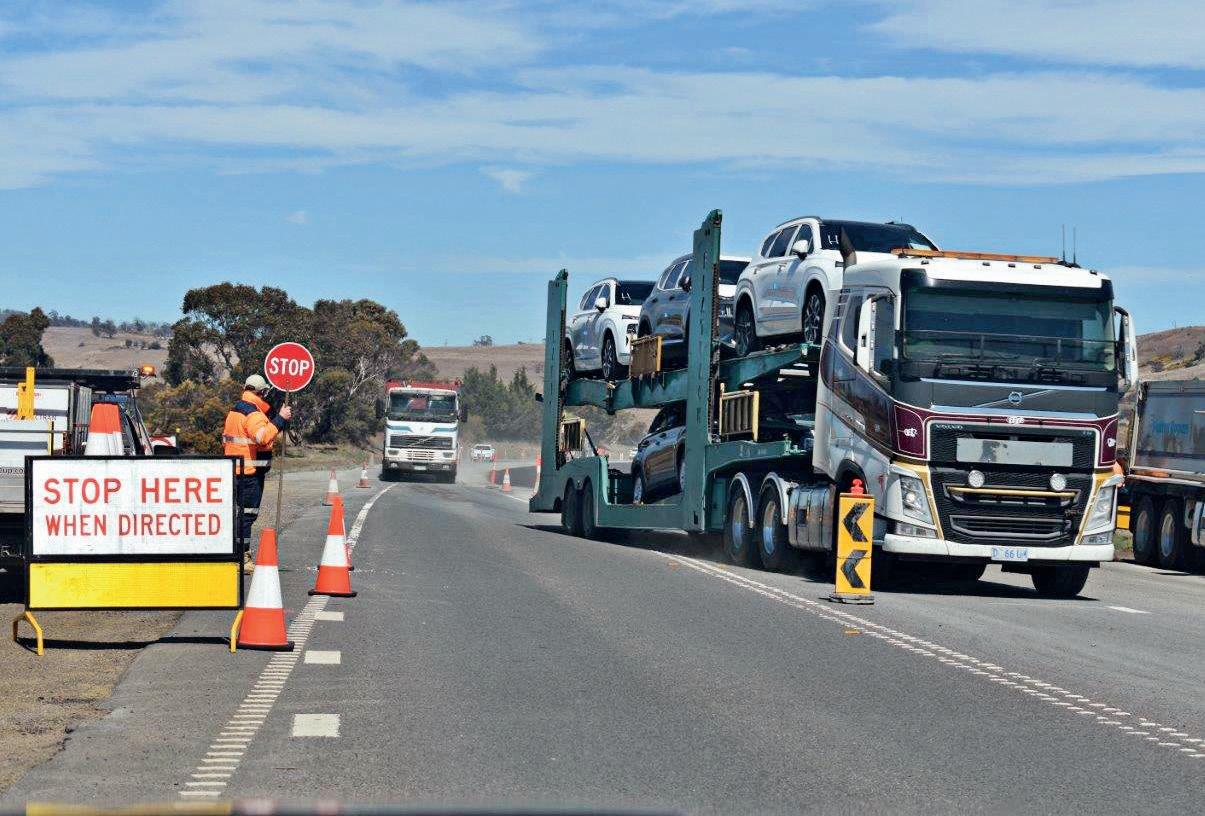
“I can’t understand why it would be cheaper in the Northern Territory than at Deniliquin,” he told Spy.
One lane closures on major routes
Long after the Palmerston Highway and Kuranda Range roads in the far north were closed due to floods, truckies are reporting that travel is restricted to one lane on some stretches.
The Palmerston is a major route from just north of Innisfail to the rich Atherton Tablelands region.
Kuranda Range connects Cairns with the Tablelands and is an access for drivers to deliver further north.
But both are dangerous to drive on and have been the scene of many accidents.
Truck drivers are angry about the delays caused by having to drive slow and wait their turn on the one lane, as signalled by traffic controllers.
Fair rate or empty backload?
During the past three months, Spy has seen occasions when owner operators have refused what they considered an unfair rate for a backload and travelled back empty.
Some of those have told Spy that on principle they would not accept such a low rate. Which is certainly a fair sentiment, and many other small operators would agree with them.
However, a lot of others don’t so opinion is divided on the controversial matter.
Some reckon if the client does offer a low rate and won’t
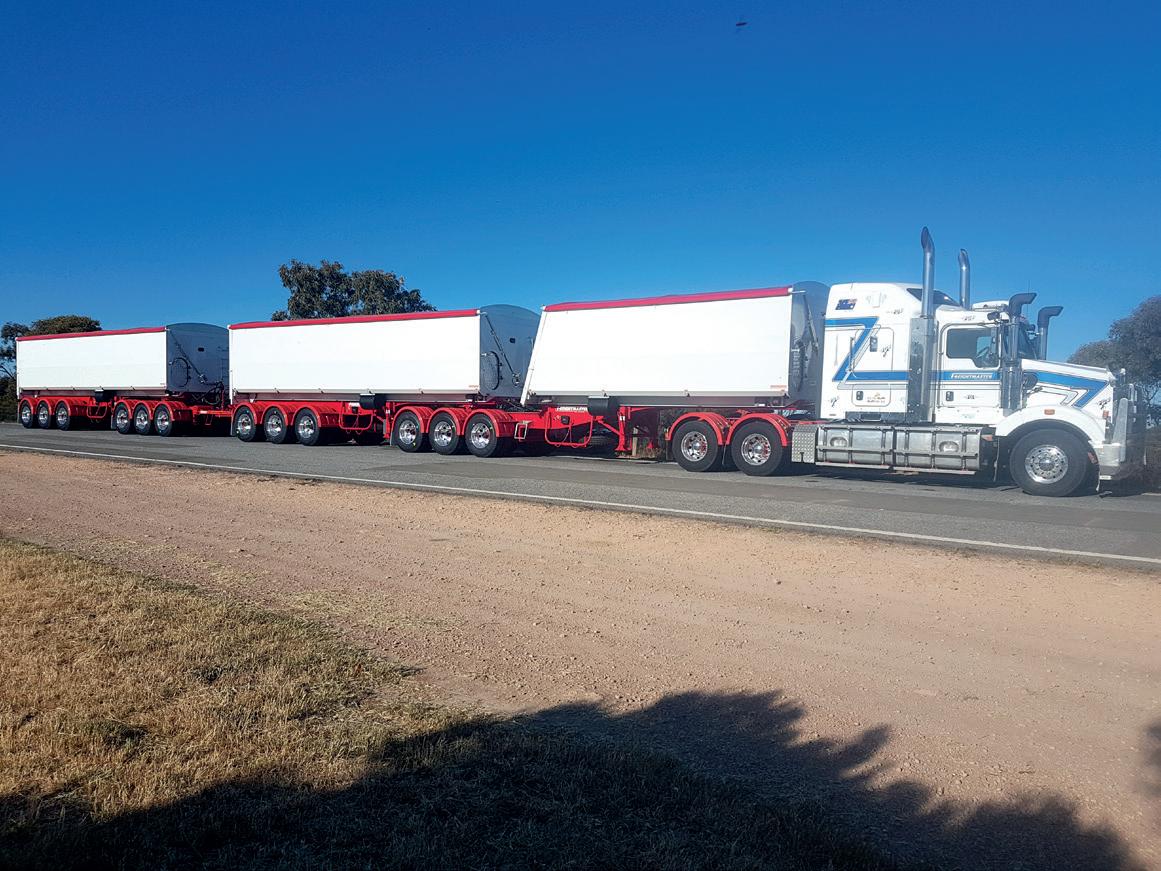
nudge when pushed, why not take the load for some revenue?
They figure that at least some dollars are coming in and the drivers have already made a fair amount on the initial trip.
“The people who offer a terrible rate always get somebody else to take it anyway,” was one comment.
With rising costs this is a never-ending concern for the smaller operators, with opinions varying.
Rest area rubbish
In a recent column Spy was told about a livestock truck releasing fluid from cattle waste from its trailers at a NSW rest
area, leaving a smelly mess.
It is located north of Bourke in NSW at a place dubbed Lyall Hill.
Since then a driver has stopped there and snapped a pic of the rest area which had been cleaned up.
You would have to feel sympathy for the poor workers who had to do the cleaning.
Nude chase after theft
A Victorian driver heard a light rig which was full of gear starting up in the dark of night in a Melbourne suburb.
This lad sleeps in the nude and without time to slip on a pair of pants he raced outside.
The truck was reversing out

of his driveway and without a thought of having no clothes on, he bolted towards it. However, much to his chagrin, the rig drove away as he looked on.
His partner came out after hearing the commotion and told him to get something on or face being arrested. So, he did and then called the police who found the truck the next morning with limited damage.
Some of his mates thought he was telling them a tall tale when he told them what had happened the previous night, to which he replied with some hint of humour: “It is the naked truth.”
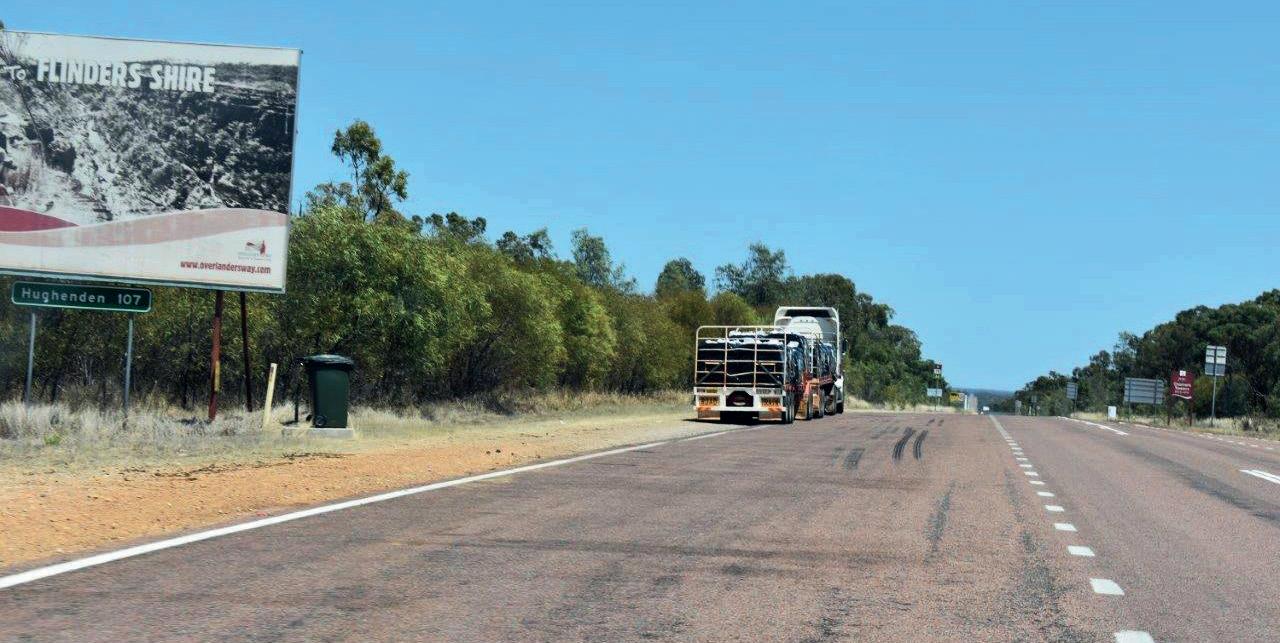




IN decades of talking to truck drivers I have never met another with the hobby that Mackay-based driver Scott James enjoys.
“I make my own beef jerky from topside steak and always carry a bag of it in my cabin,” he said.
The 54-year-old truckie drives a Kenworth T610 for Lindsay Transport and was hooking up a trailer at the parking area of the BP Cluden when he stopped for a chat.
“I have bananas which after I change over at Mackay will be heading for Brisbane. I brought up Visy board,” he said.
Scott has been a truck driver for 35 years and loves working for Lindsay Transport, which he’s been with for a year.
For some years Scott had been an owner-operator based at Goulburn in NSW.
“The costs owner drivers have such as fuel are high, so it is good to work for a company,” he said.
I asked him the main reason he is such a happy driver.

“Because I do the shuttle run between Mackay and Townsville and am home every night,” he said, adding that he also loves the Kenworth.
“It is almost new. Only a few months old and has an automatic gearbox and is powered by a 550hp motor,” Scott said.
He rates many parts of the Bruce Highway as the worst he gets along. Before I left, Scott offered me a sample of his homemade beef jerky – how could I refuse?
The verdict is that it was delicious.
TRUCK driver Janitta Kippen, 29, delivers produce around North Queensland in her job for Geoff Richards Transport.
She drives a Kenworth T909 powered by a 600hp motor and with an 18-speed road ranger gearbox.
I spoke with her after she walked into the eatery of a Townsville Roadhouse.
“I get around the north to Cairns, Mareeba and Mackay from Townsville and love the job,” she said.
“There is a lot of bananas, tomatoes and avocados moving now.”
Asked about what led her into trucking, Janitta said,
“I started because my dad Andy had a quarry company in Mackay. I got my licence when I was 19.”
Janitta rates many parts of the Bruce Highway as bad which is a common opinion of many drivers.
“The Townsville to Rockhampton section is not good and also around Gin Gin,” she said.
As for rest areas, Janitta said more are needed especially with lots of parking spaces for trucks.
“We always see vans parked at them,” she said.
Before this job, Janitta was employed by Exodas for four years, driving a Kenworth K200 from a base at Yatala in southern Queensland.
As for roadhouses, Janitta said she liked the BP Clud-
en and also the Bluewater Springs along the Gregory Development Road.
“I take a lot of my own frozen meals with me on trips. My favourite food is silverside,” she said.
I snapped her pic in
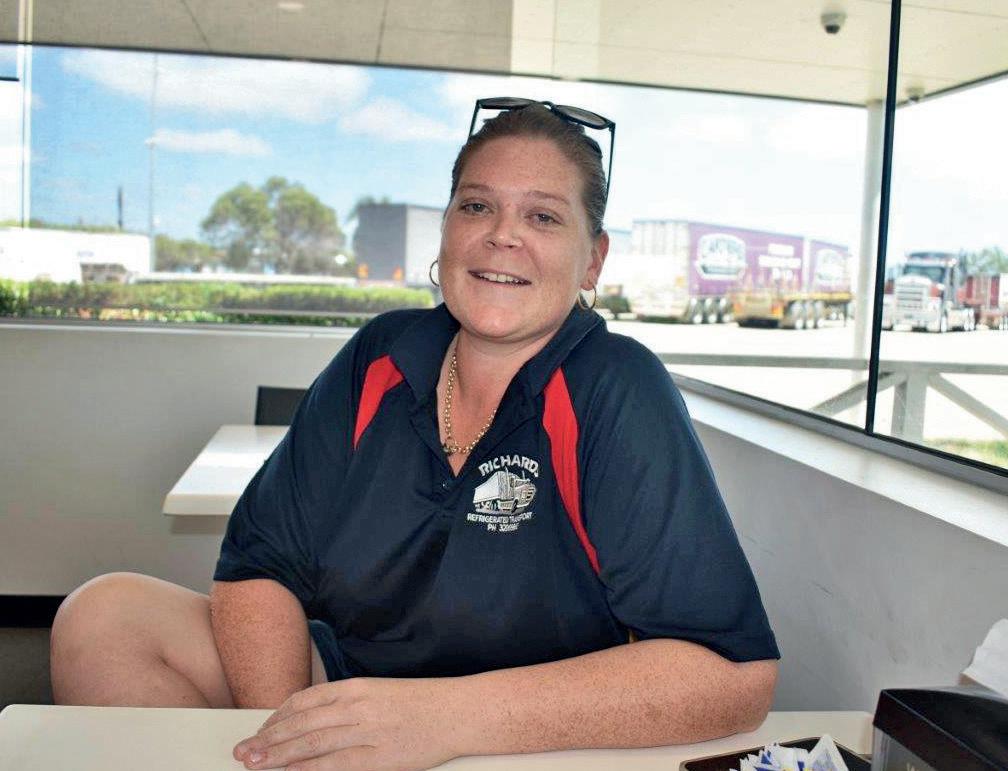







WITH just a few days to go, its full steam ahead for the Technology and Maintenance Conference (TMC) which will be held at the Kangan Automotive Centre of Excellence in Docklands, Melbourne from October 21-23.
Sponsored by PACCAR Parts, the event is the trucking industry’s premier national gathering featuring truck service and maintenance professionals from fleet and workshop managers, technical regulators, mechanics and service technicians. With over 24 sessions and hands-on workshops, TMC has secured an impressive lineup of over 40 speakers to share the latest industry insights, technology updates and best practices over two full conference days.
Check out the TMC Ex-
hibitor area and interact with a diverse array of suppliers, manufacturers, telematics operators and industry professionals.
Find out more about the exhibitors on the TMC Exhibitor page (TMC Exhibitors | ATA (truck.net.au))
Other program highlights include:
PACCAR Parts Fun Night – Monday, October 21 (5.30- 8.00pm)
The event is returning to the much-loved venue, the Fox Collection Classic Car Museum, promising a night to remember for all attendees. Known for bringing together industry professionals in a relaxed and entertaining atmosphere, you’ll get to prove that your Scalextric slot car
skills haven’t gone away – except this time it will be on a large-scale slot car track. There will be plenty of opportunities to win fantastic prizes, provided by the amazing sponsor PACCAR Parts.
Building connections for business successTuesday, October 22
Developing deep connections and partnerships with suppliers and customers is a key to doing business in the trucking industry. How we used to connect with people is very different to the way it’s done today, with technology playing a huge role. How do we strike the right balance between new age digital connections and old school personal relationships for business success? Join PACCAR Australia Managing Director

Damian Smethurst for this thought-provoking keynote, which will also include an update on the state of the industry.
Truck and trailer driver assistance technology and braking – Tuesday, October 22
Join TMC for workshop and live demonstration sessions, such as this one.
Gain a comprehensive overview of the latest safety and electronic systems for heavy vehicles and trailers, available from factory or through aftermarket fitment.
Witness a live demonstration featuring a vehicle and road train trailer electronic braking setup, showcasing best practices for achieving optimal braking compatibility – a TMC first!
Its Here- the Technical Q&A – Wednesday, October 23
TMC’s signature session – the Technical Q&A – is back for 2024.
If you have questions about defect notices, compliance, or vehicle standards, be sure to submit them in advance. Our panel of judges will address your inquiries and provide valuable insights.
Hosted by Rachel Michaud from Knorr-Bremse, the panel will include—
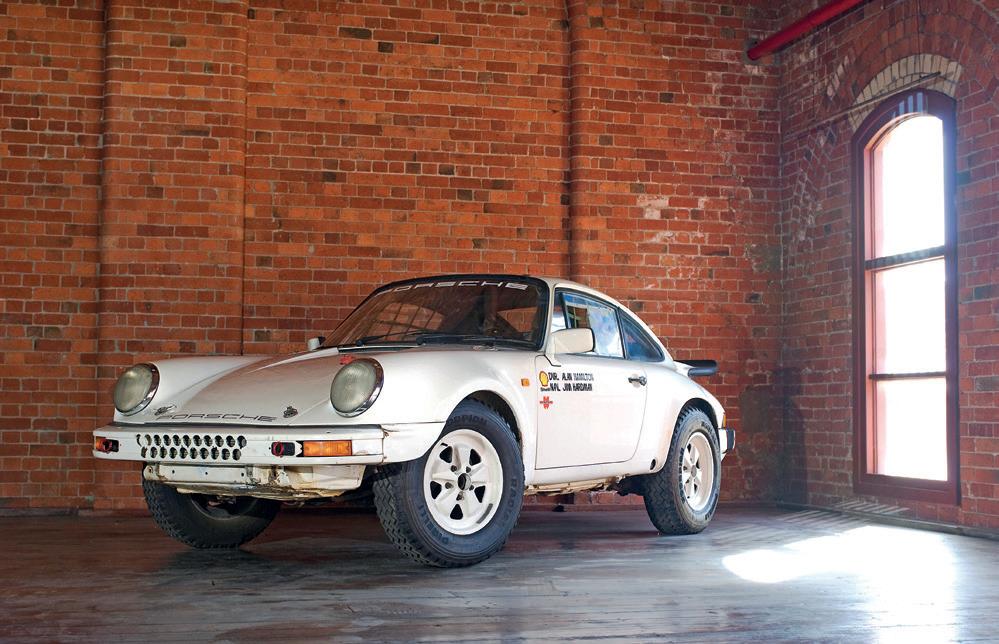
• the director of the NHVR’s Central Region, Brett Patterson
• the NHVR’s director of policy implementation, Peter Austin, and
• the workshop manager at Herb Blanchard Haulage, Chris Blanchard, EBS maintenance from compressor to wheel end – Wednesday, October 23
Shane Pendergast from Air Brake Systems, will lead this ground floor workshop by reviewing EBS maintenance issues all the way from the compressor to the wheel ends, with topics including—
• the importance of having a good compressor that supplies clean air
• service intervals for brake valves
• adjusting brake components, and
• the value of regular roller brake testing.
Smart OBM –Productivity, Safety and Sustainability –Wednesday, October 23
Join representatives from Teletrac Navman, Airtec, TCA and Air Brake Systems for a discussion on smart OBM. Discover how regulatory telematics, Smart OBM and TEBS technology are improving both productivity and safety outcomes industry wide and how this data is critical to measuring and managing CO2 emissions to meet your sustainability goals. Check out the full program line-up at https://truck.net. au/tmc/.
Whether you’re planning to attend just for the day, get the new Fun Night +One day combination pass or keen on a full 3-day conference experience, secure your ticket today. Book here: https://truck. net.au/tmc/. Ticket sales close on Sunday, October 13.
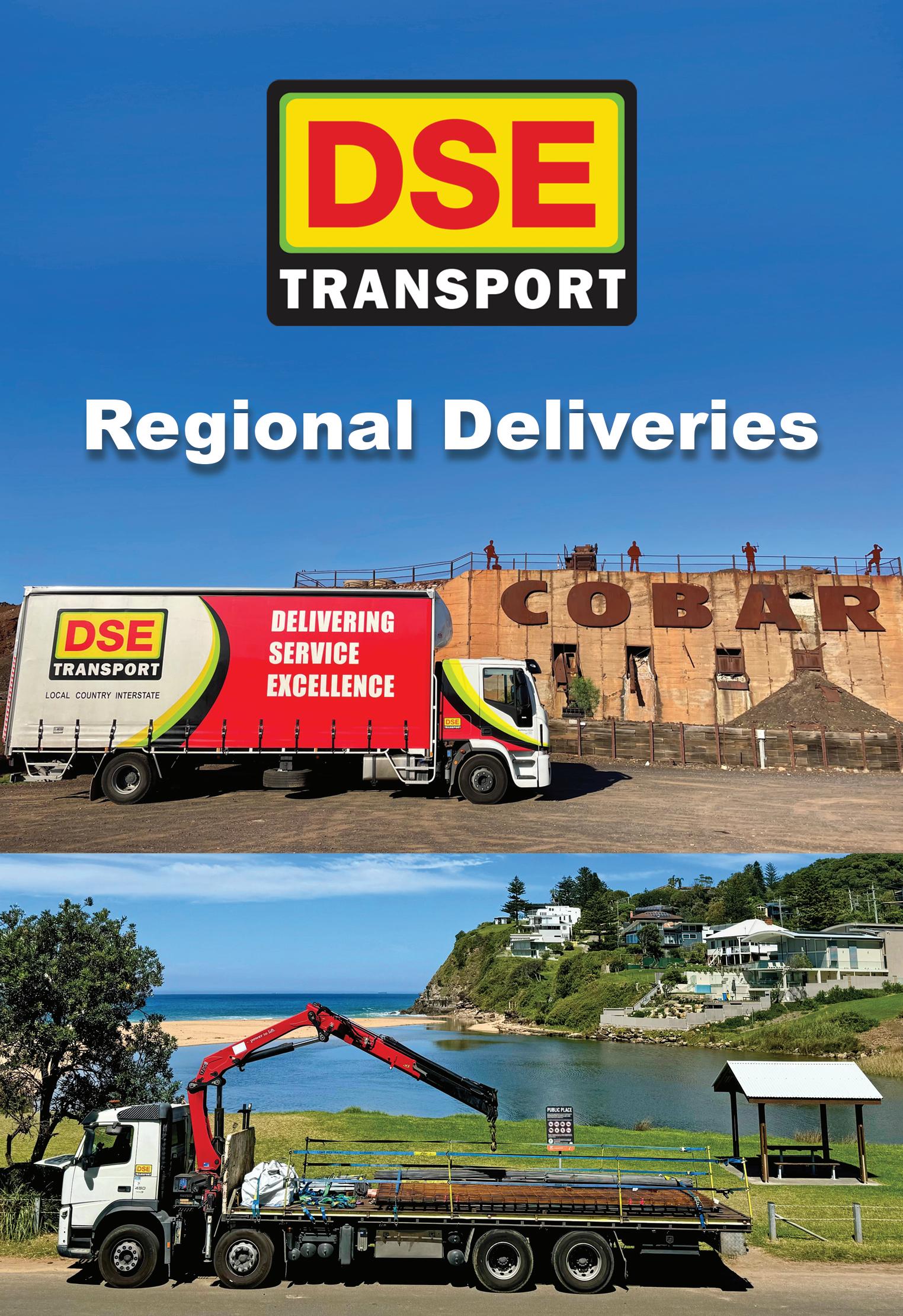
BY KAYLA WALSH
NATROAD’S Professional
Driver of the Year 2024 has said you’ve got to “do your homework” if you want to stay safe on the roads.
James Ellison from Ditton Bulk Haulage, who was presented with the coveted prize at NatRoad’s annual conference in Coffs Harbour last month, has been a truckie for 12 years without a single incident.
At the awards, he was praised for his impeccable safety record, and he told Big Rigs that it’s all the “one per cent things” that make all the difference.
“Especially if you’re in a road train or B-double, you’ve got to help yourself out,” he said.
“If you get a load and you’ve never been there before, you do the one per cent – that’s making a phone call, introducing yourself, checking what time they are open until.
“You make sure you know what sort of weight you’re carrying, what load restraints you need, what PPE you need.
“Use the tools available to you – go on Google Earth and have a look at the map, zoom in on the entrance and exit.
Forward planning is a must.”
Ellison, who drives interstate and carts everything from tanks to ammonium nitrate, said he sees someone


doing something stupid on the road every single day.
“It doesn’t matter where you are in Australia – the problem is, everyone’s in a rush these days.
“Truck drivers are the most patient drivers on the road, not because we want to be but because we have to be, because we’re driving killing machines.
“We need to operate with courtesy and care.
“We’ve all got to make a mile, but at the end of the day, it’s not worth dying or killing someone for. It’s just freight.” Ellison said it all comes back to licensing and training.
“There’s been a lot of talk about licencing, especially around MC licencing and potentially splitting that class up.
“There are plenty of companies that will just get someone straight through to their MC with hardly any experience, put them in a B-double and away they go.
“I think that needs to change.”
He also thinks car drivers need more education around how to share the road with trucks.
“They don’t understand how long it takes us to get up to speed and to drop speed, and they’ll try to sneak up the inside of you when you’re turning.
“You’ve got to be so aware of your environment all the time.”
Despite the challenges facing drivers today, James still loves trucking.
“I love trucks, but it’s not just about that,” he said. “I love the whole scene. I love the freedom.
“Every day is a new challenge, and it provides a good income for my family.”
He encourages other drivers to try to stay positive when they go about their day.
“It’s about putting on your boots every morning with a good attitude.
“You can have a shit day
73 Formation St, Wacol

but if you can turn up with a smile on your face and make someone else’s day a bit better, they’re going to remember you.
“It’s about building those relationships with the people that you deliver to and for.”
He shared some advice for young truckies getting into the industry.
“I was very lucky that I had some great mentors and I was given the opportunity to try some really nice gear when I was coming up.
“Young fellas coming up need to grab the old boys and ask them questions, and listen. There’s so much knowledge out there.
“If someone’s willing to show you something, don’t think you know it all, because some silly looking old bugger might teach you something that’s the best thing you’ve ever been taught.”


Easter Group, located in Wacol, provides time sensitive road transporting solutions to many companies throughout Queensland, New South Wales, South Australia and Victoria.
We are a family owned business, operating since 1976. We currently have the following positions available: OPERATIONS ALLOCATORS
(Brisbane based only)
You will be required to work on a rotating roster including Days-Nights-Weekends
Previous Operations experience preferred.
(Brisbane, Sydney, Melbourne and Adelaide Based)
Come and work for us as we are committed to:
• Training and further education • Your safety
• Maintaining an impressive Fleet
On offer are permanent full time and roster positions including paid leave entitlements and public holidays. Drivers will need to be available to be scheduled for work falling across the 7 days of the week.
The successful Applicant will:
• Hold a current MC licence (minimum two years)
• Have knowledge of the HVNL and Load Restraint • Be professional • Be reliable
To apply for the Operations/Driver positions please contact Operations Manager or by emailing your resume to WORKSHOP
(Brisbane based only)
To apply for Mechanic positions please forward your resume to Workshop Manager via email to employment@kseaster.com.au

nationally and has a strong commitment to customer service, safety and compliance.
Having recently expanded our fleet, we are currently looking for new Team members who can continue to build that reputation. We have some great opportunities for the right professional person looking to begin a new career with our iconic Mildura based business.
Does this sound like you?
• I am looking for an employer who values and respects me
• Wanting to drive fresh, well maintained equipment (predominant Kenworth based fleet)
• I have a great attitude, and I am looking for a stable, secure future
• I would like to have work patterns that suit my lifestyle and personal circumstances
• I am a safe, professional driver that cares for my equipment and the freight I am carrying
• Great earnings potential
• MC Licenced with night highway driving experience and a good history as an operator
If this is you, then GTS can provide that opportunity!
GTS currently has career opportunities for roles around the country for MC Interstate Drivers.
For more details and application forms, please go to gtsfreight.com.au and clickon the Careers drop down menu, online at seek.com.au or call (03) 5051 0100 or email your resume and cover letter to hr@gtsfreight.com.au



